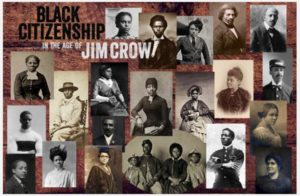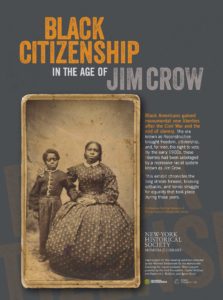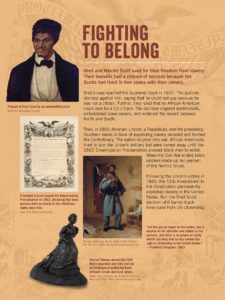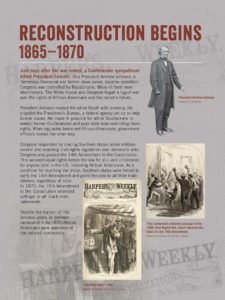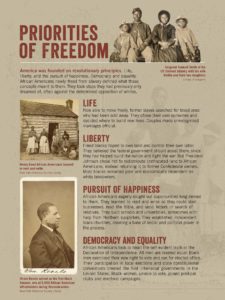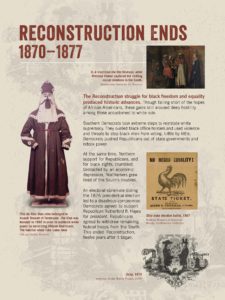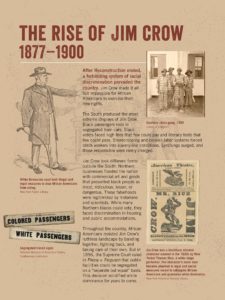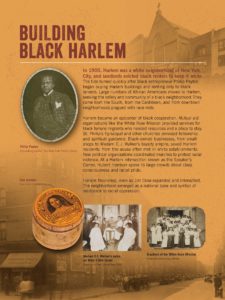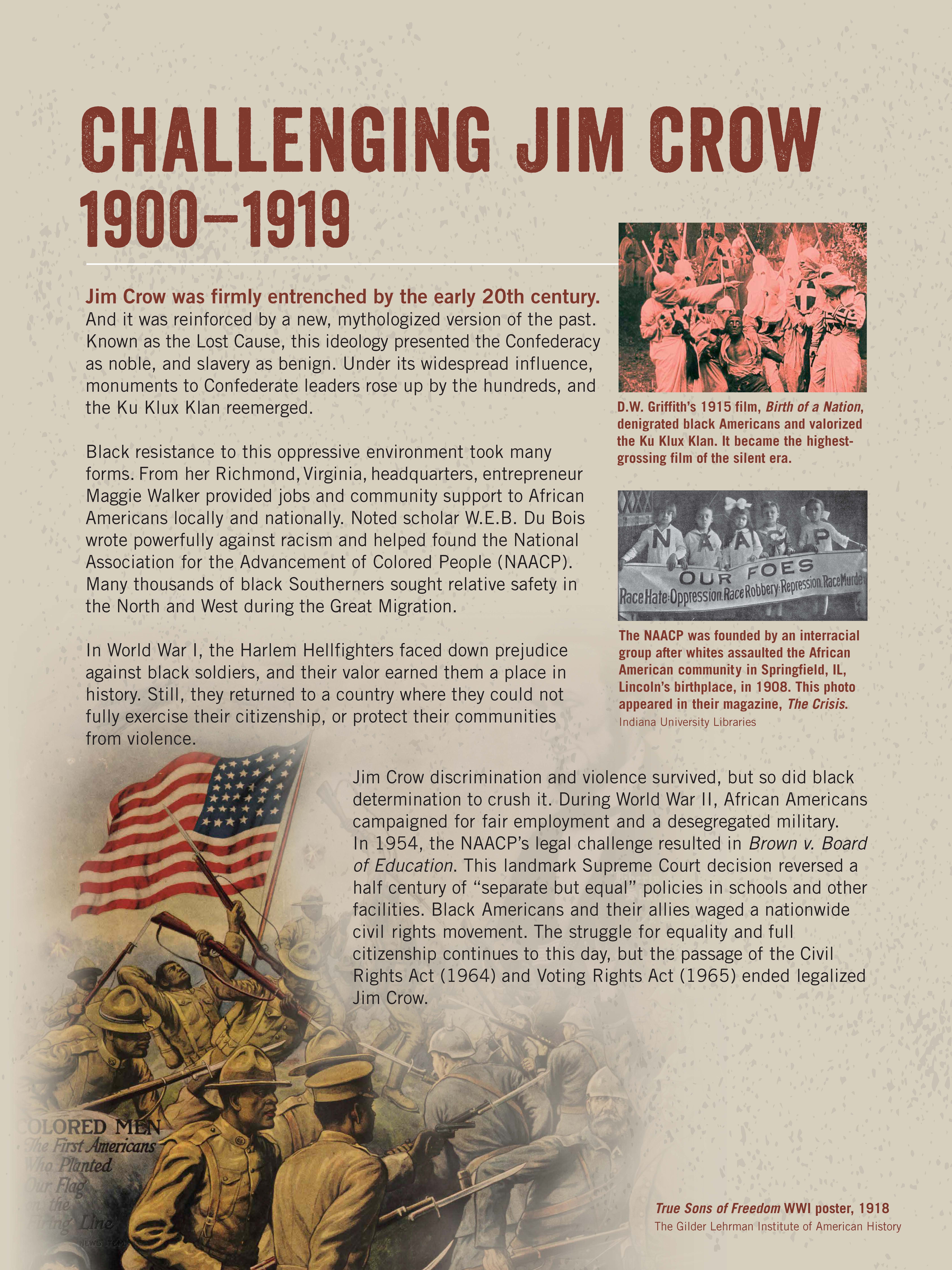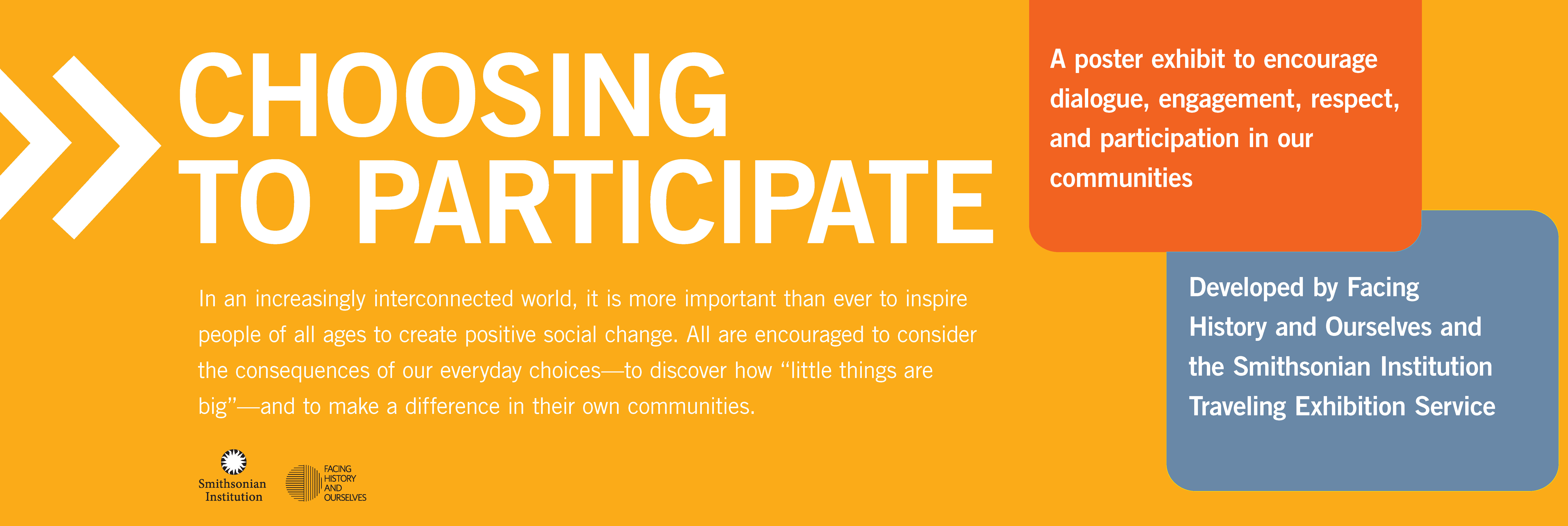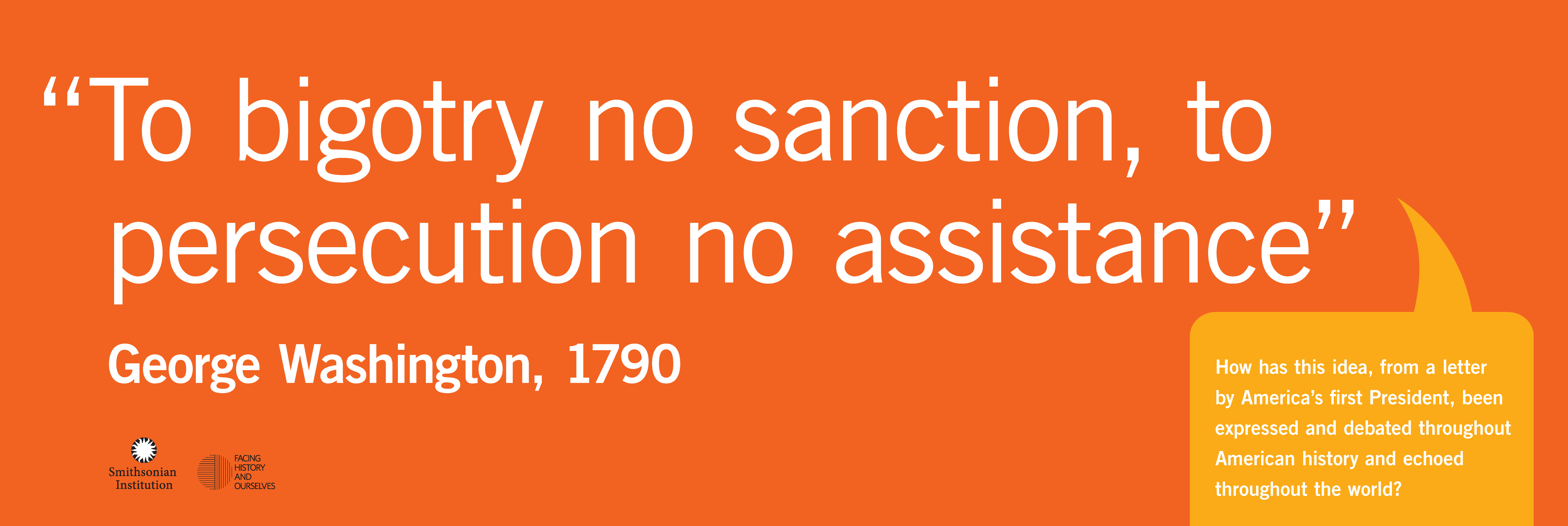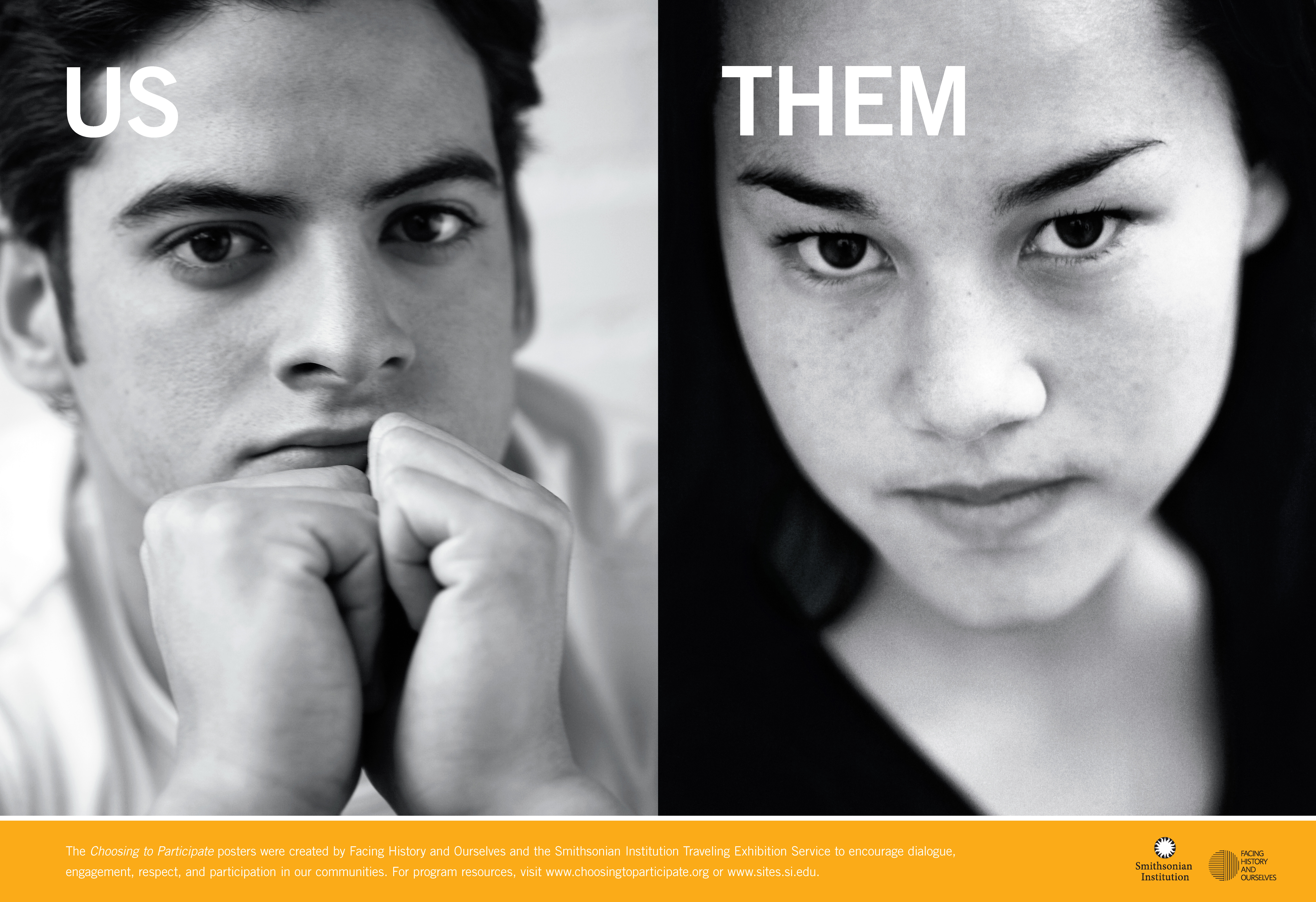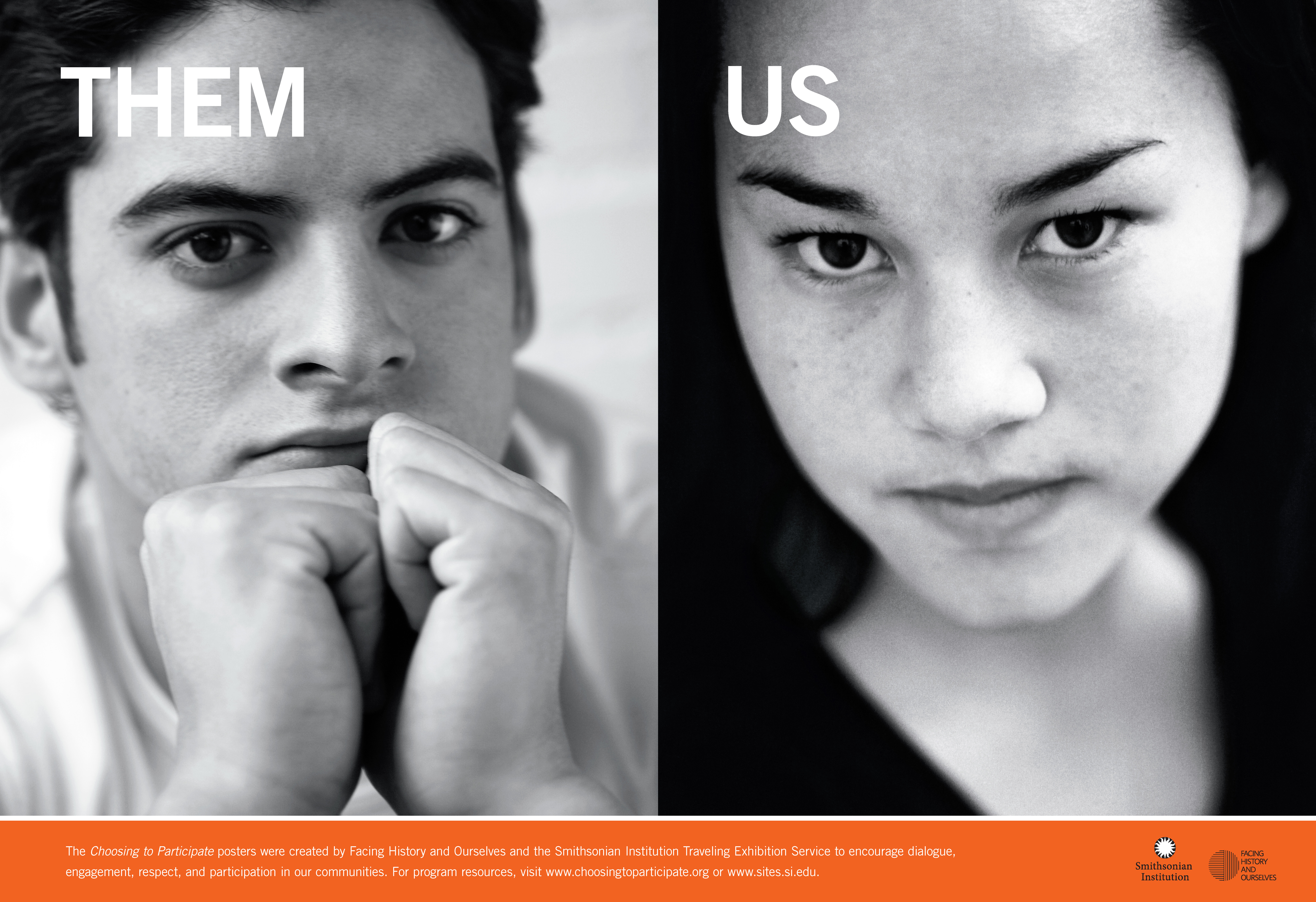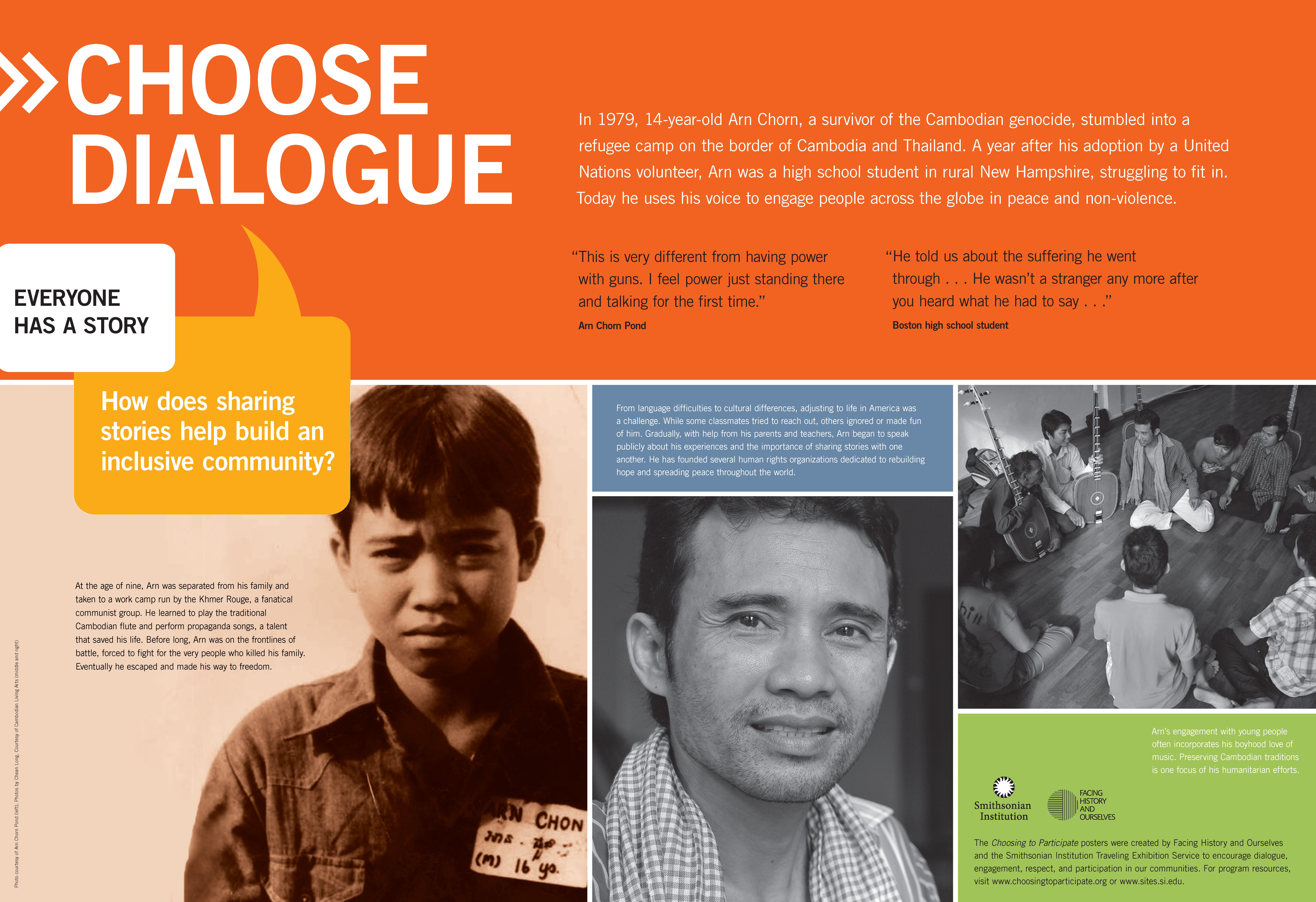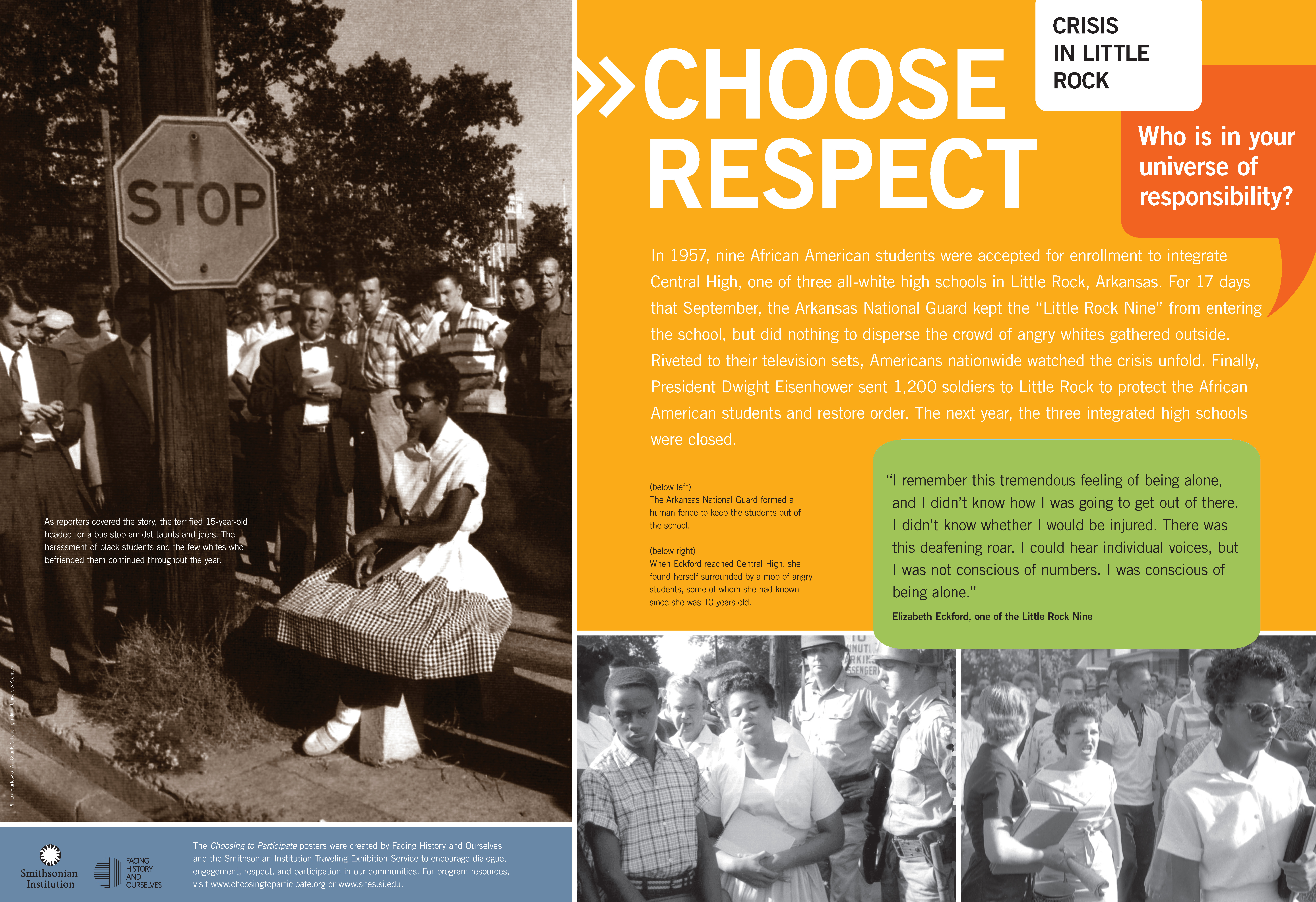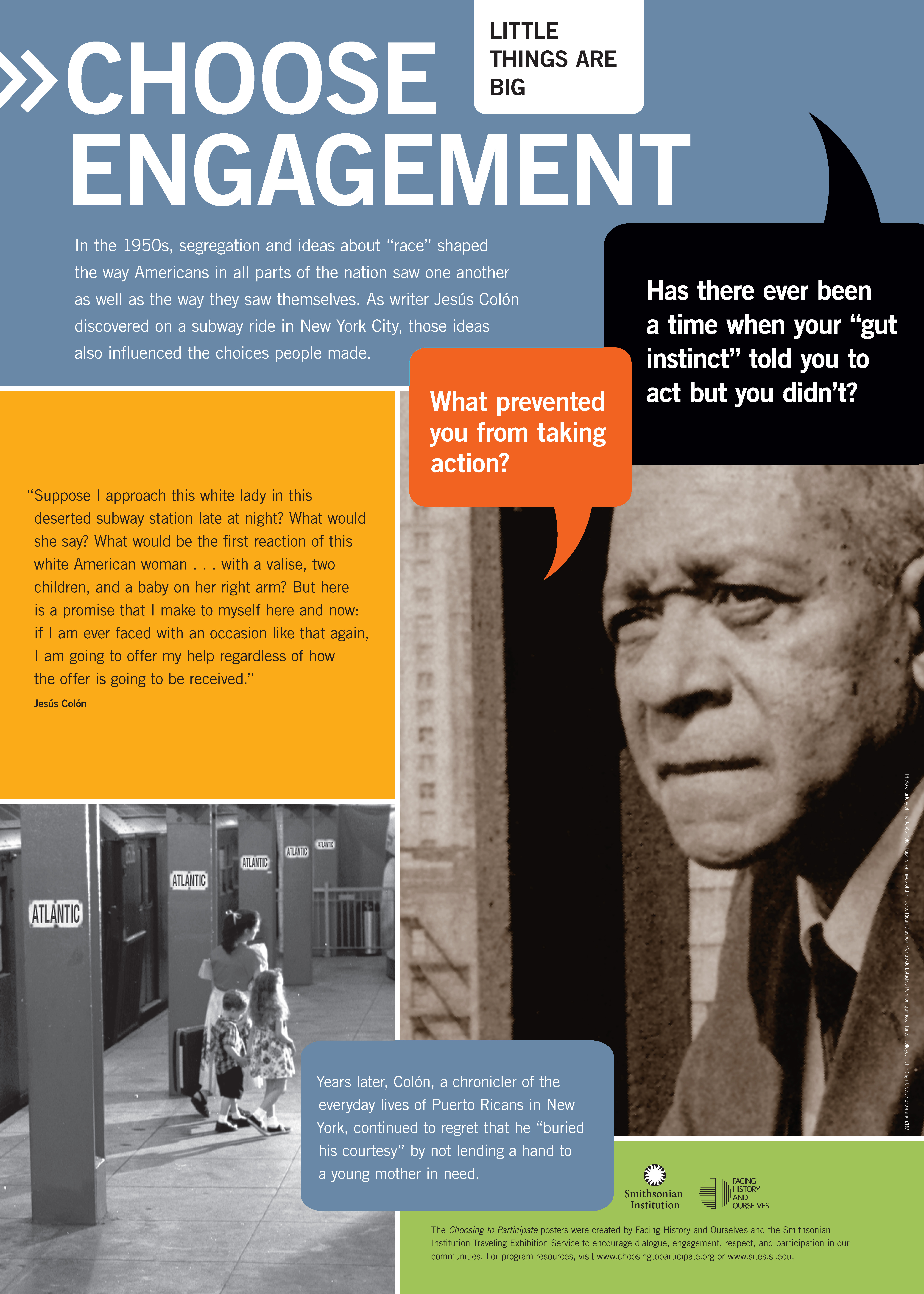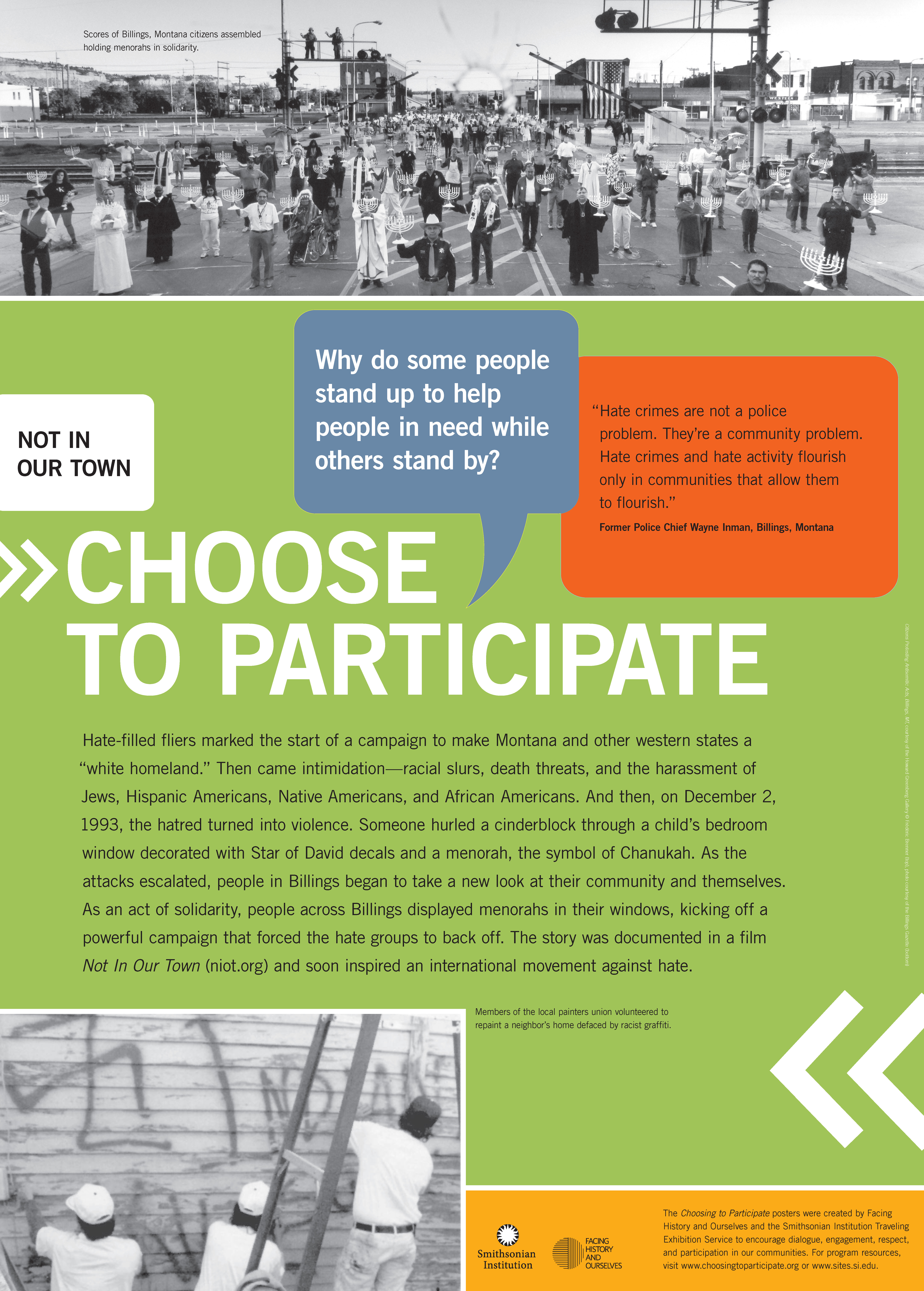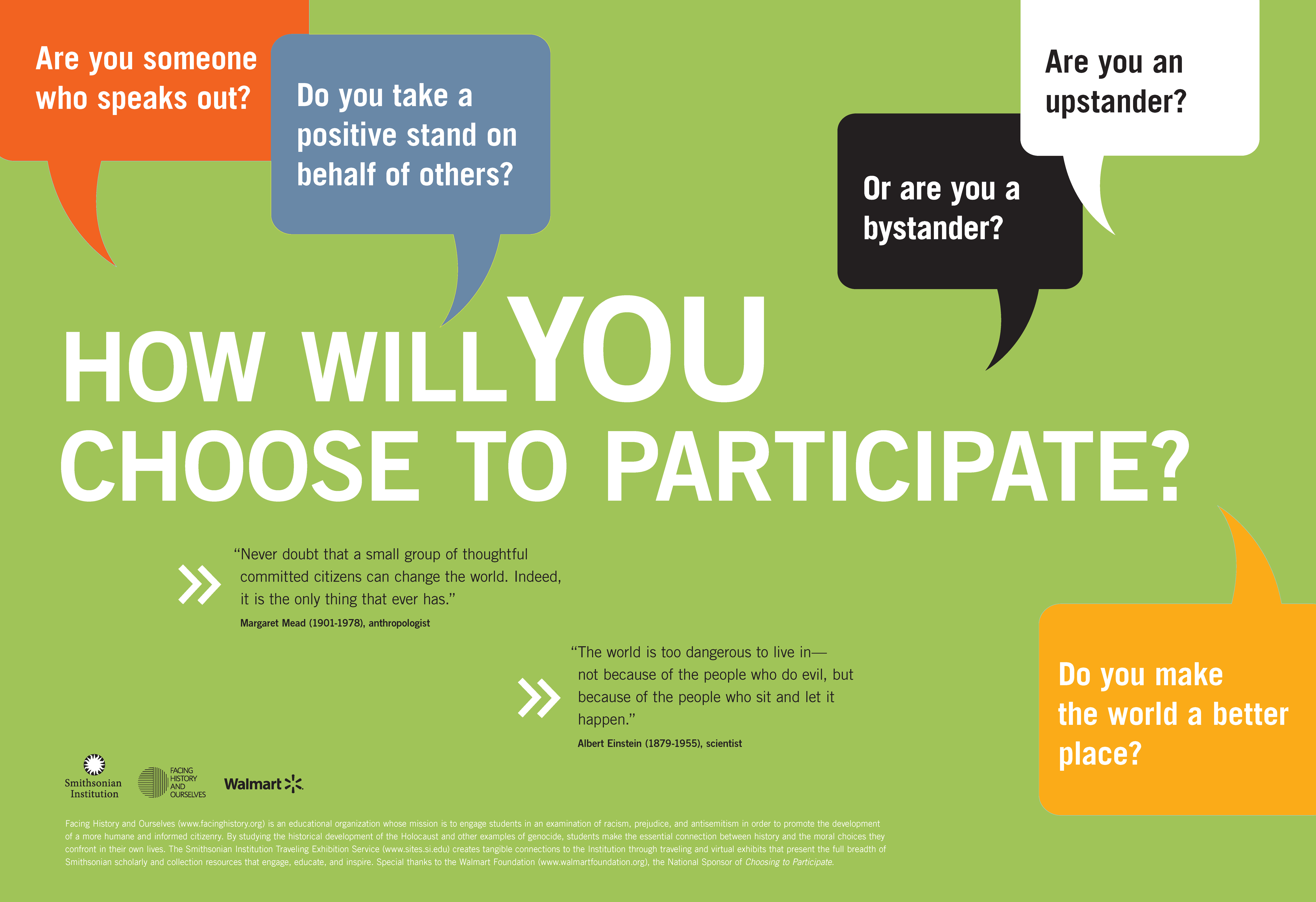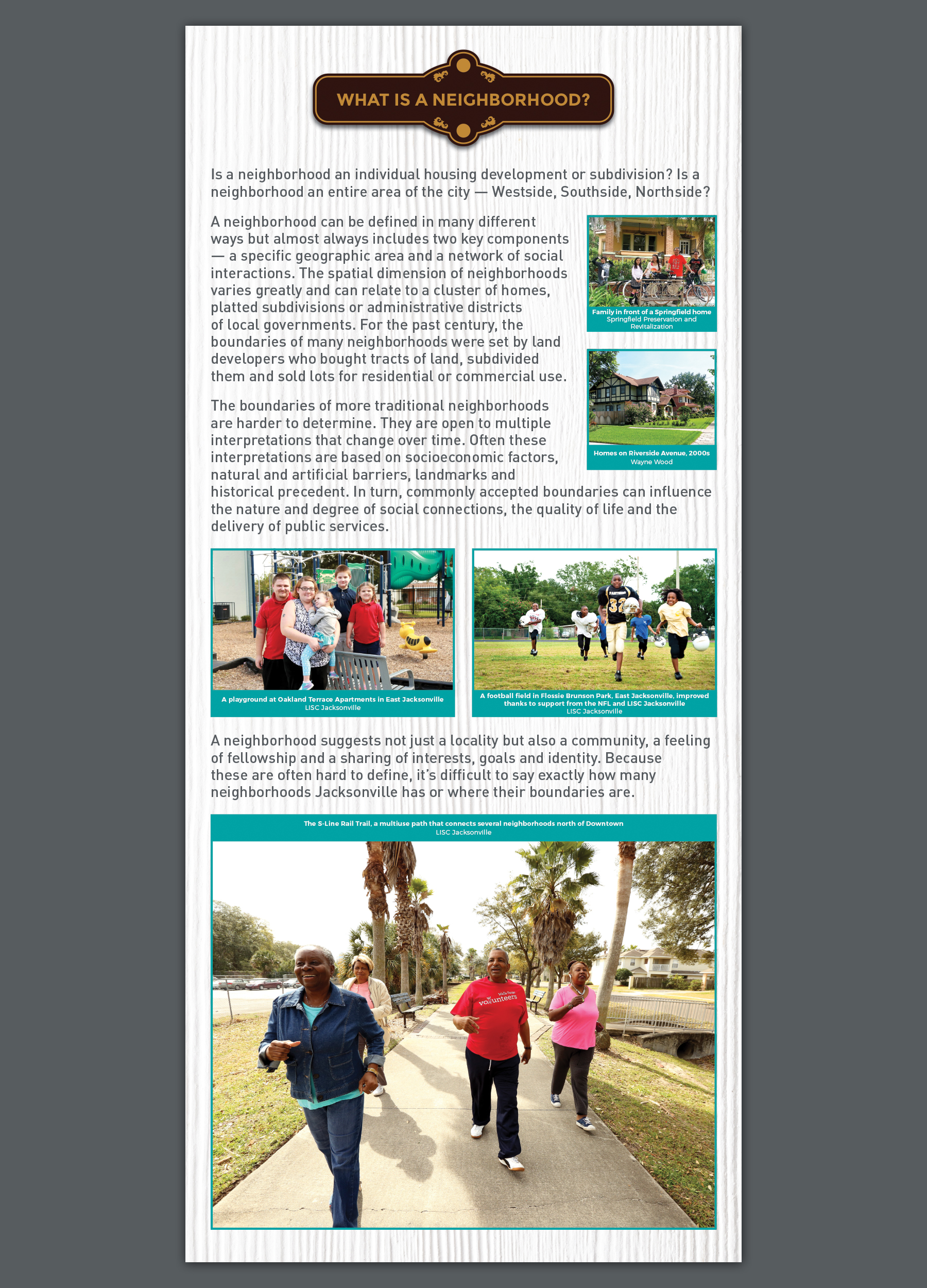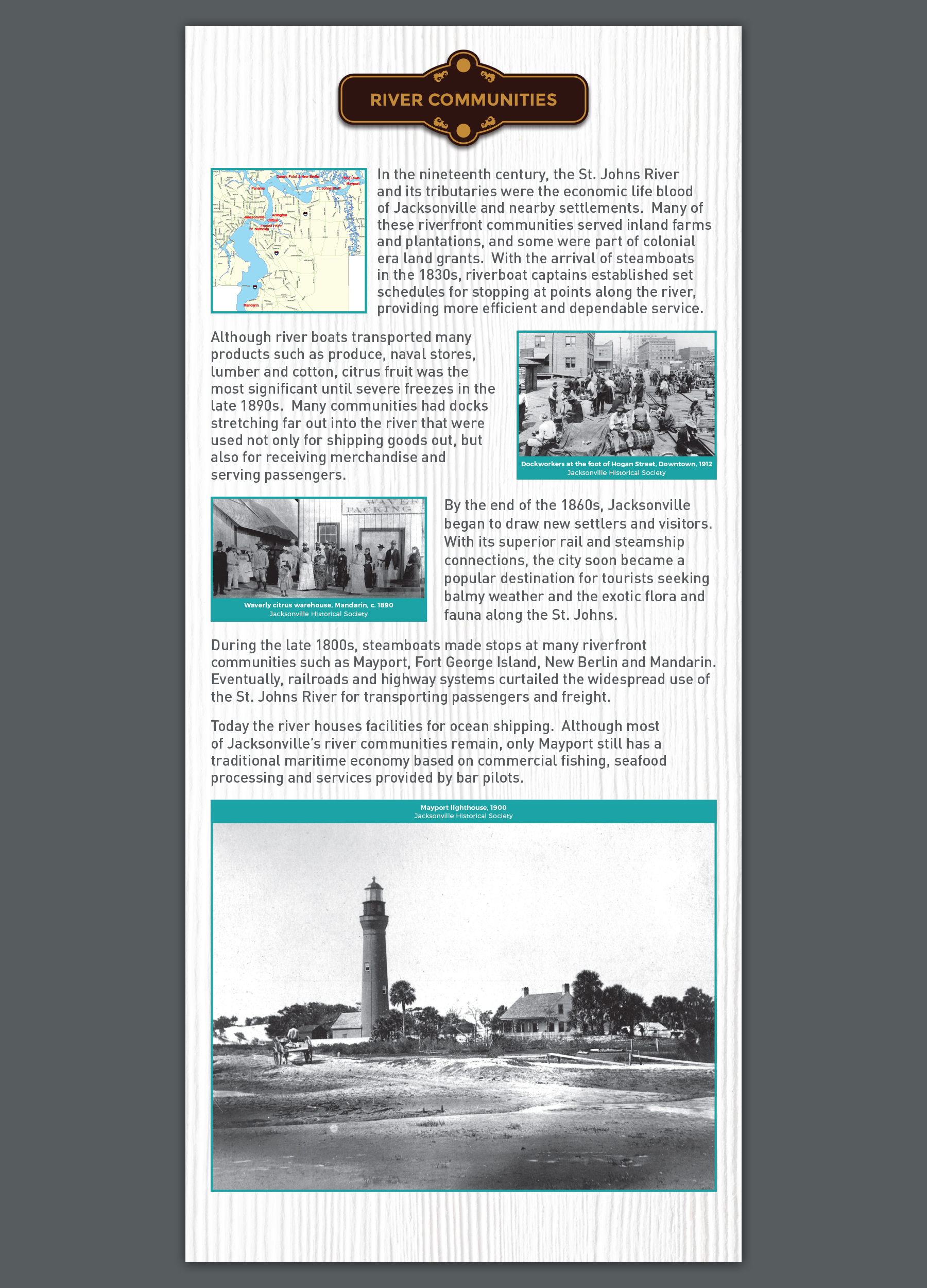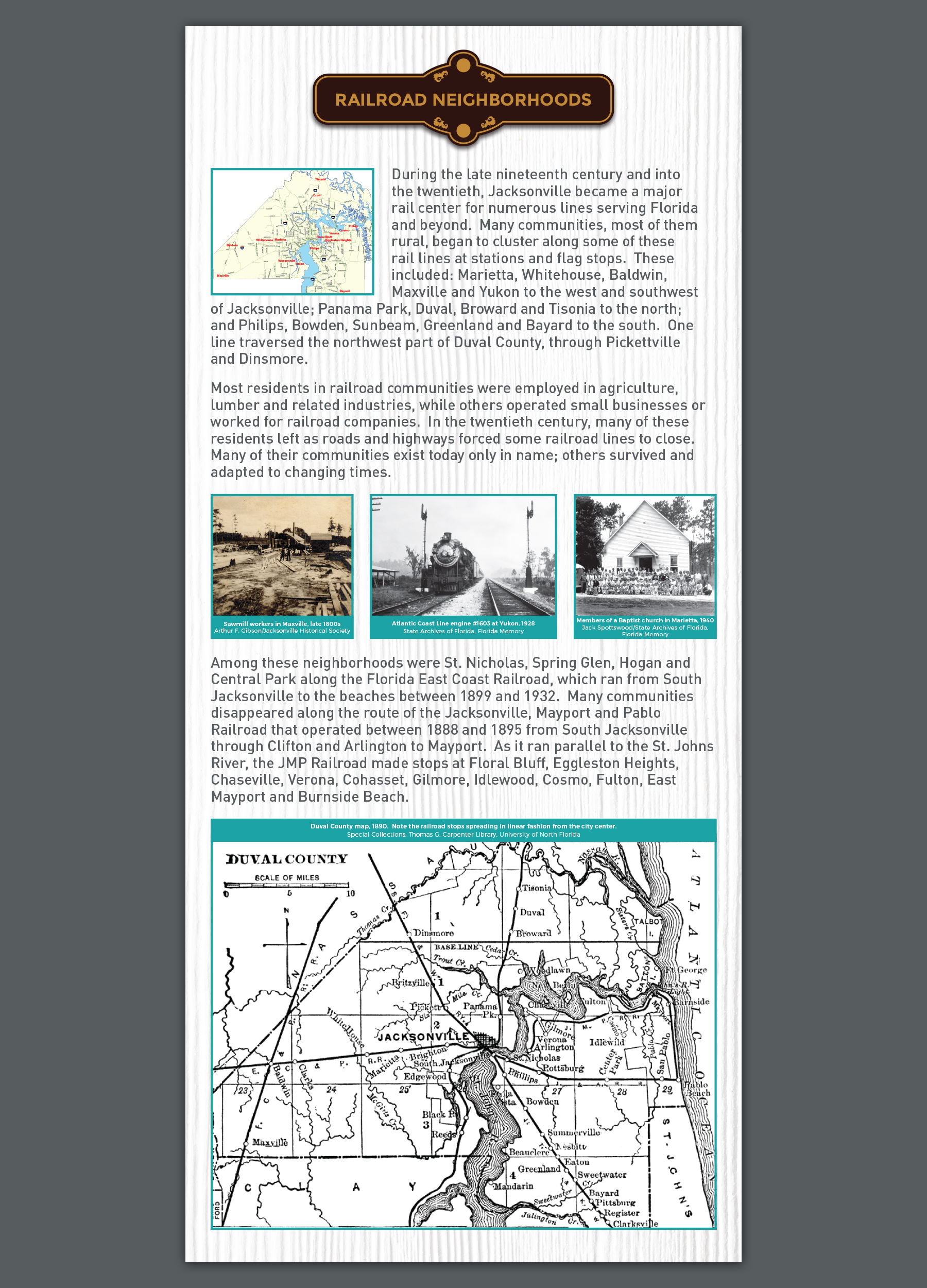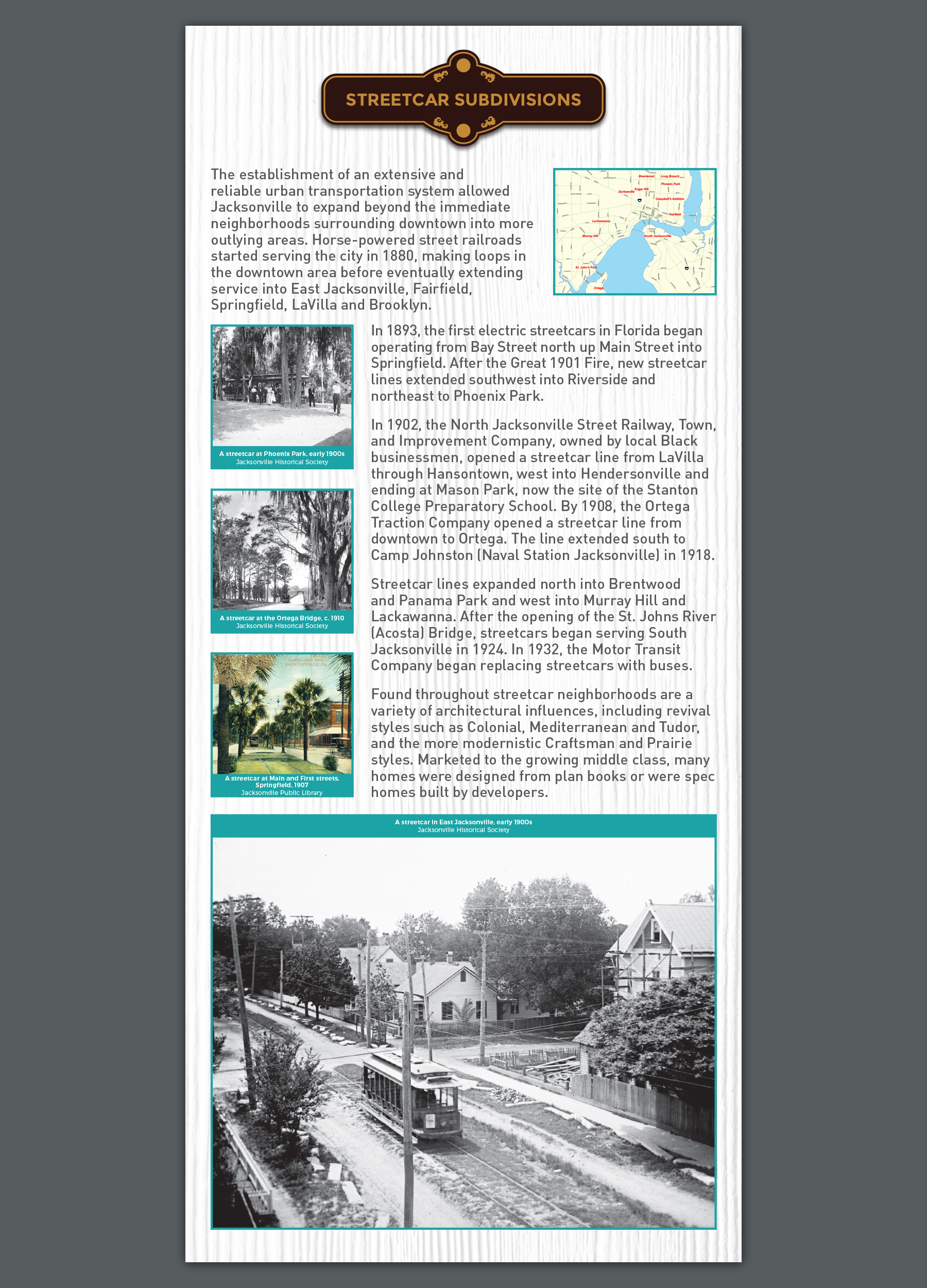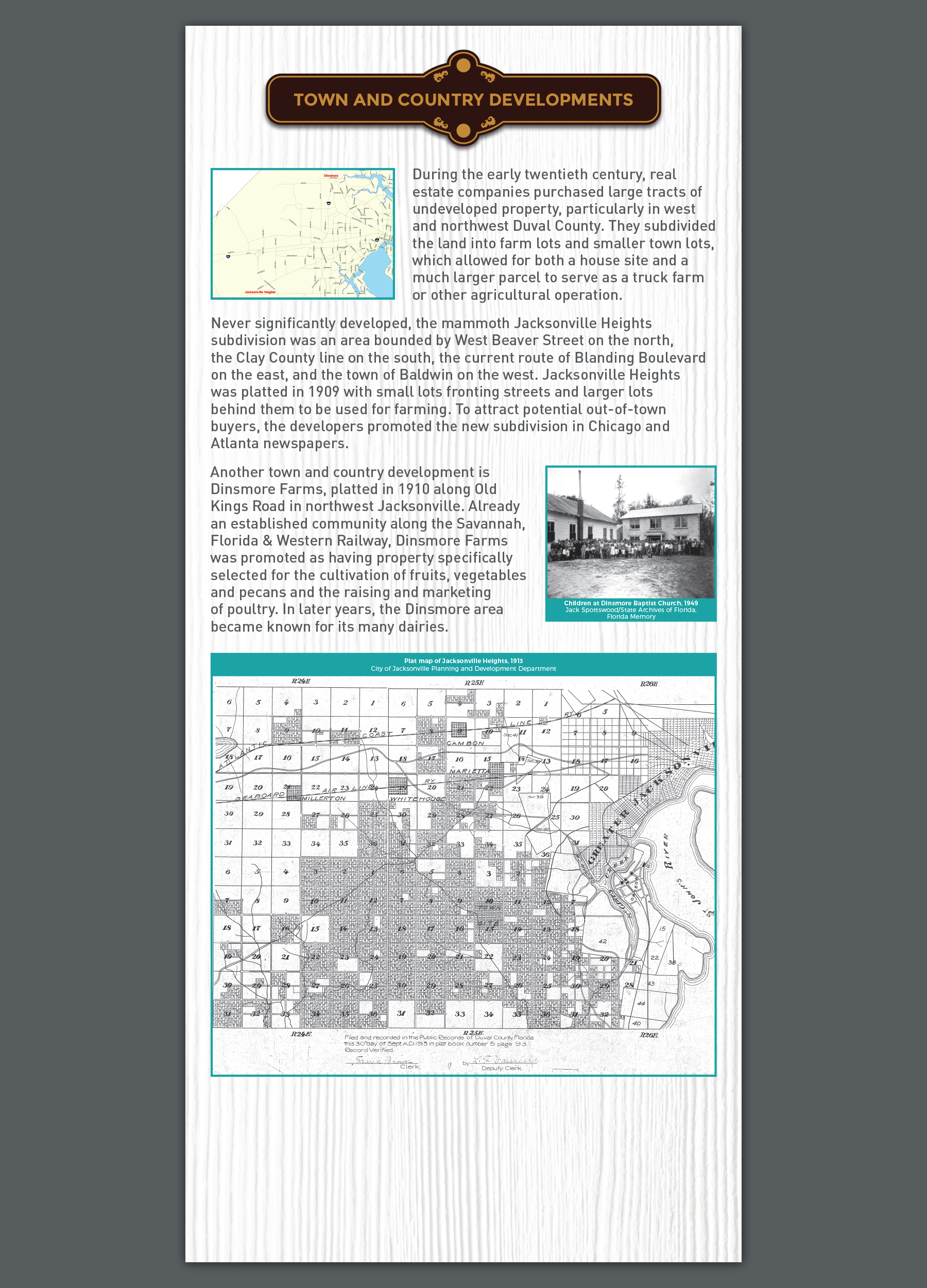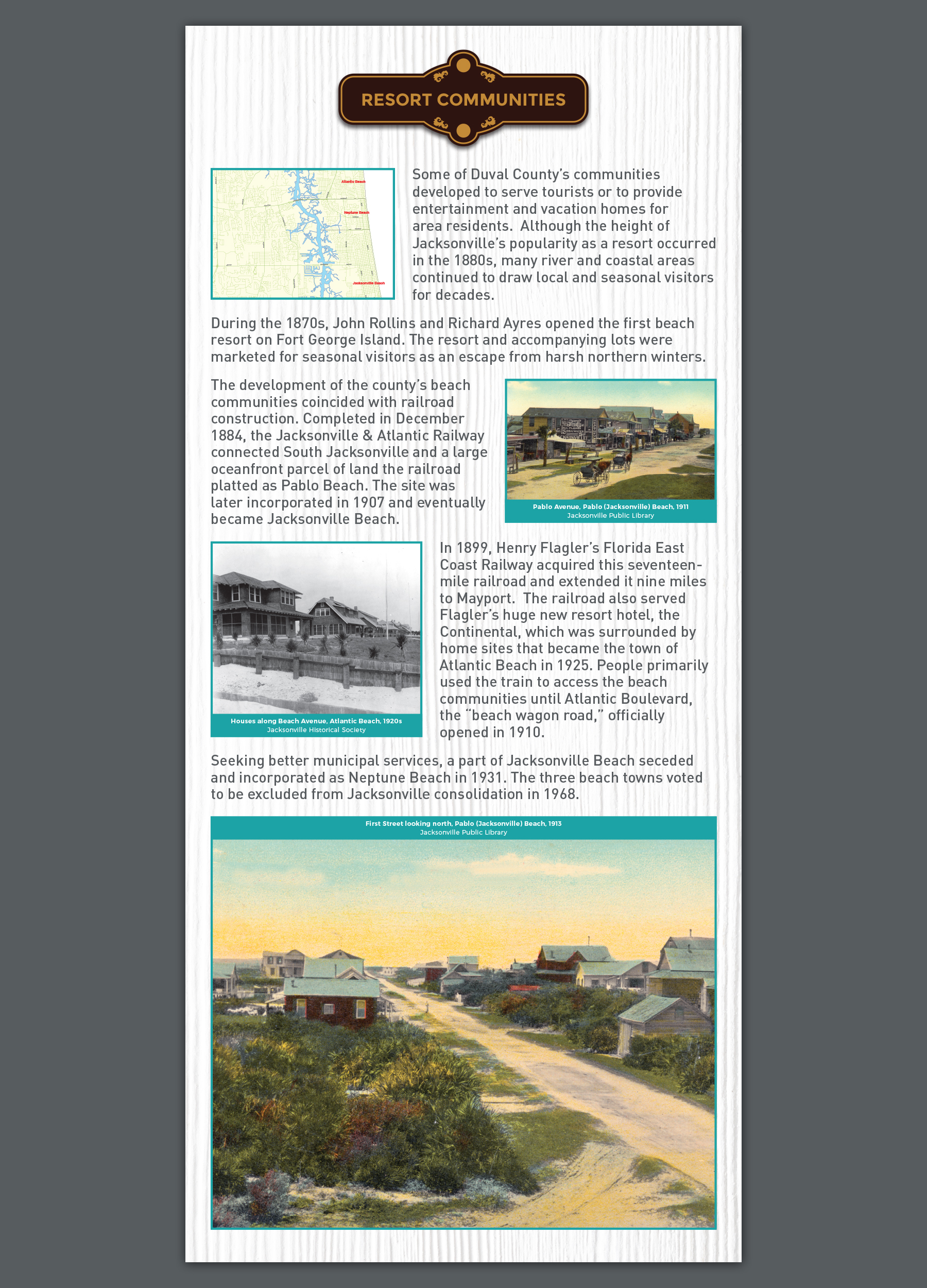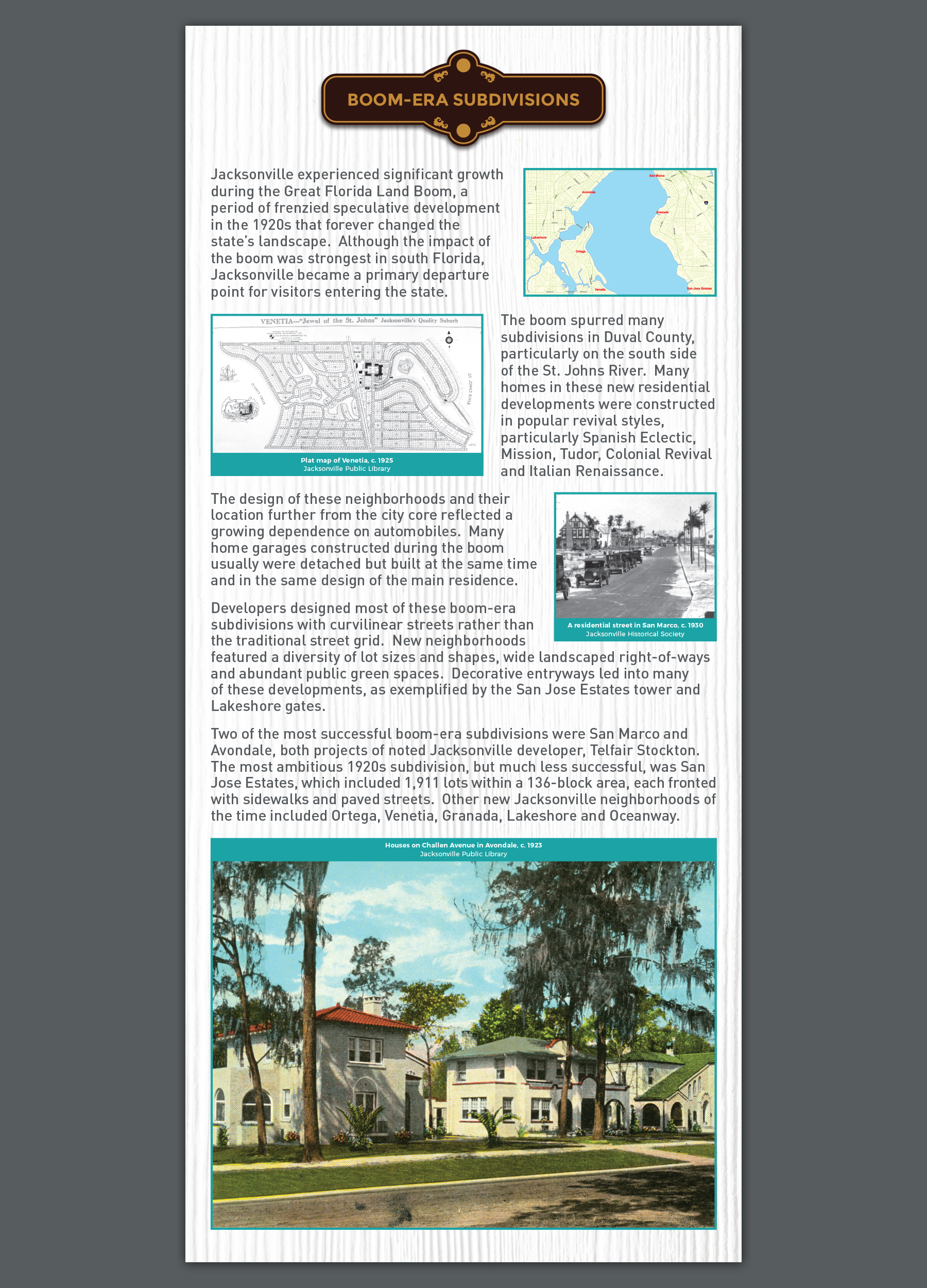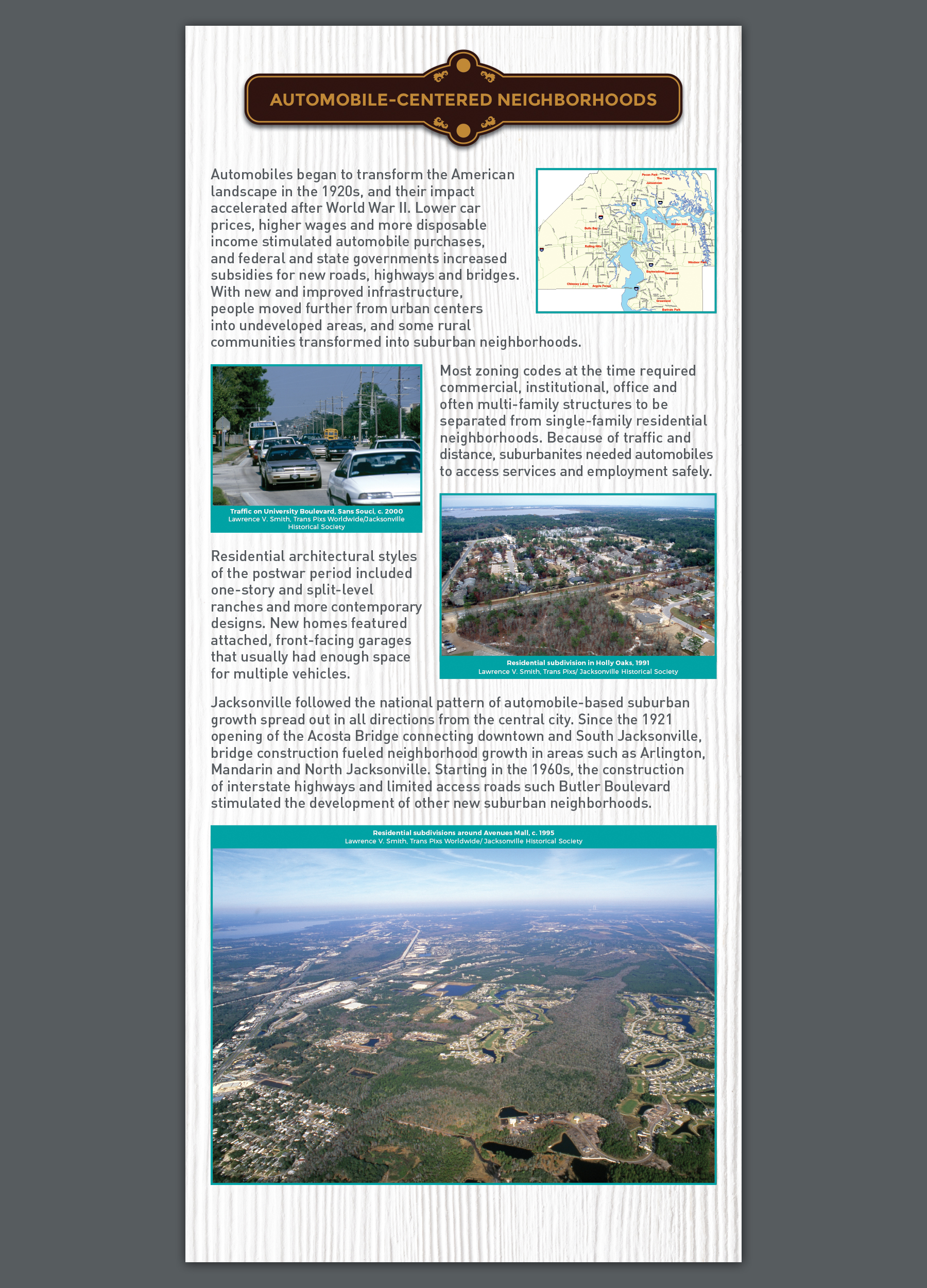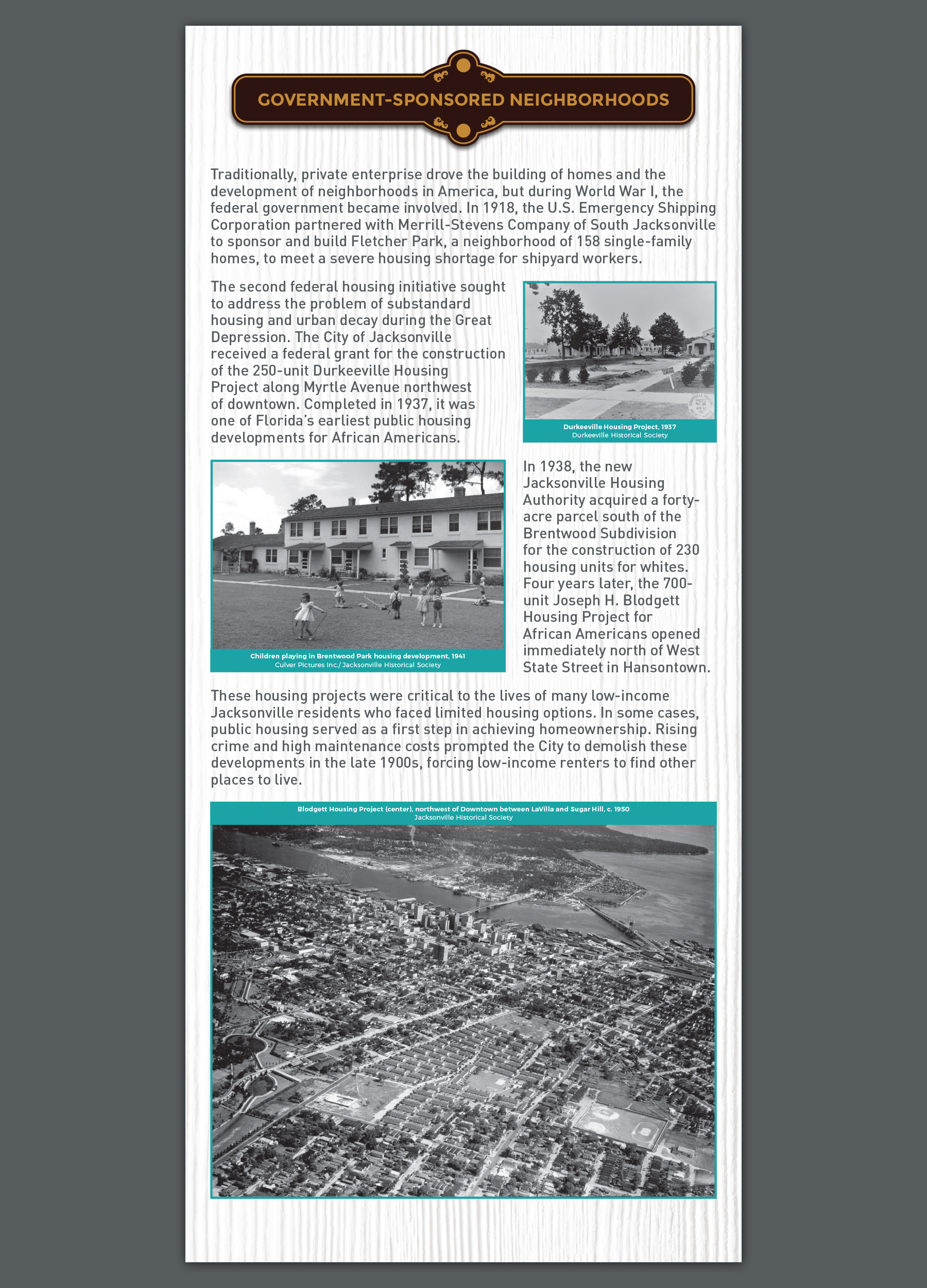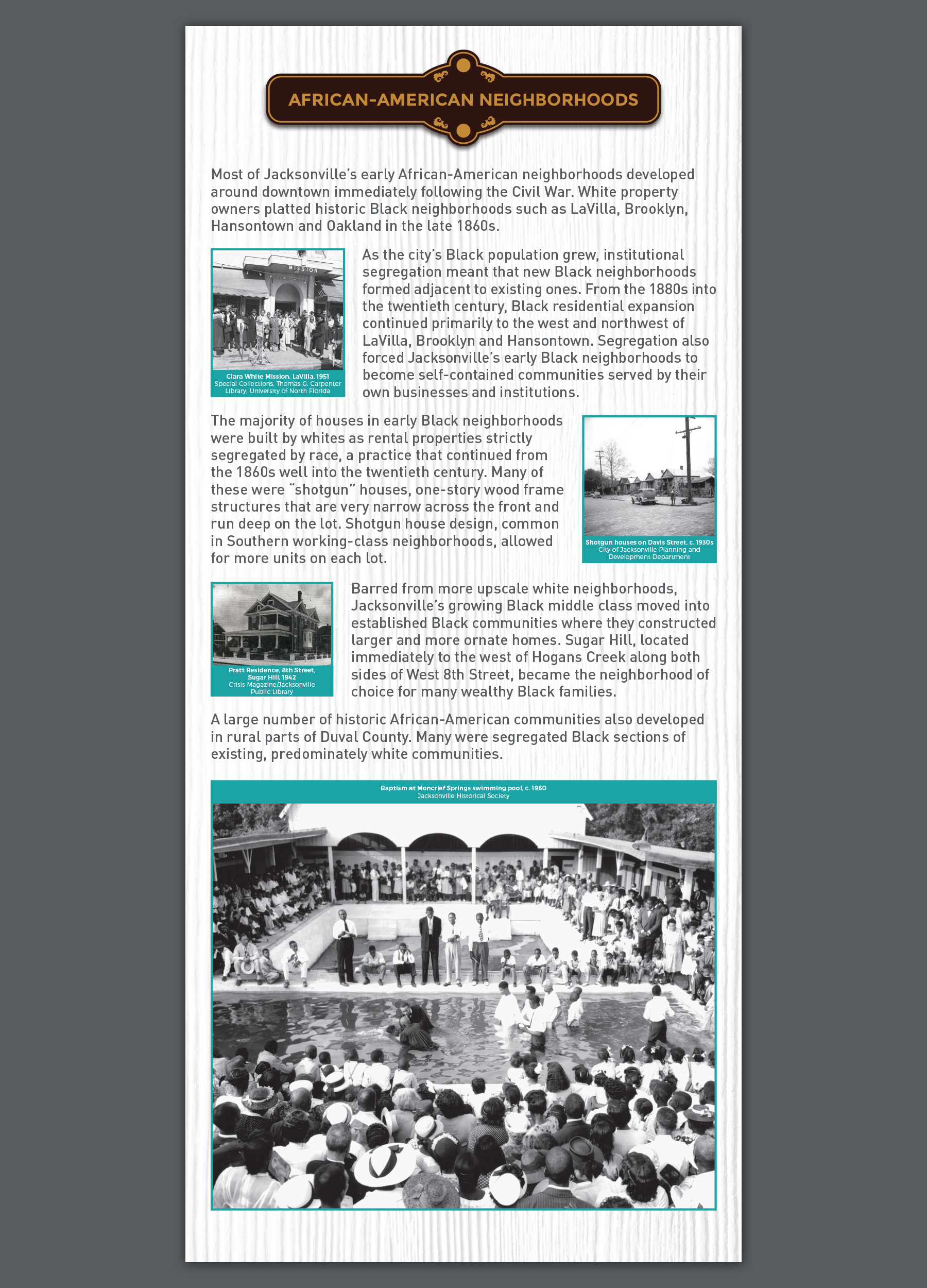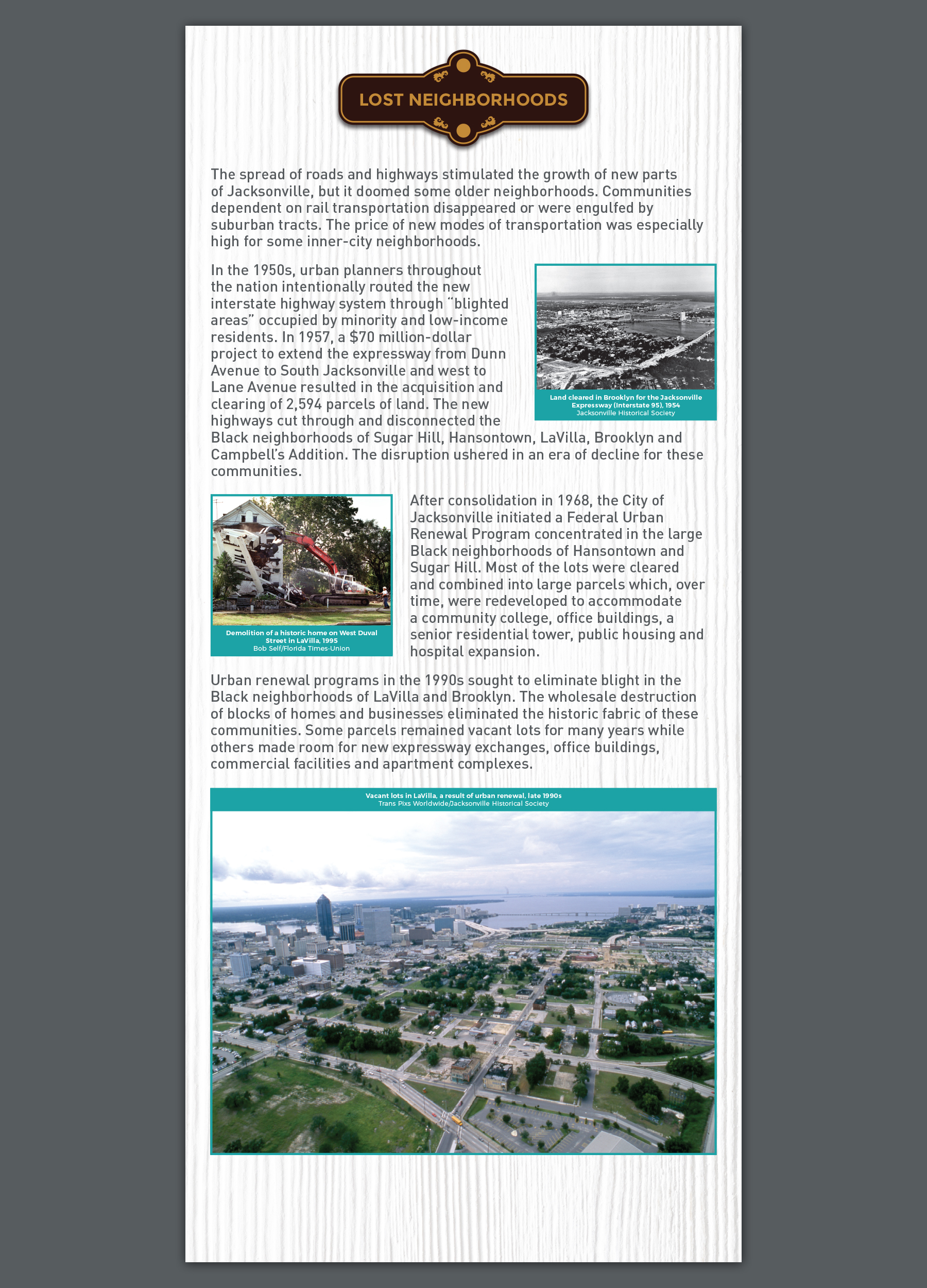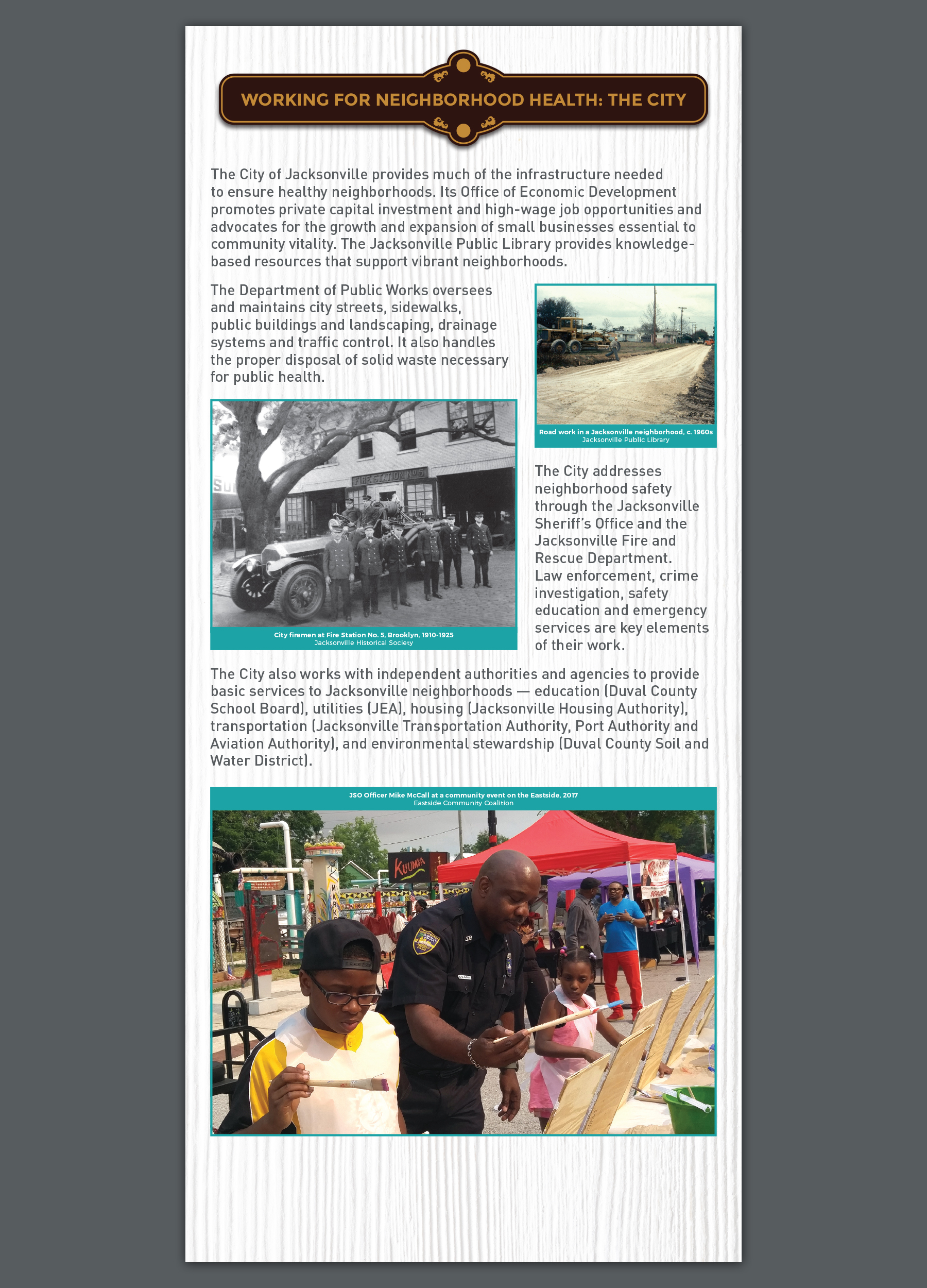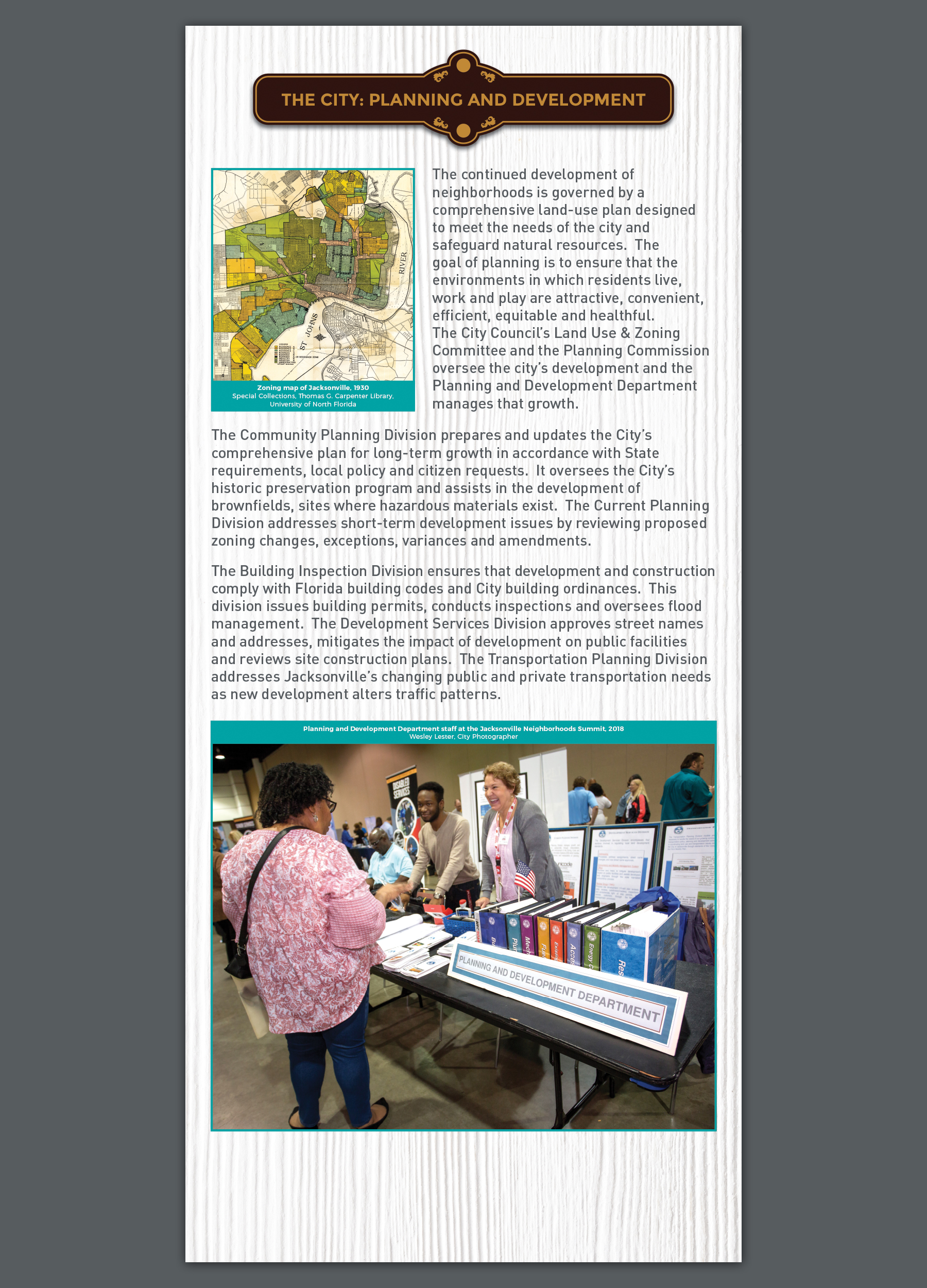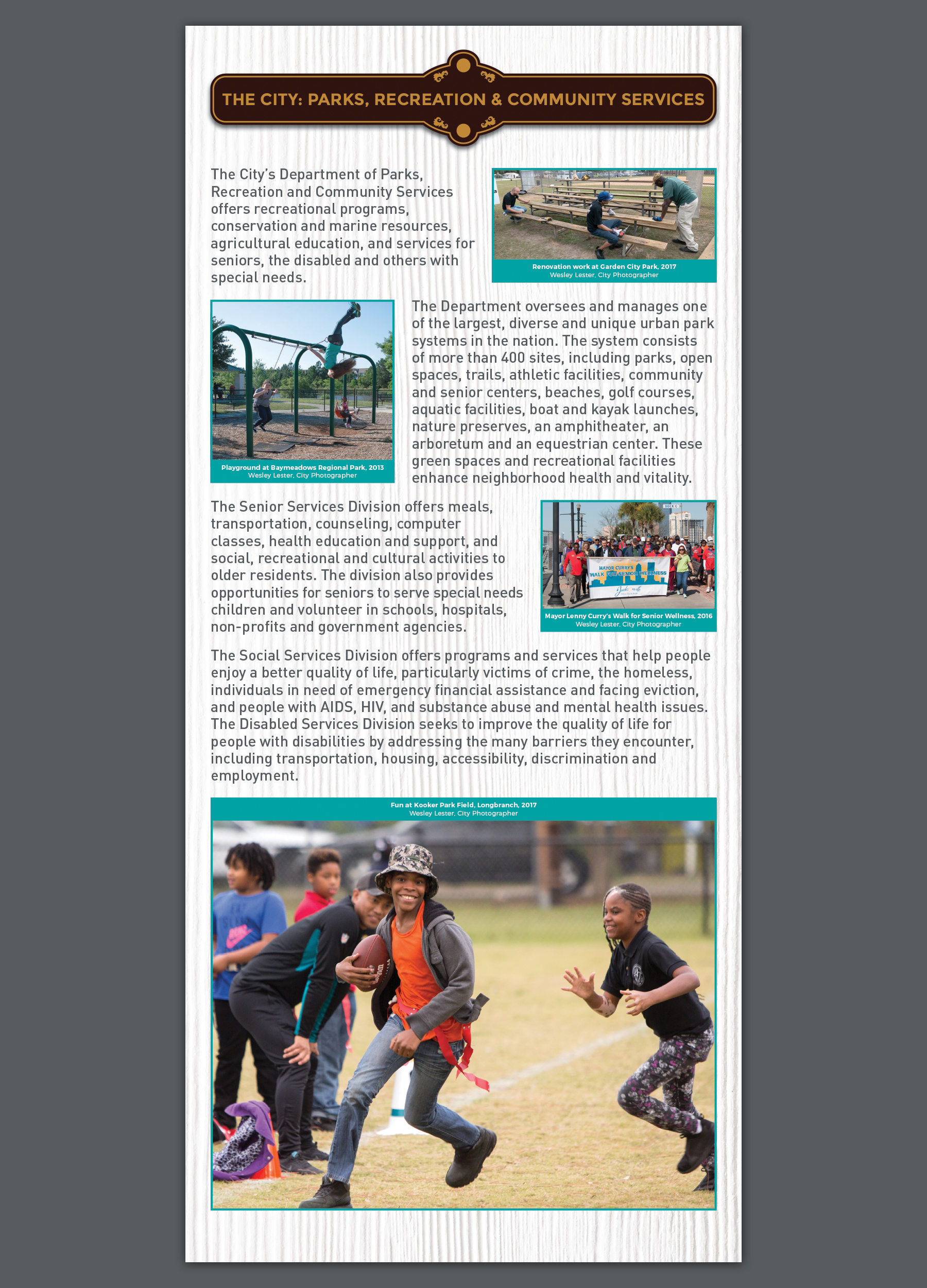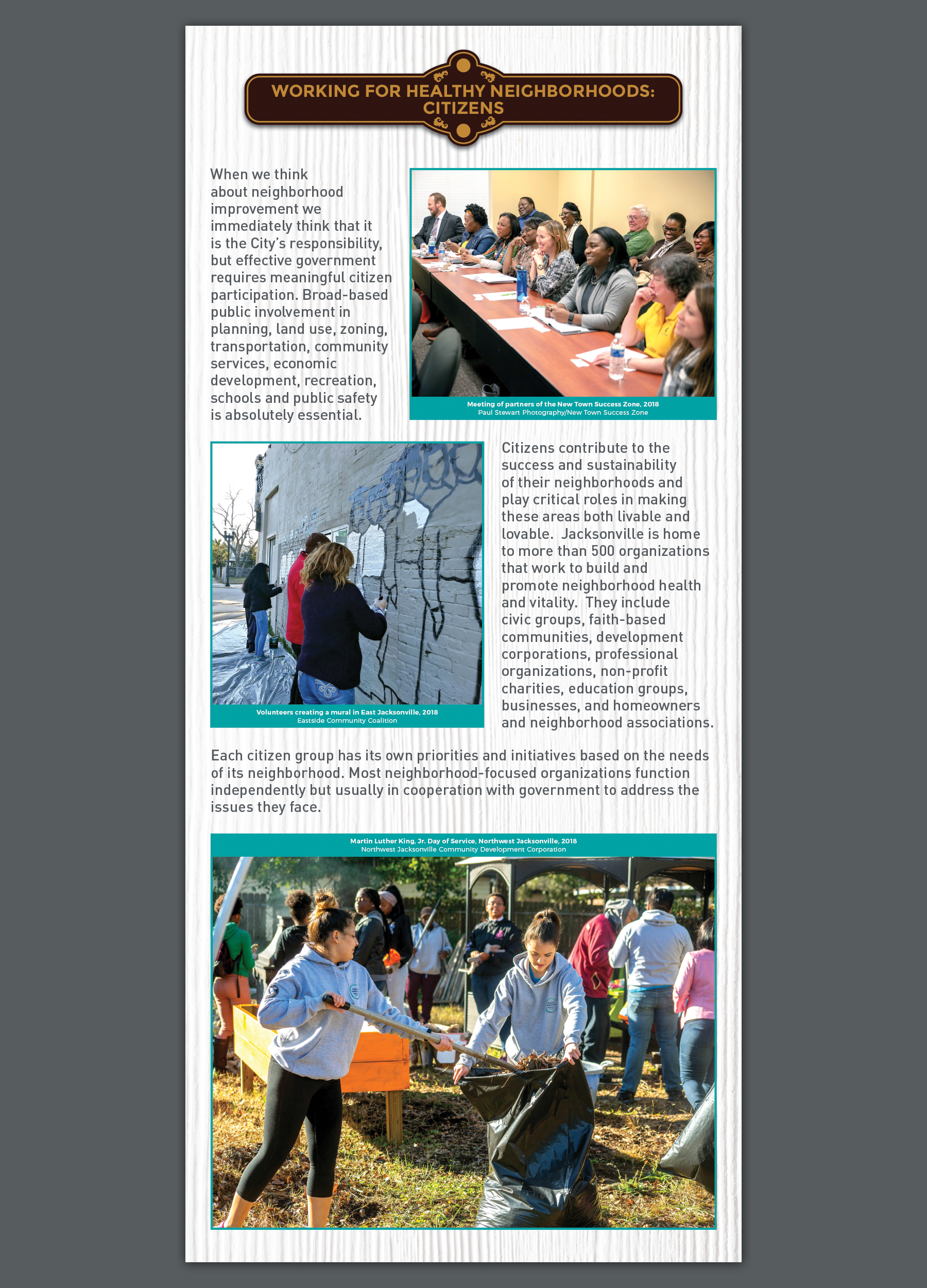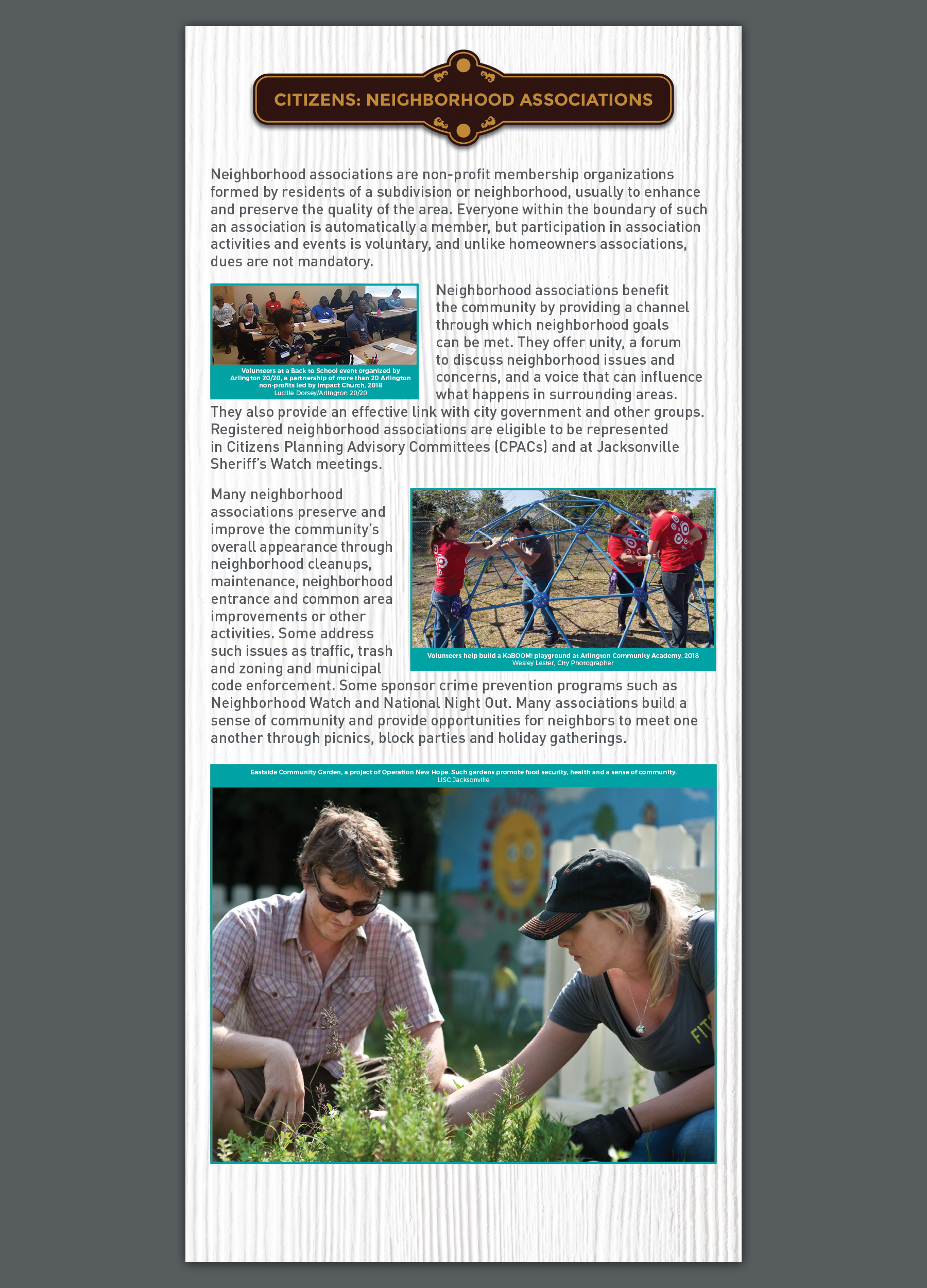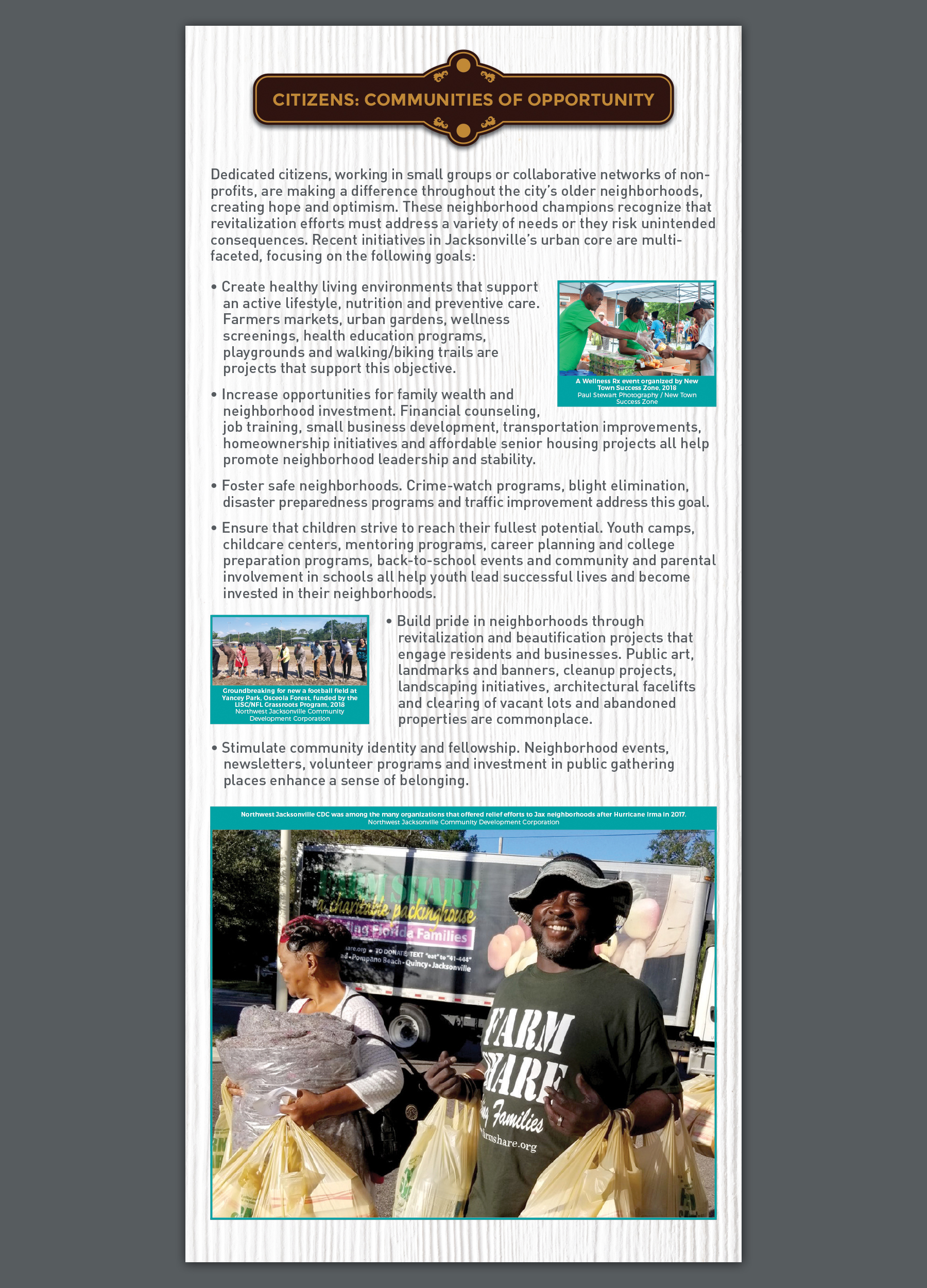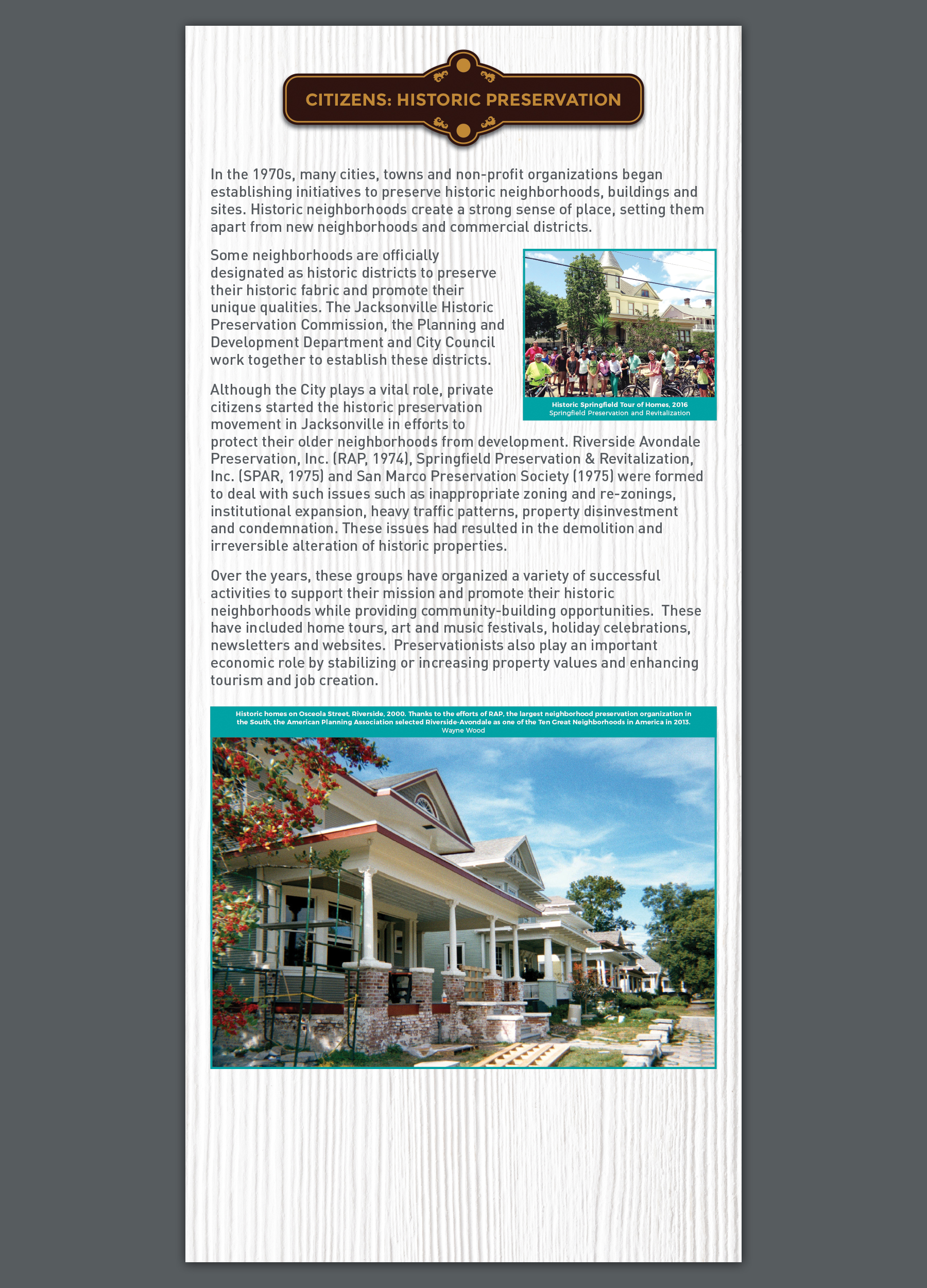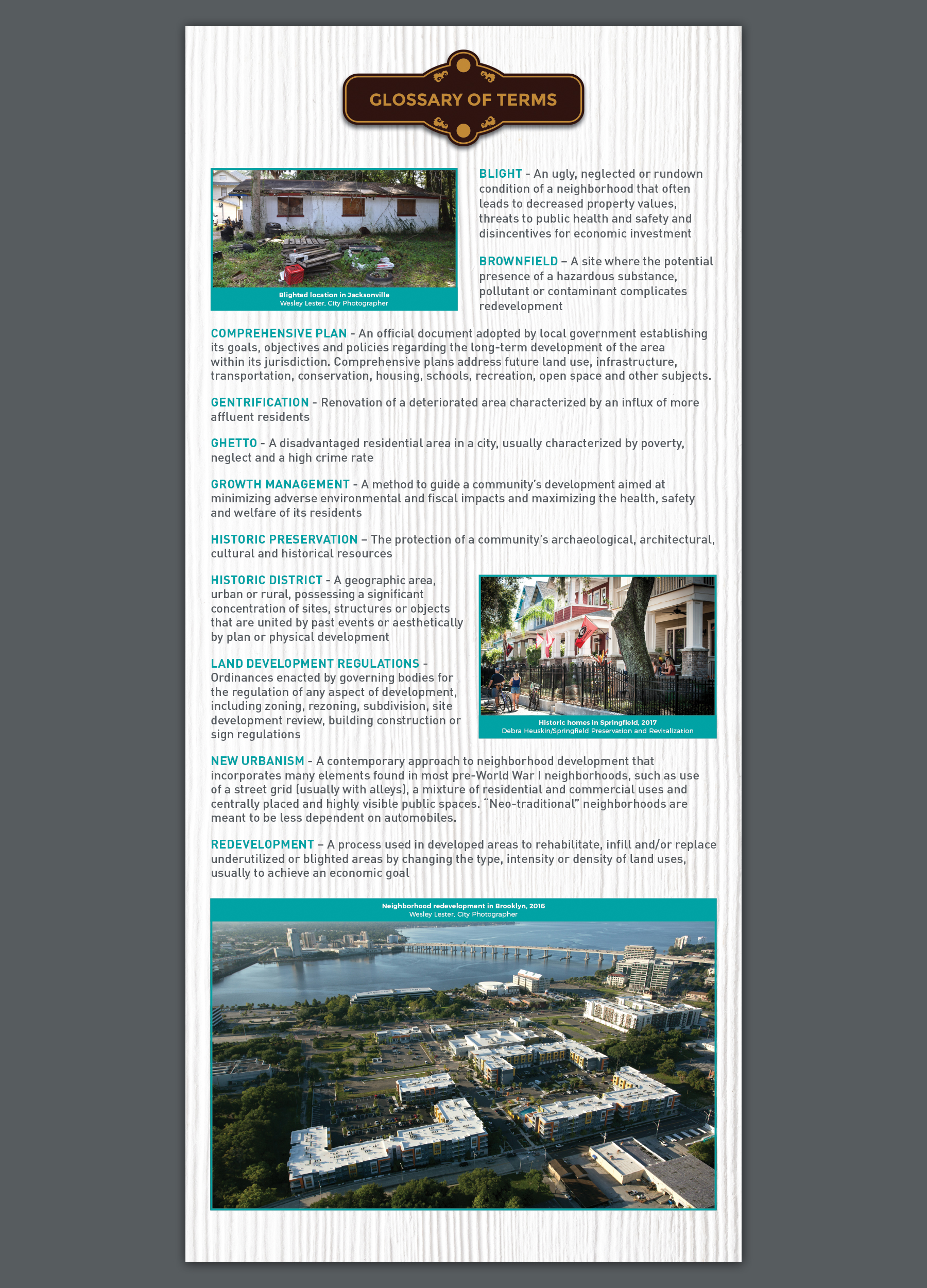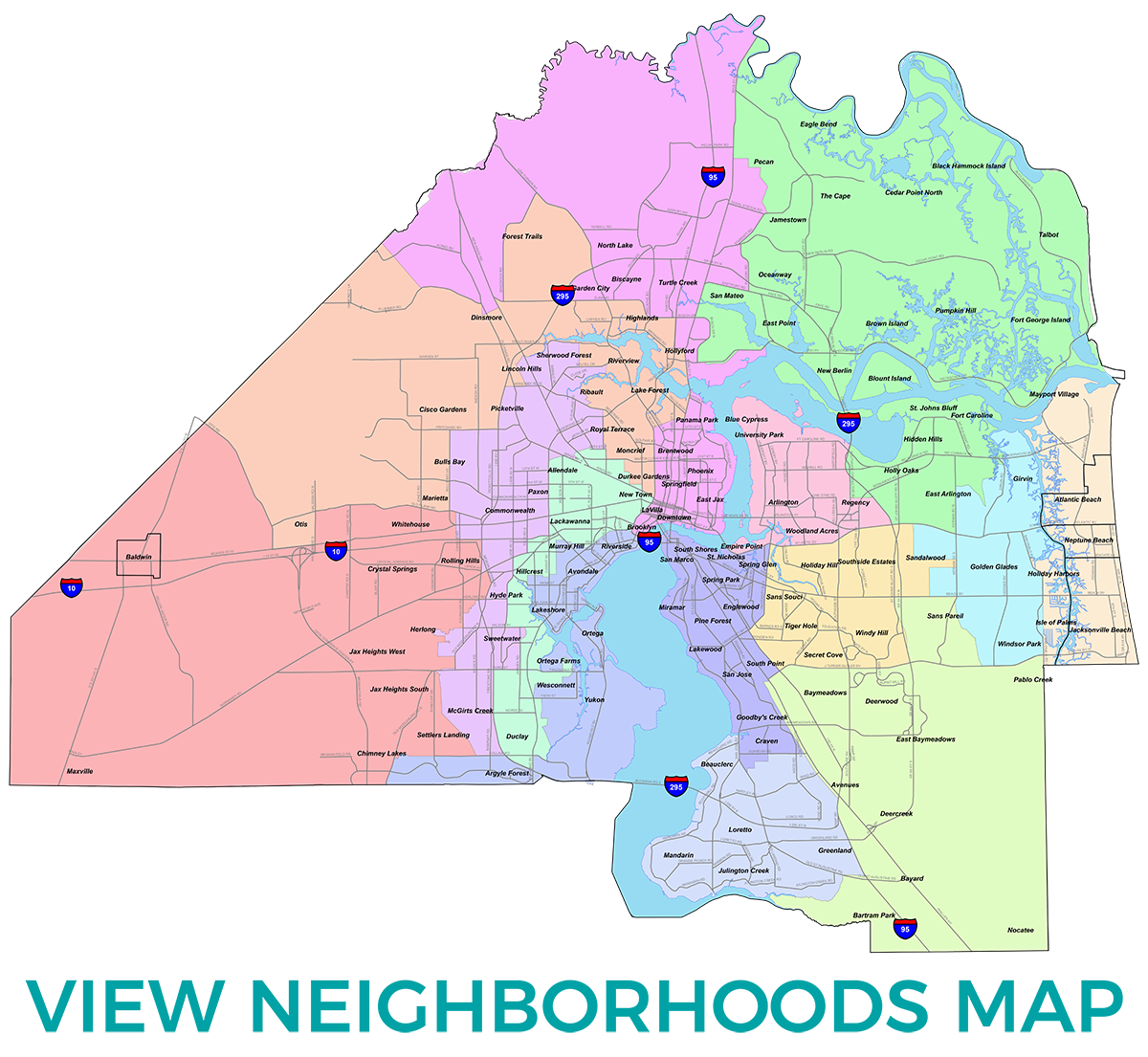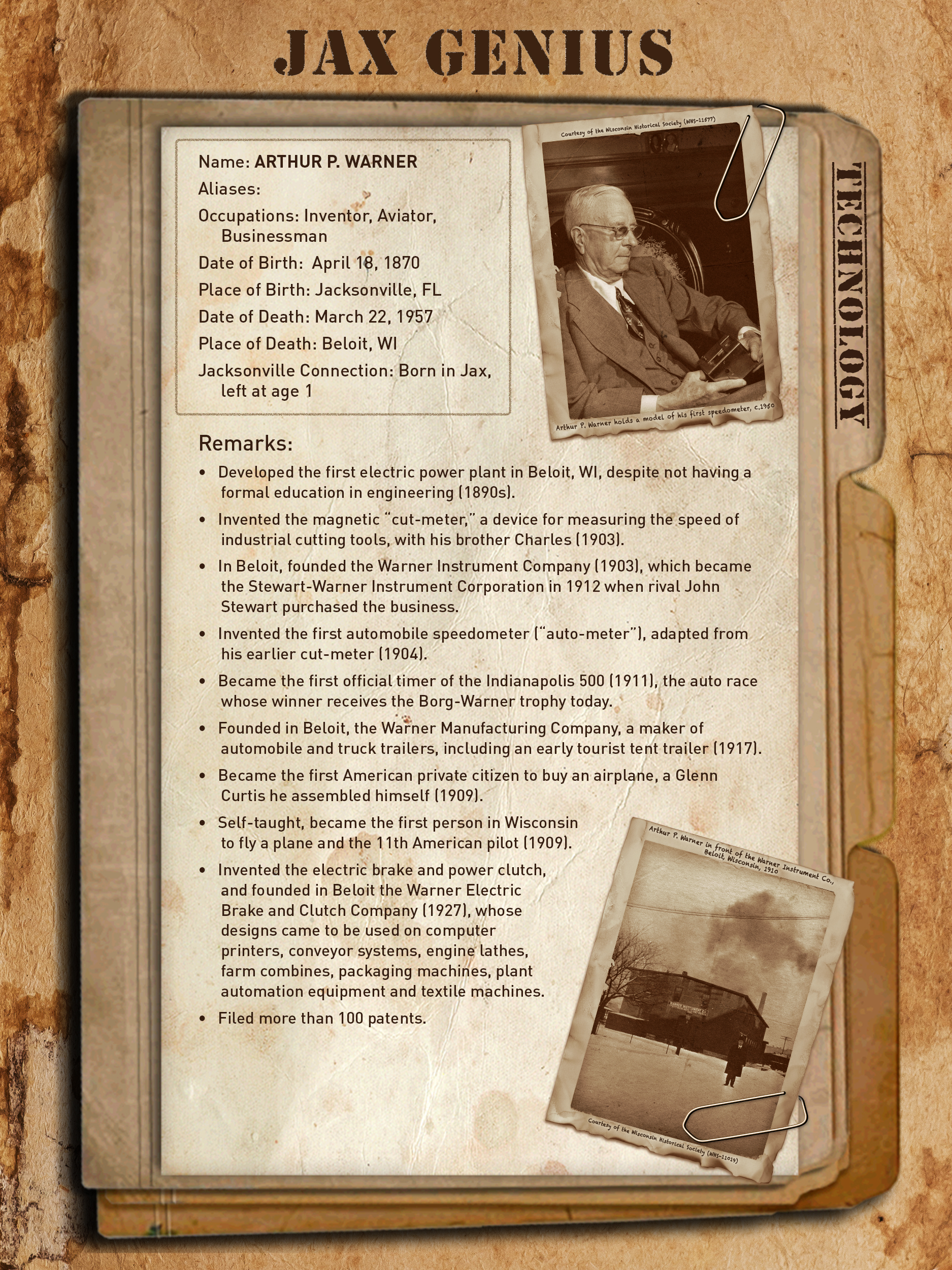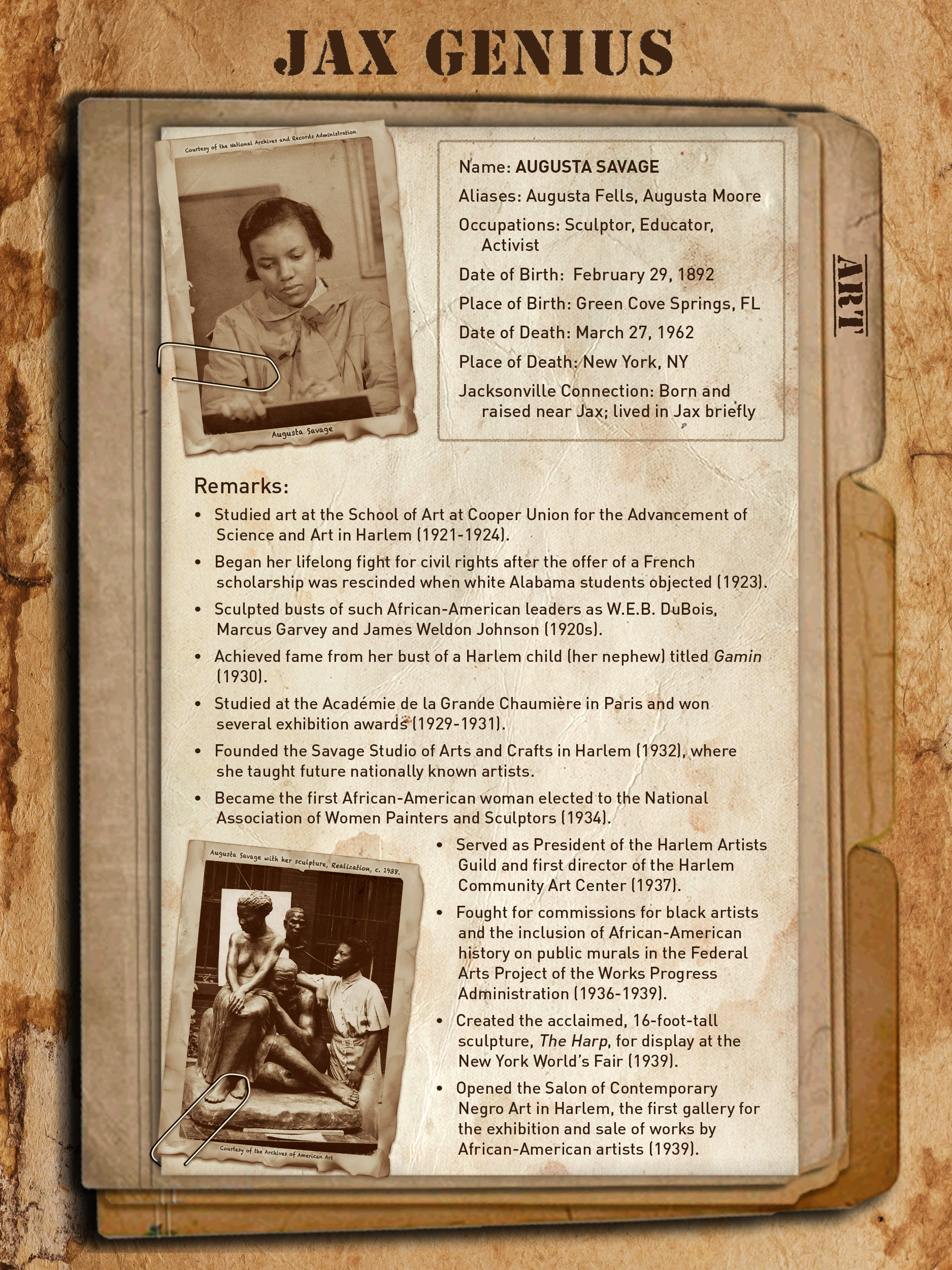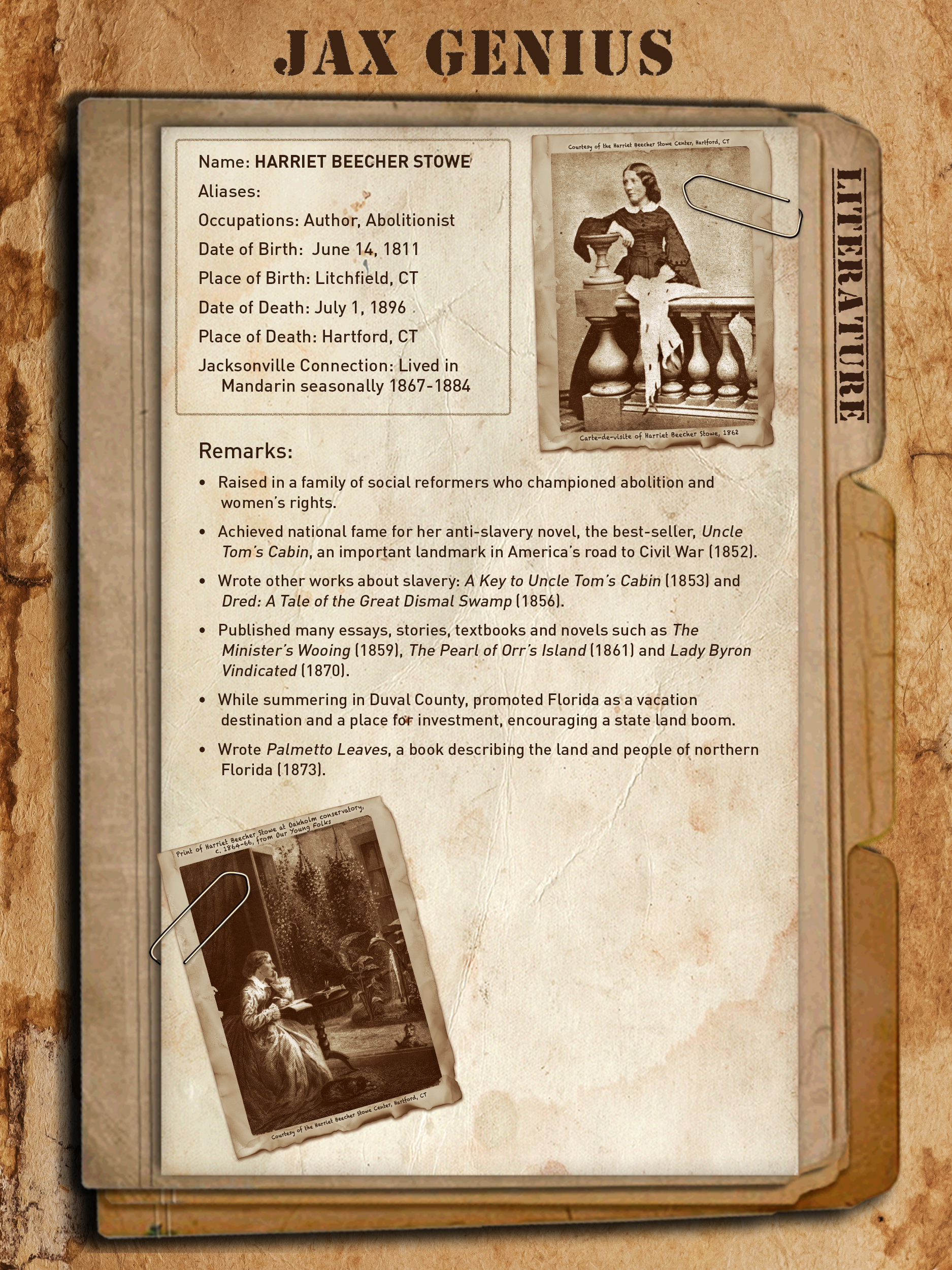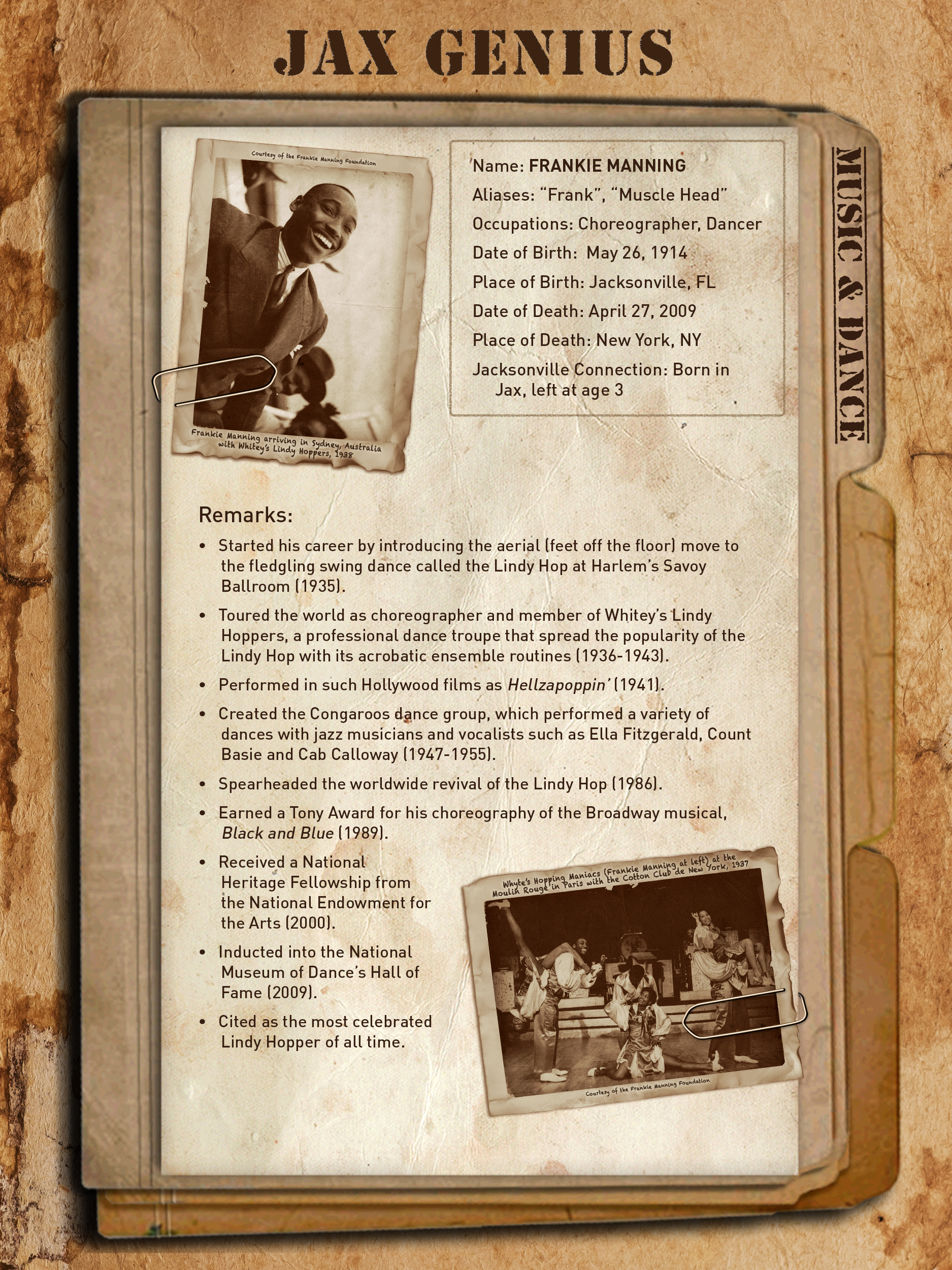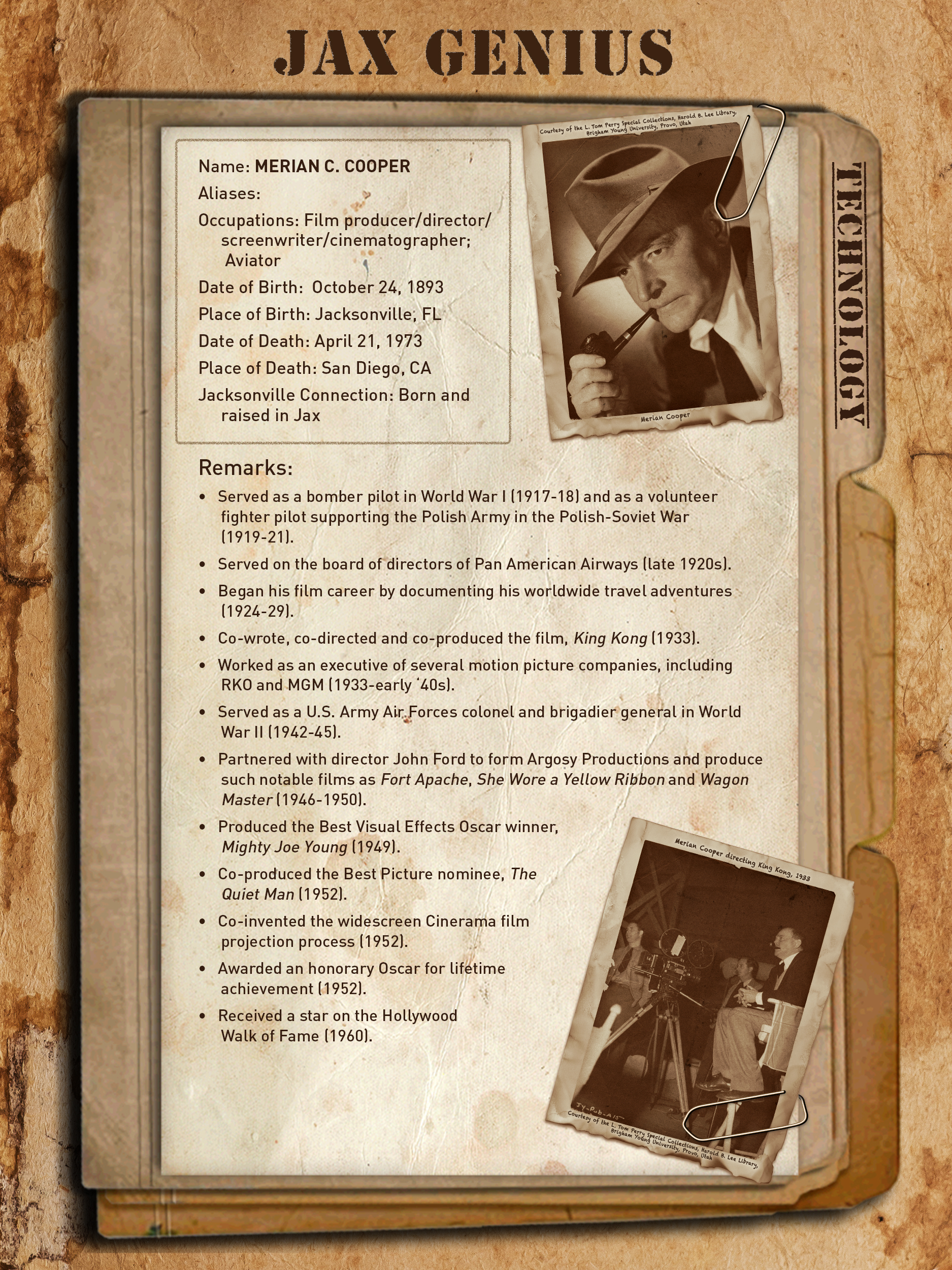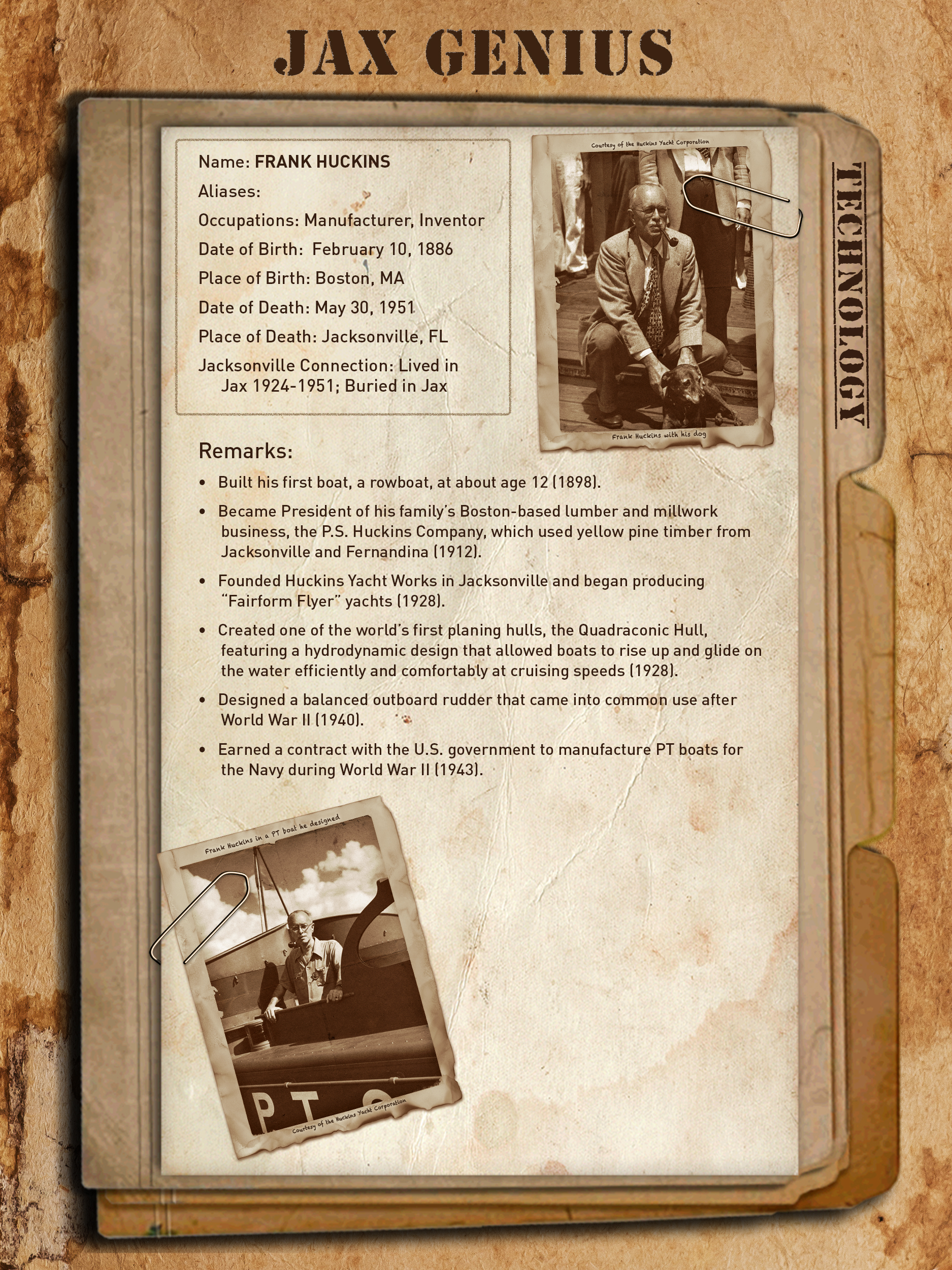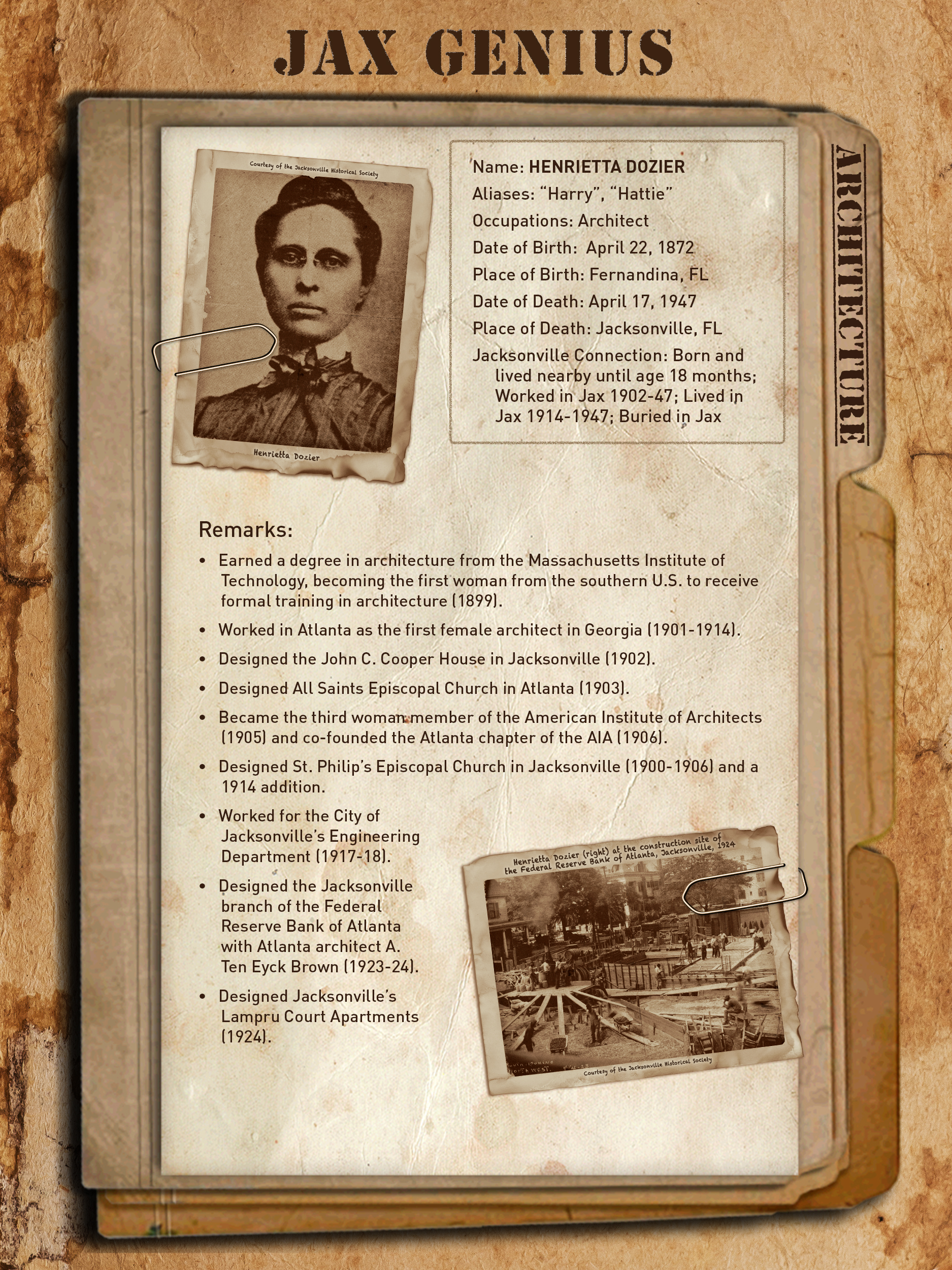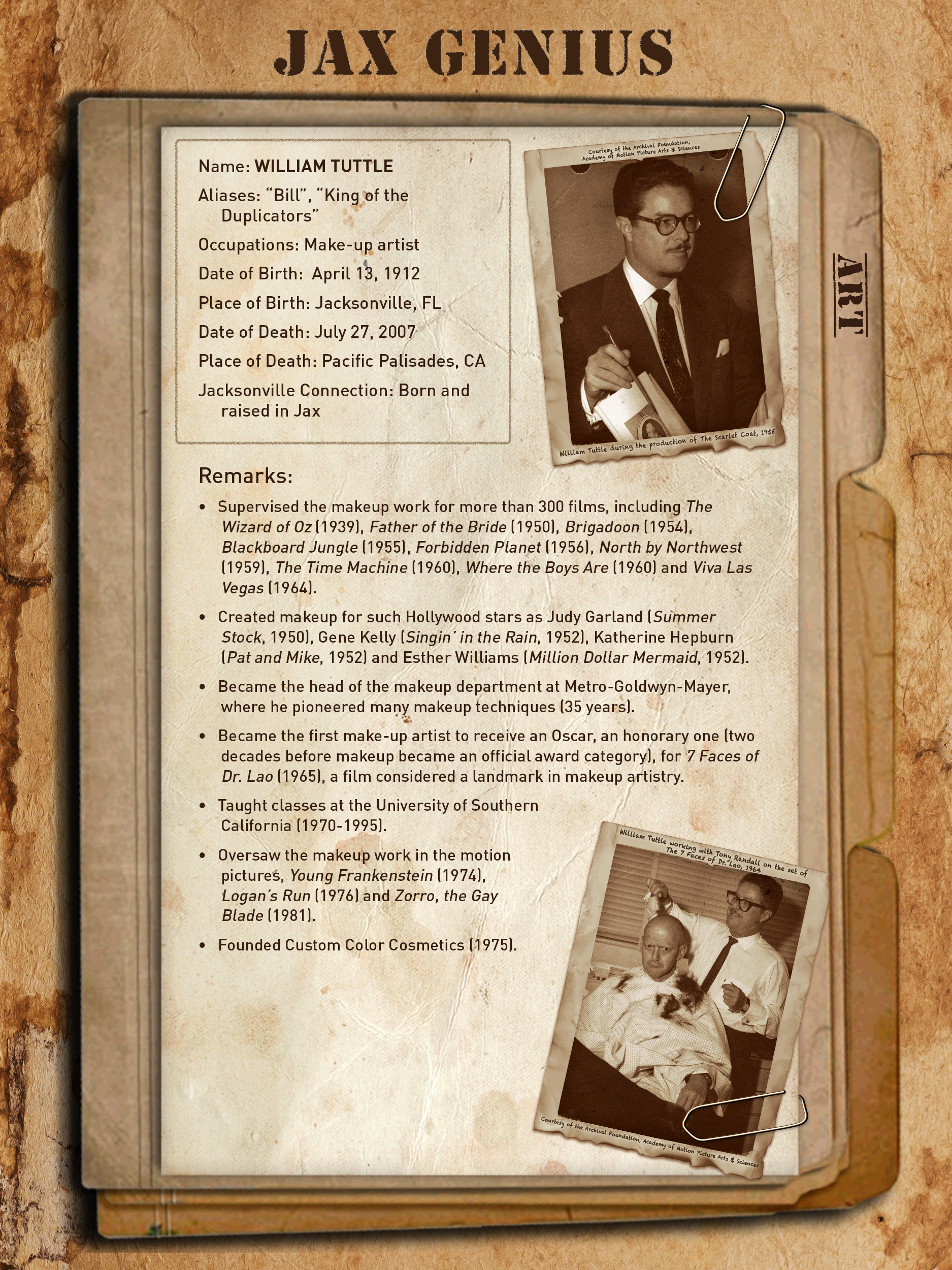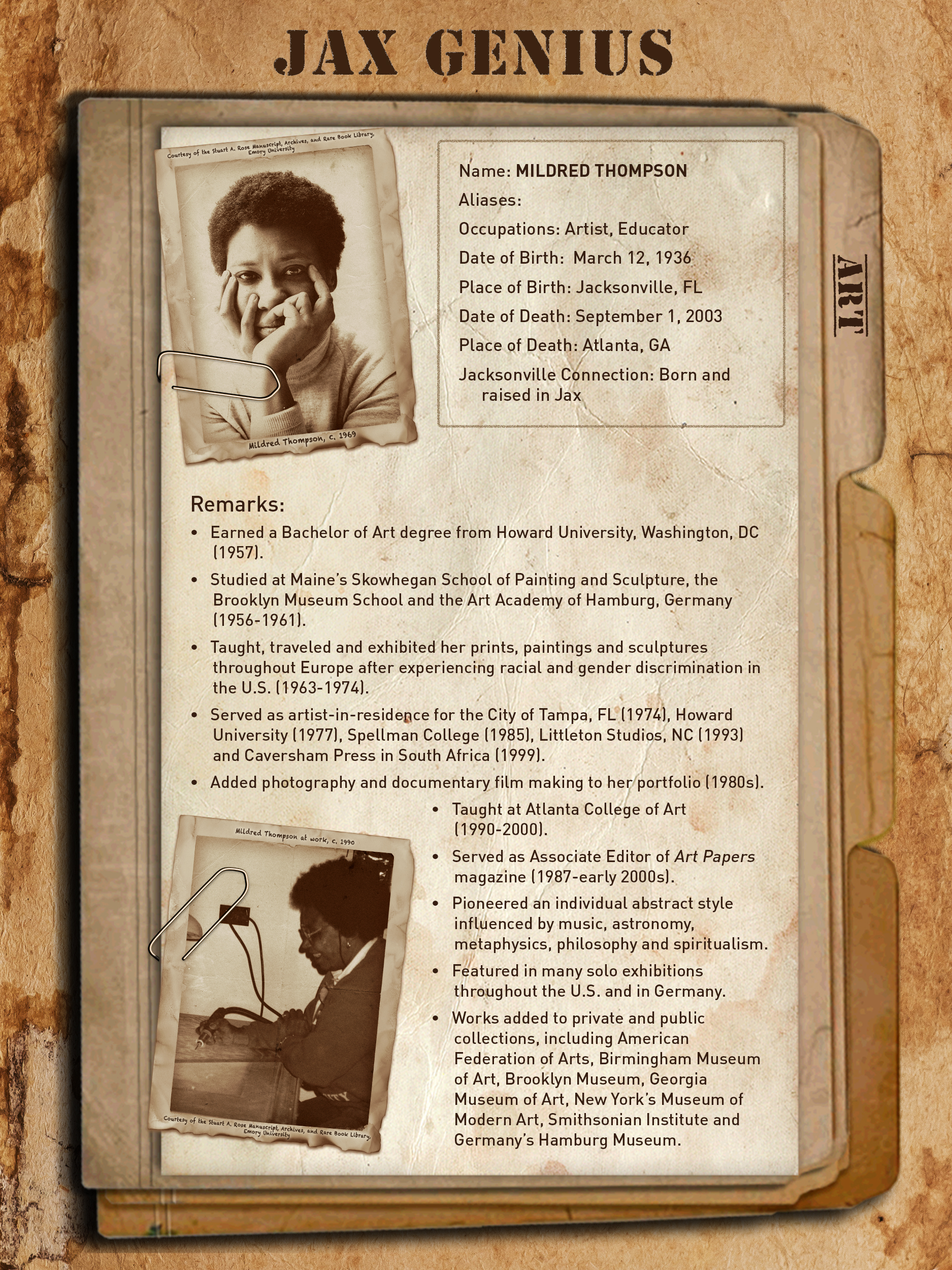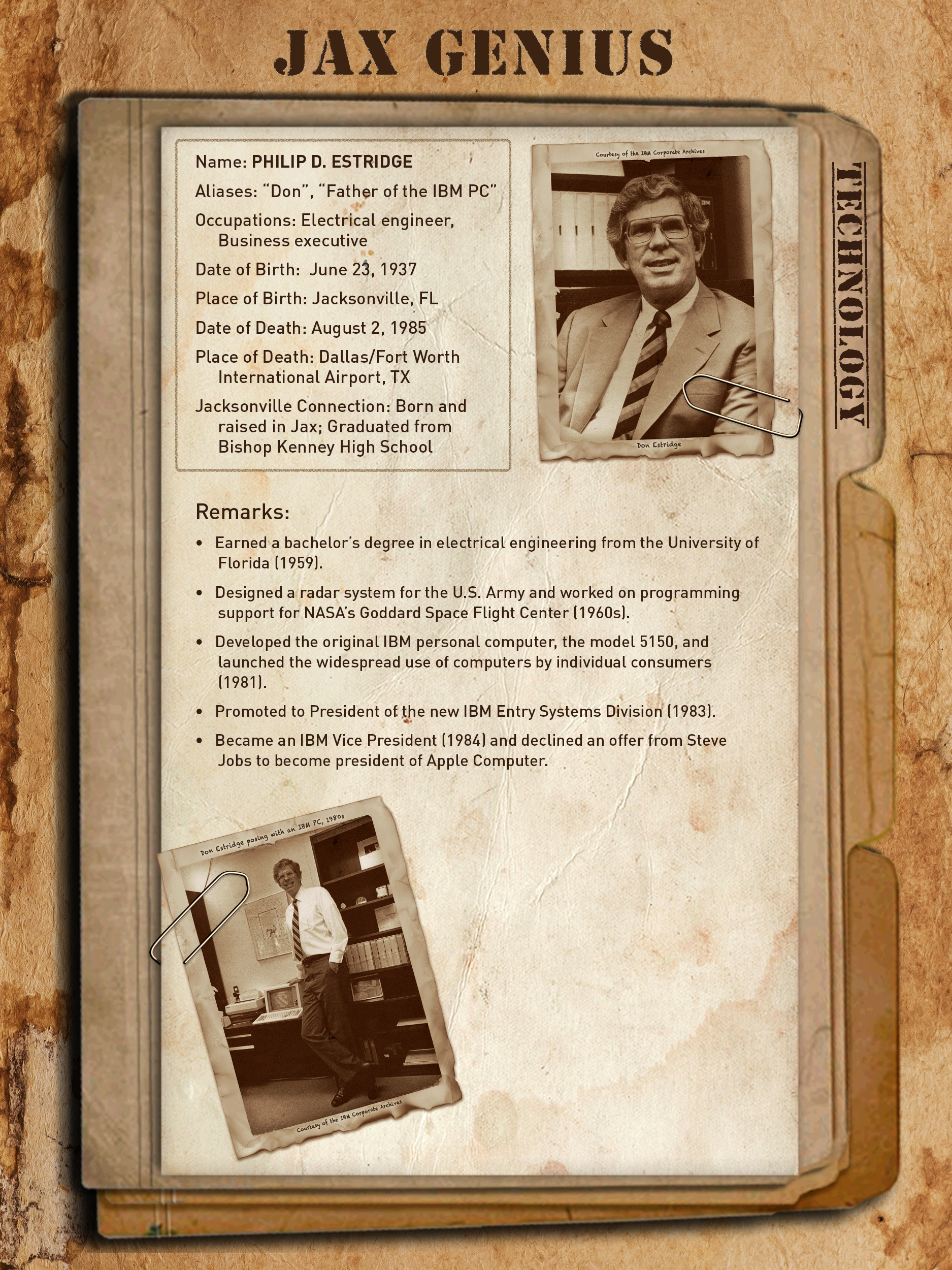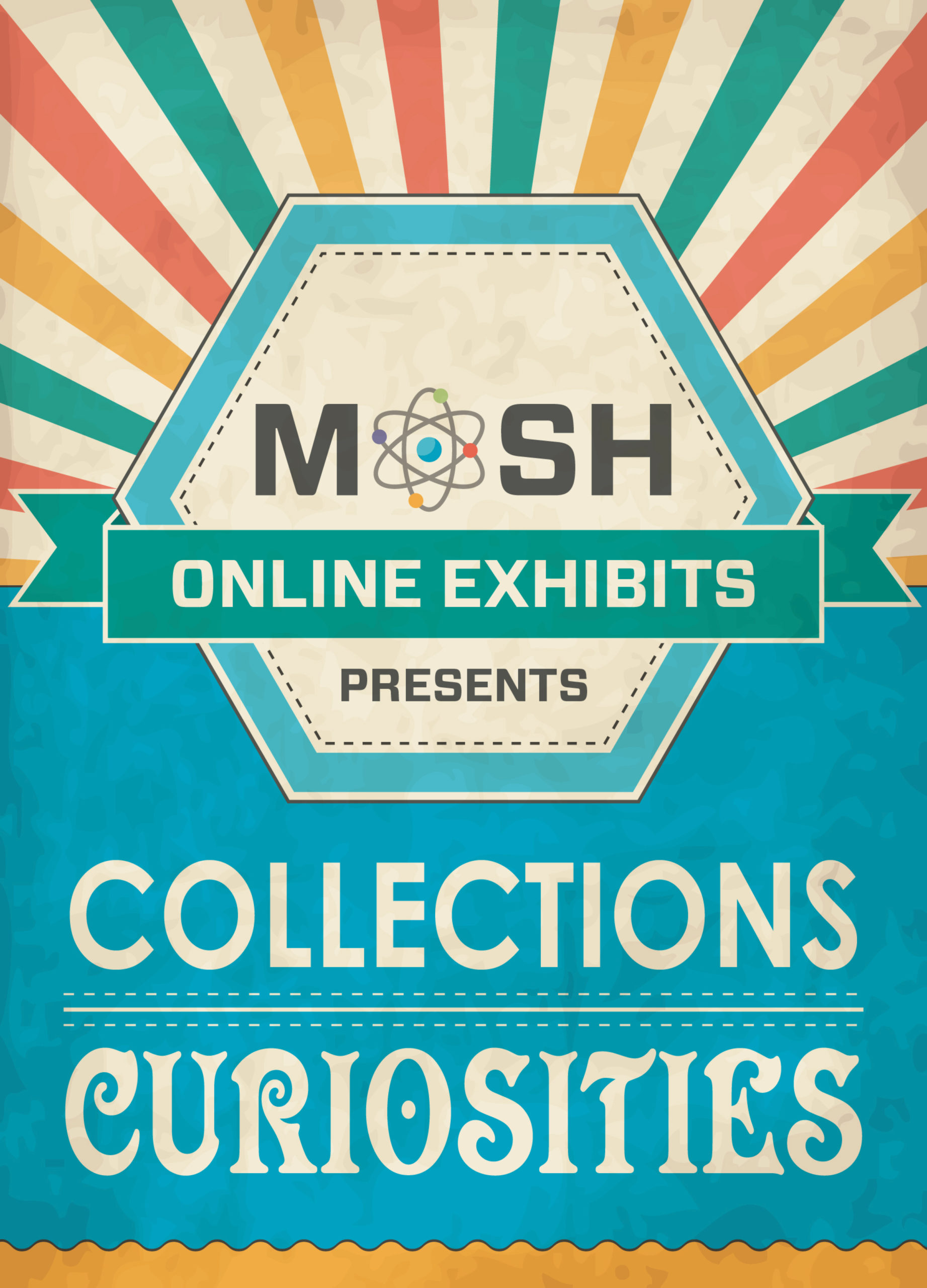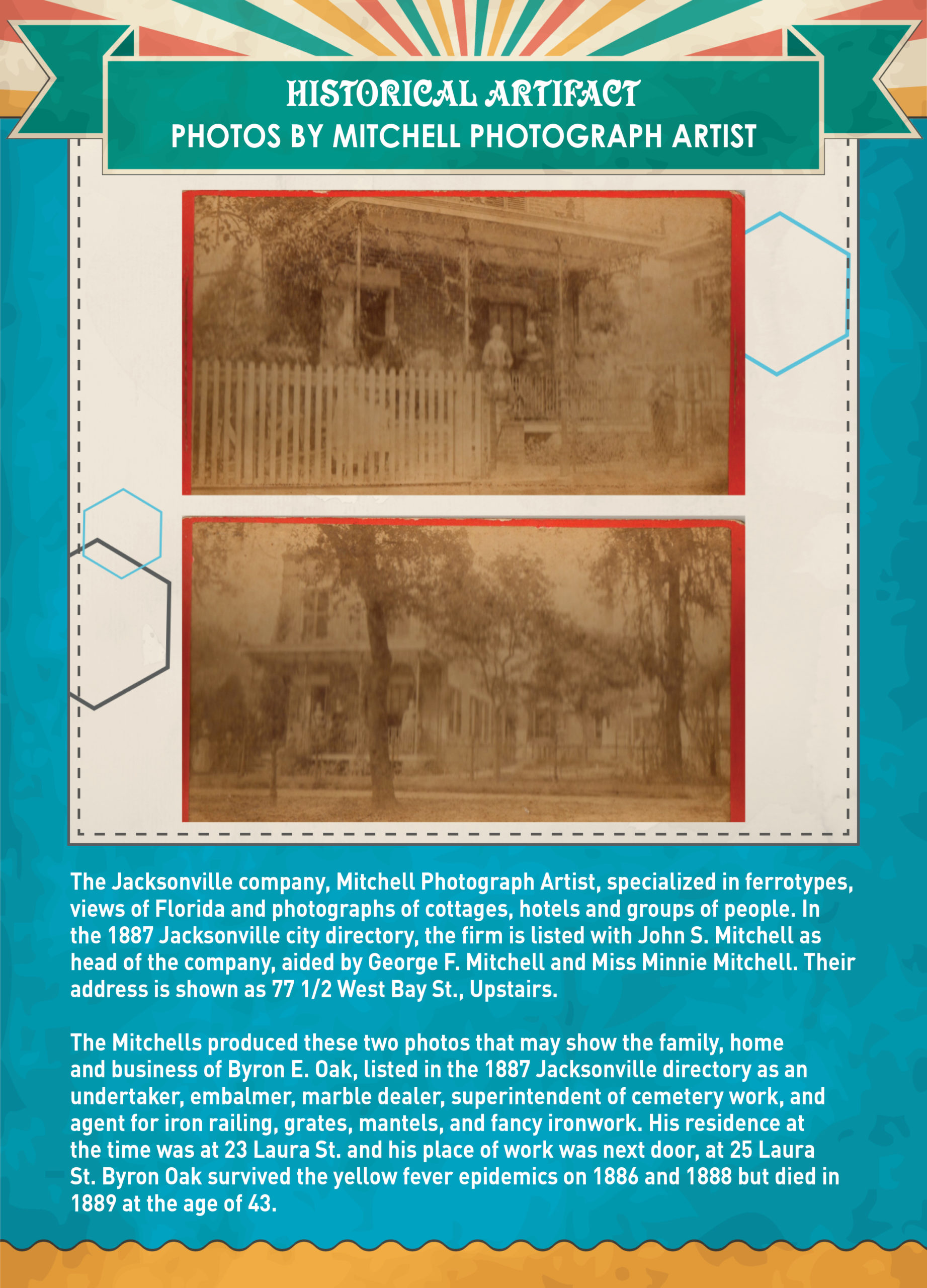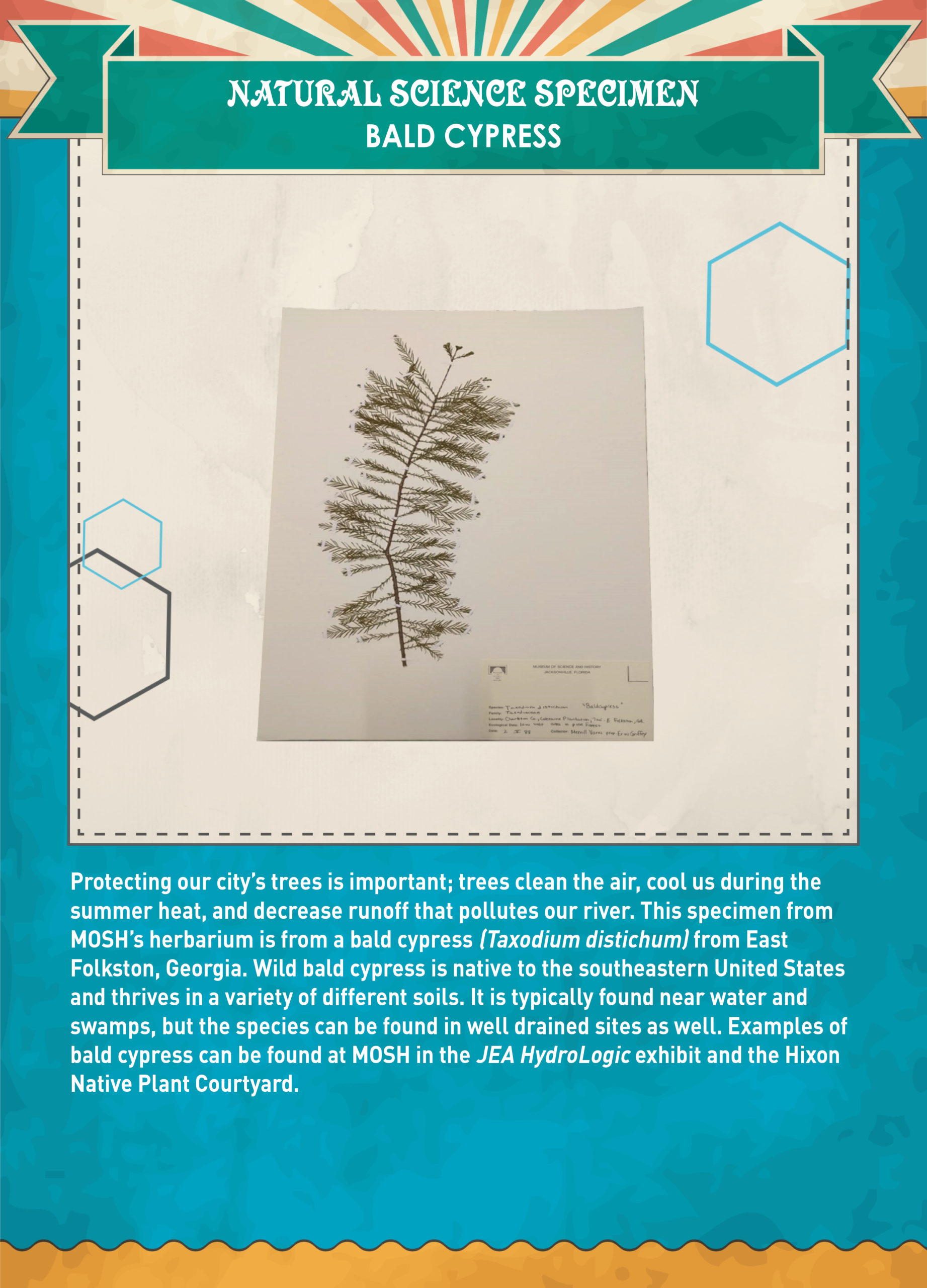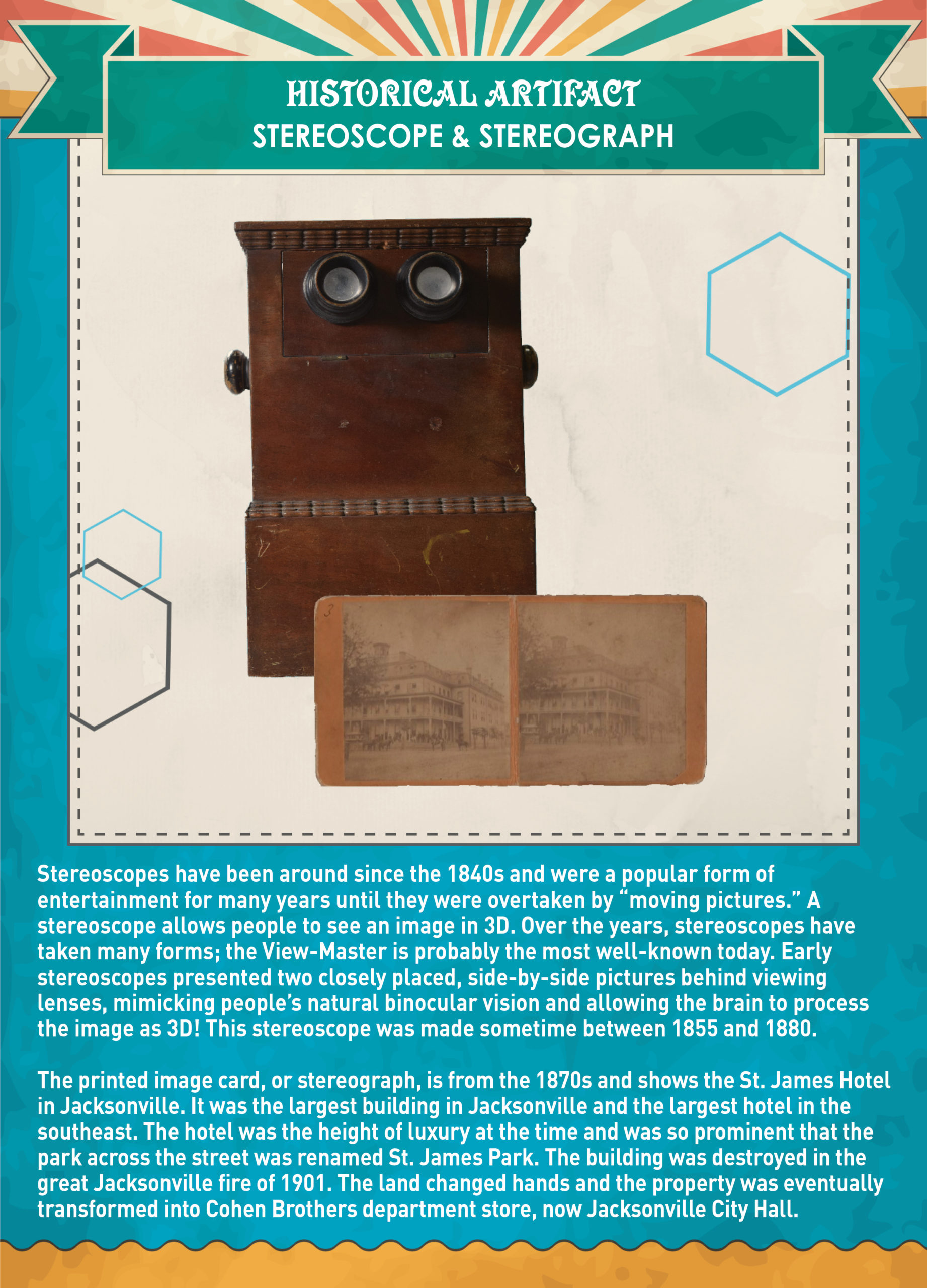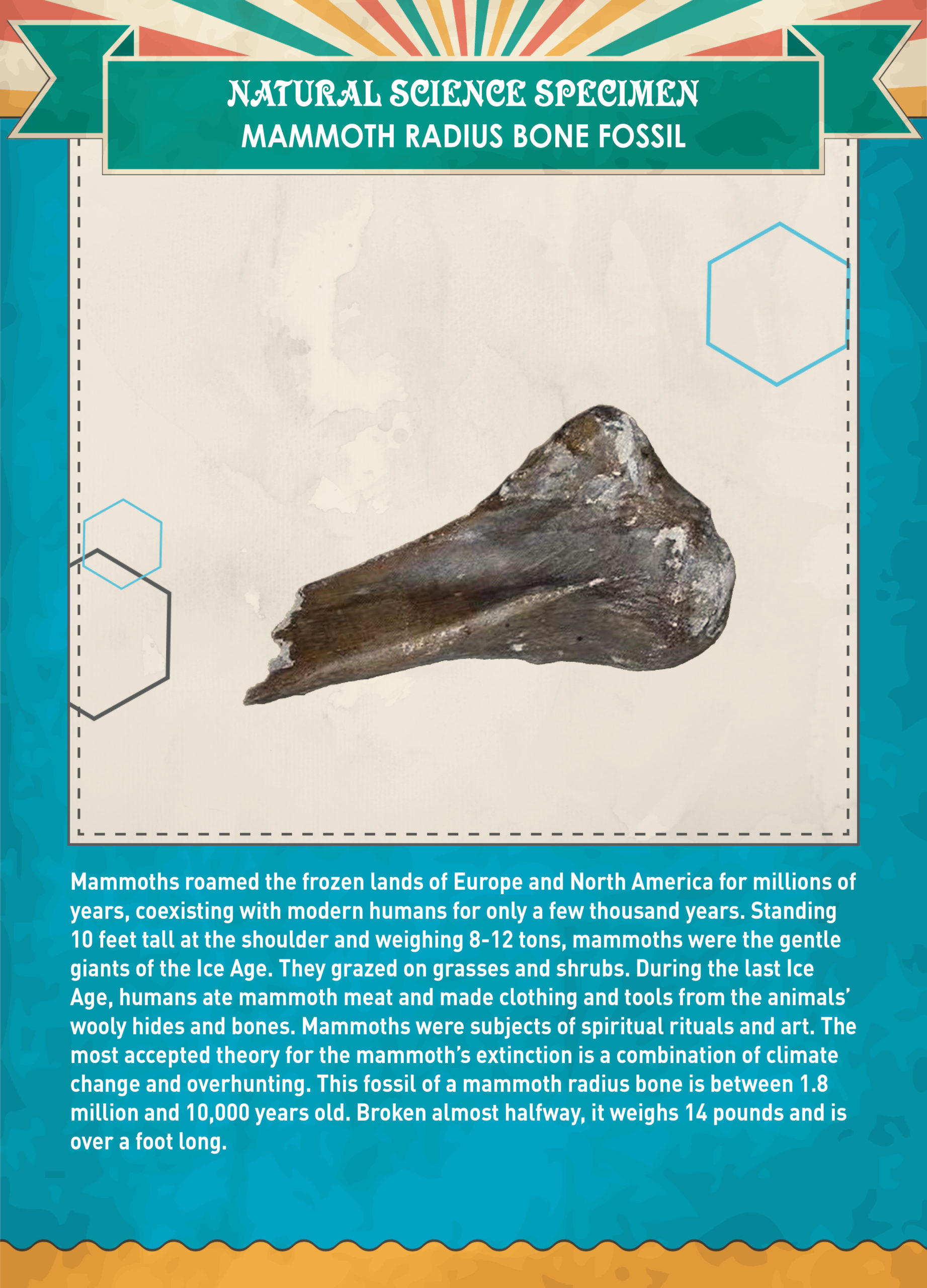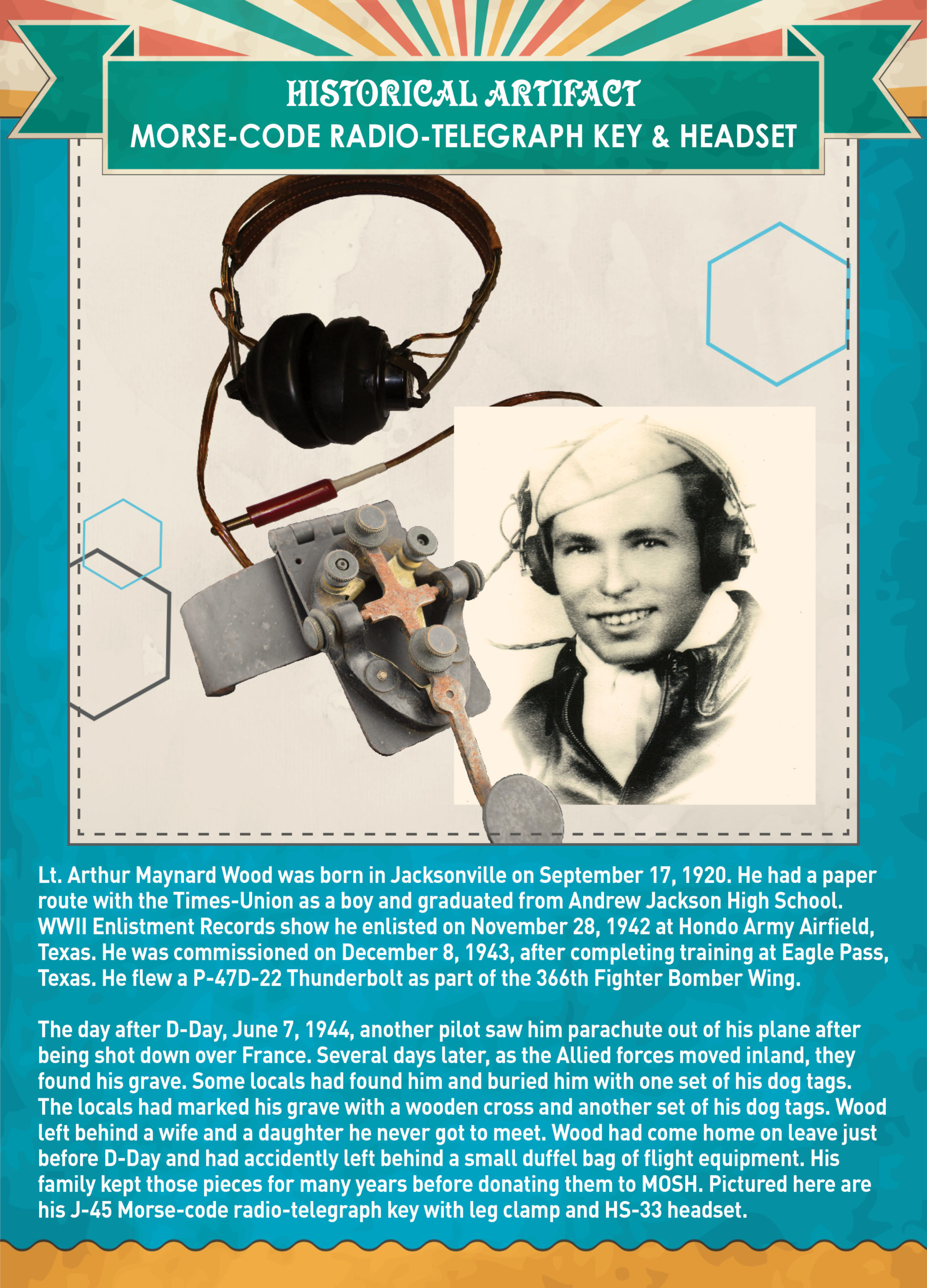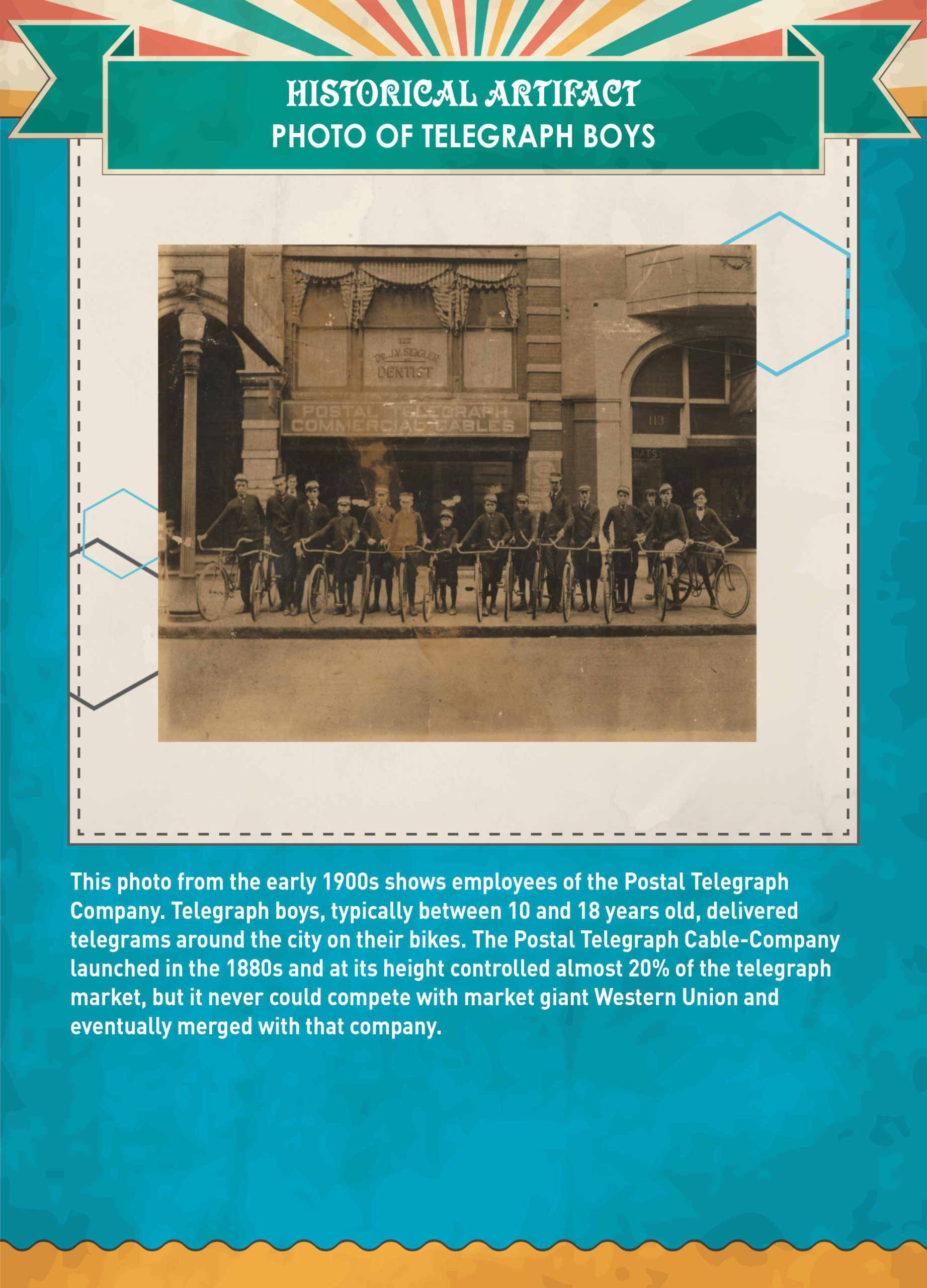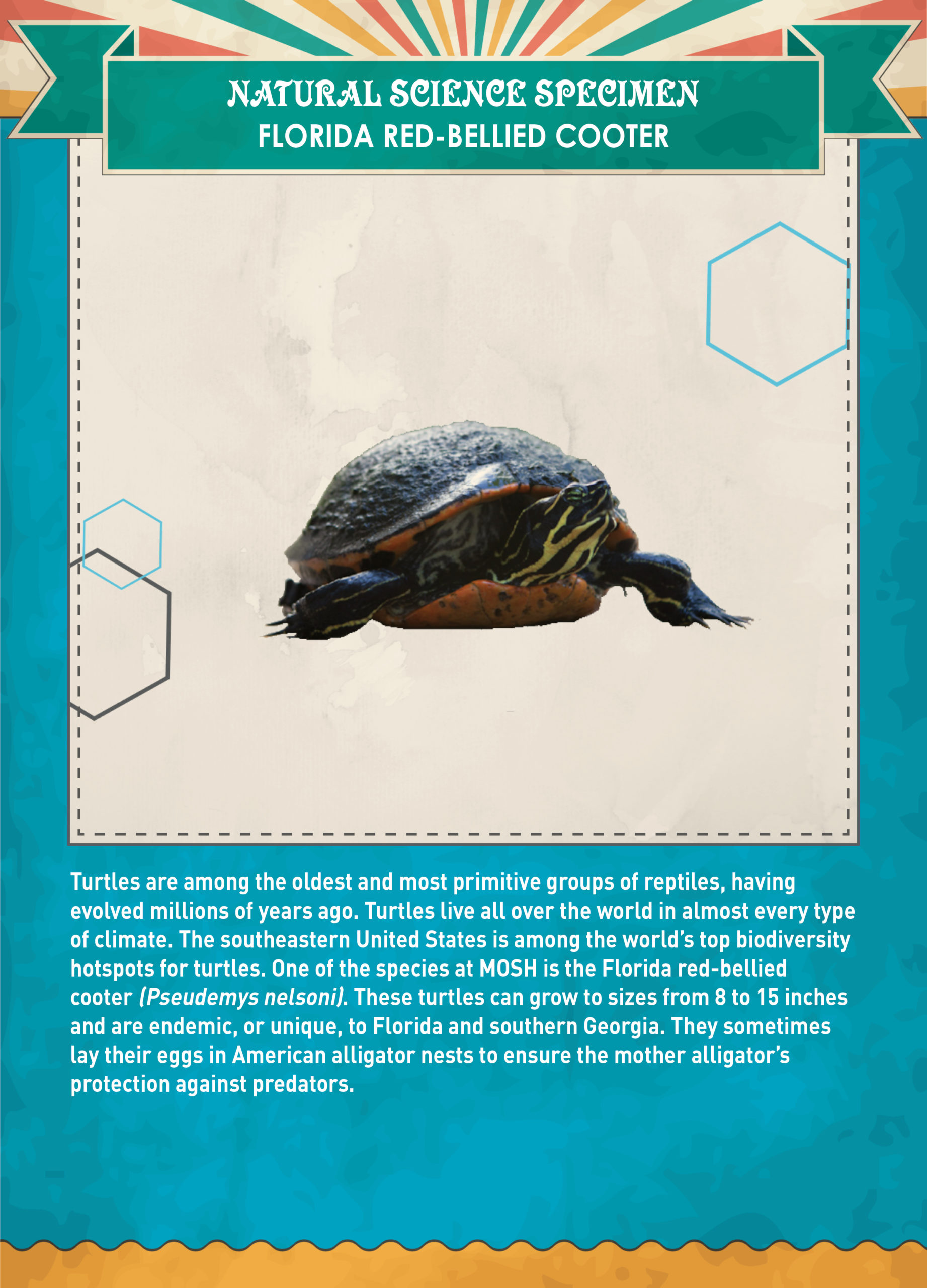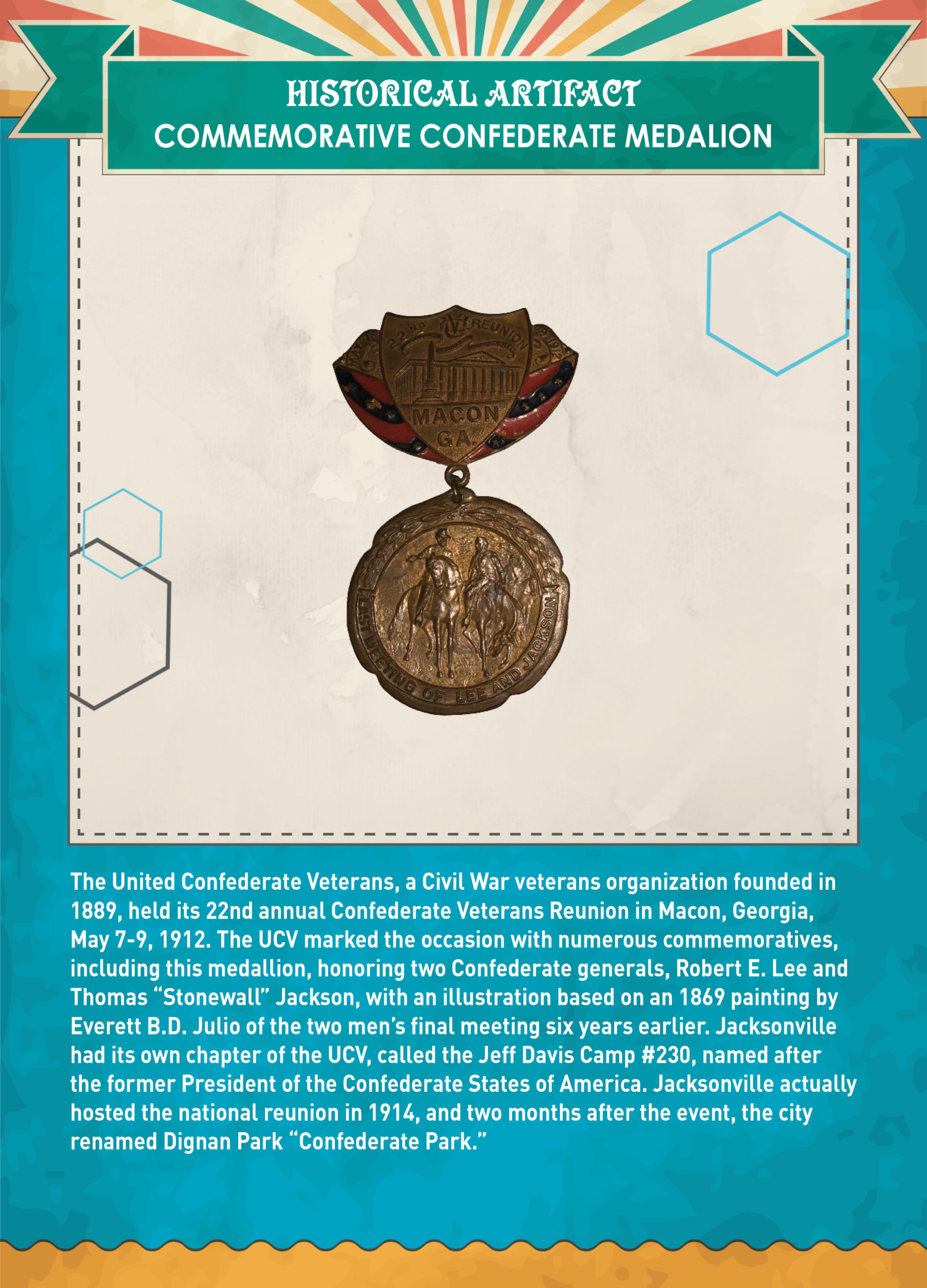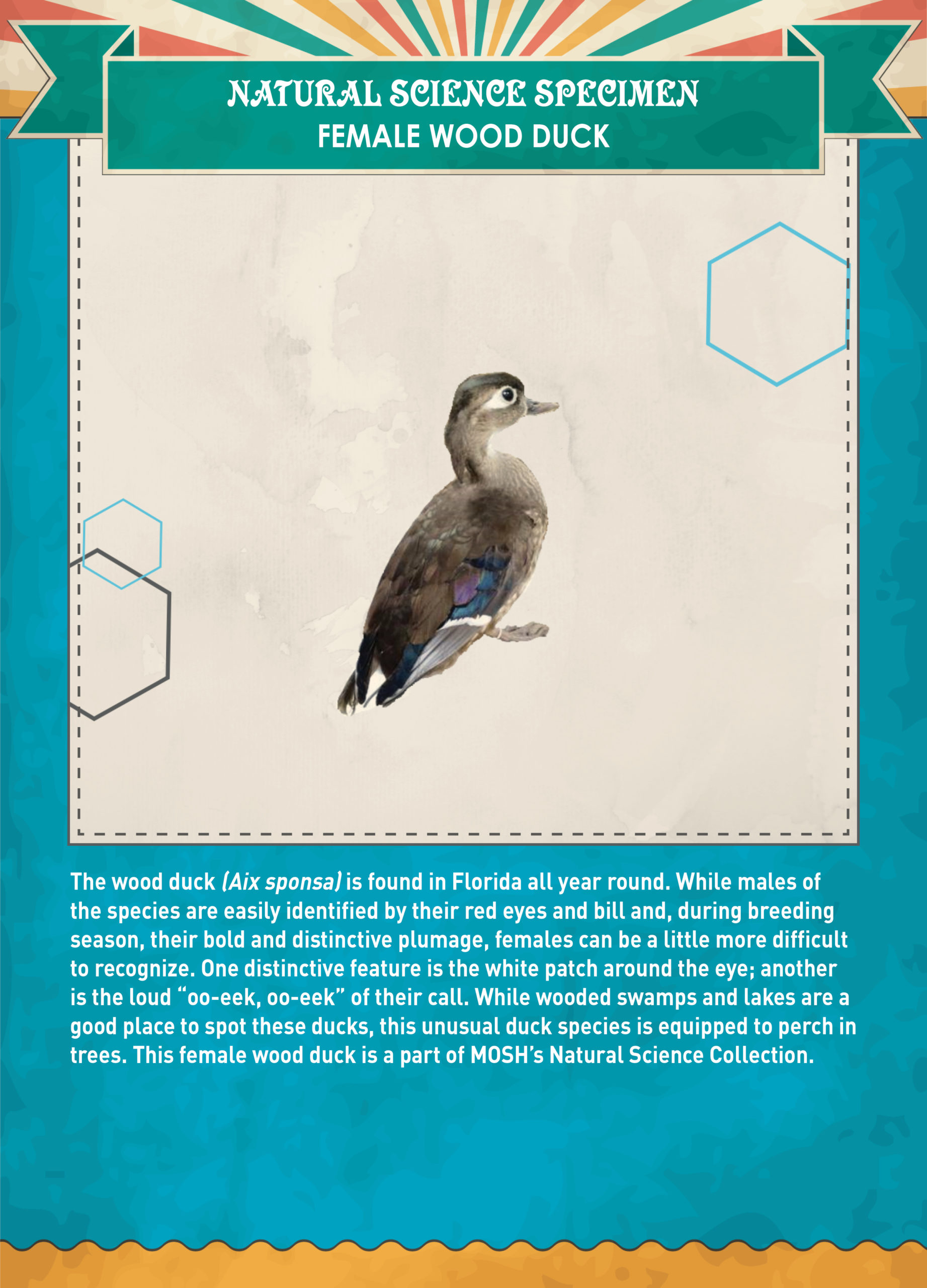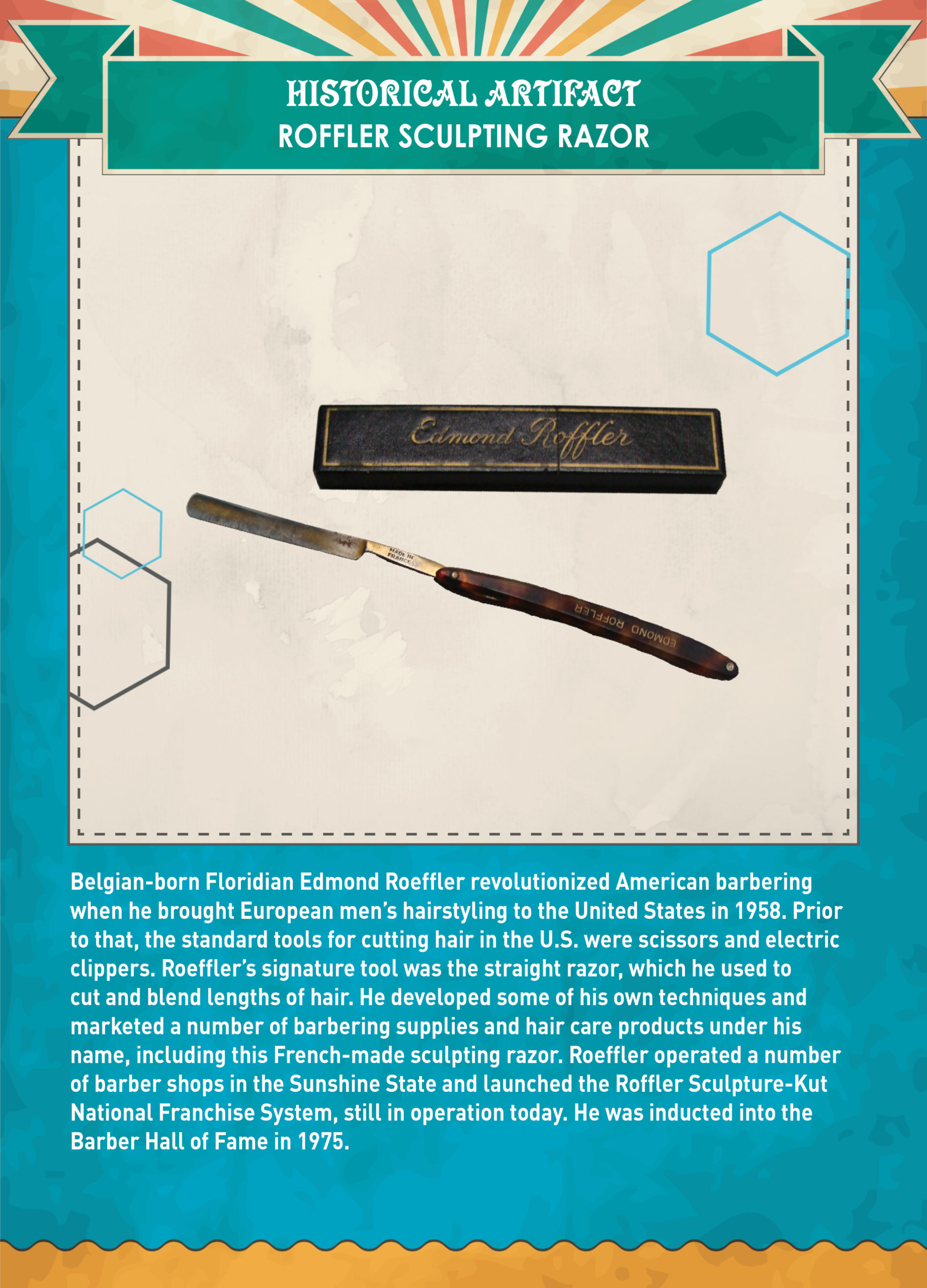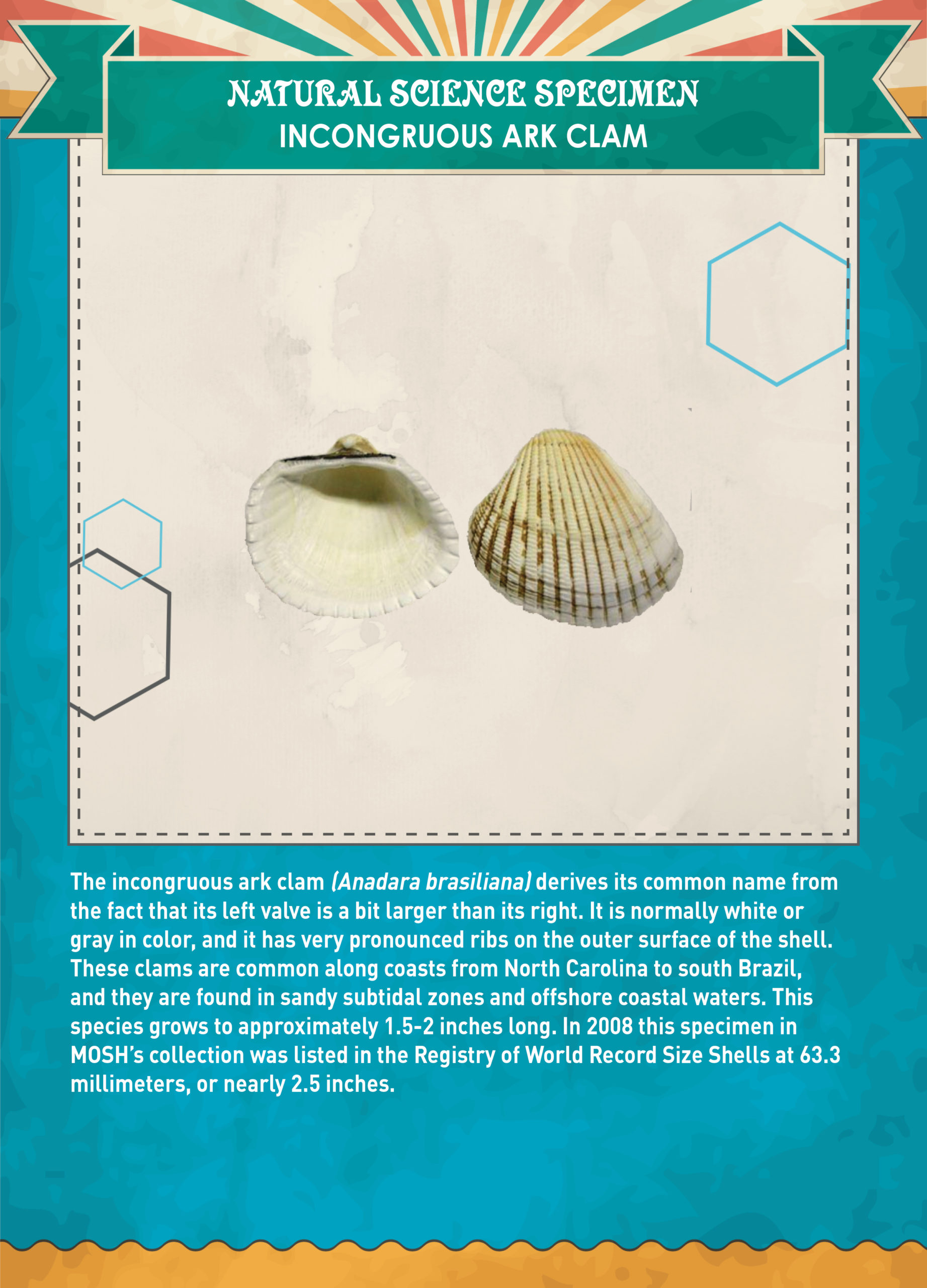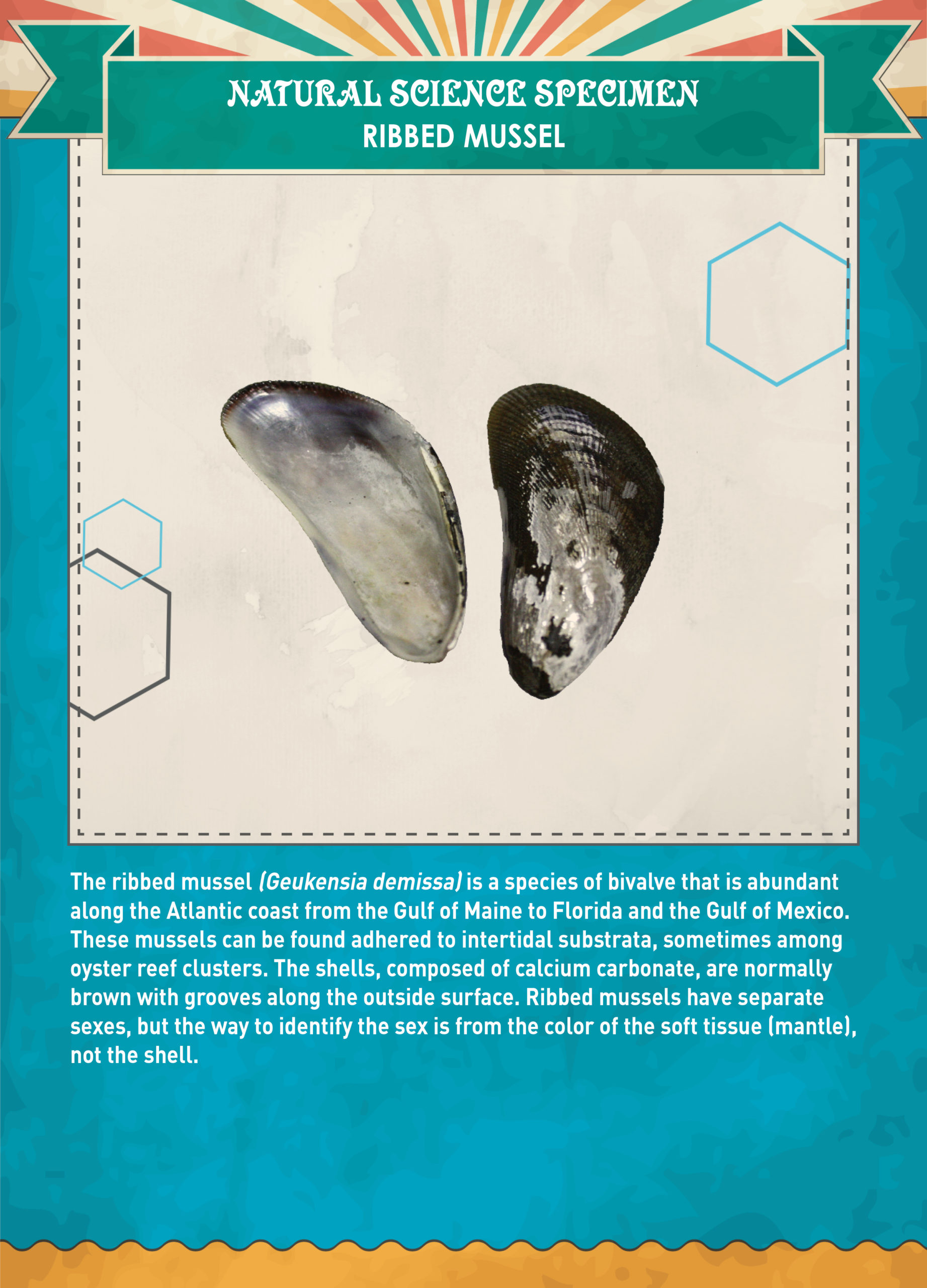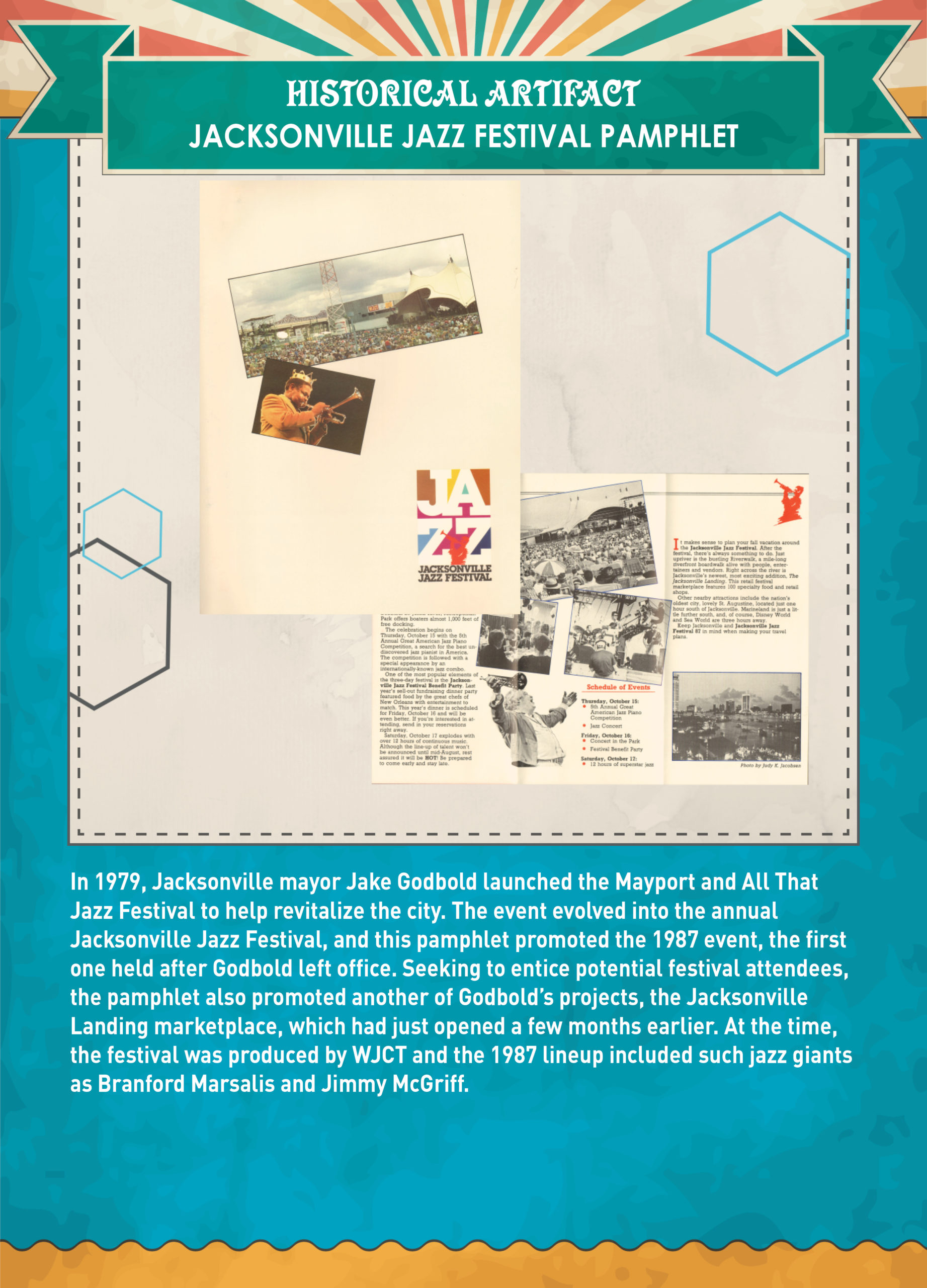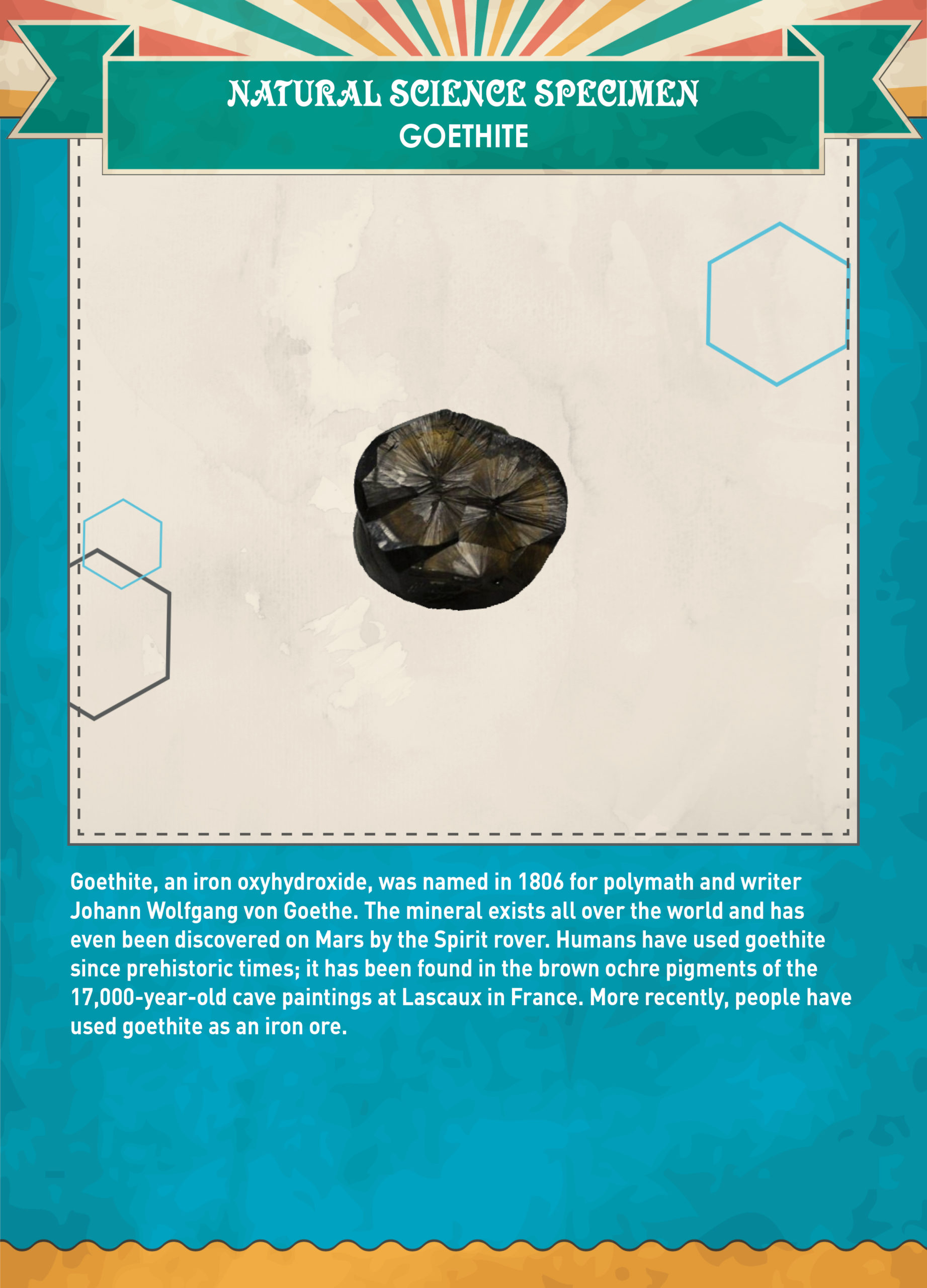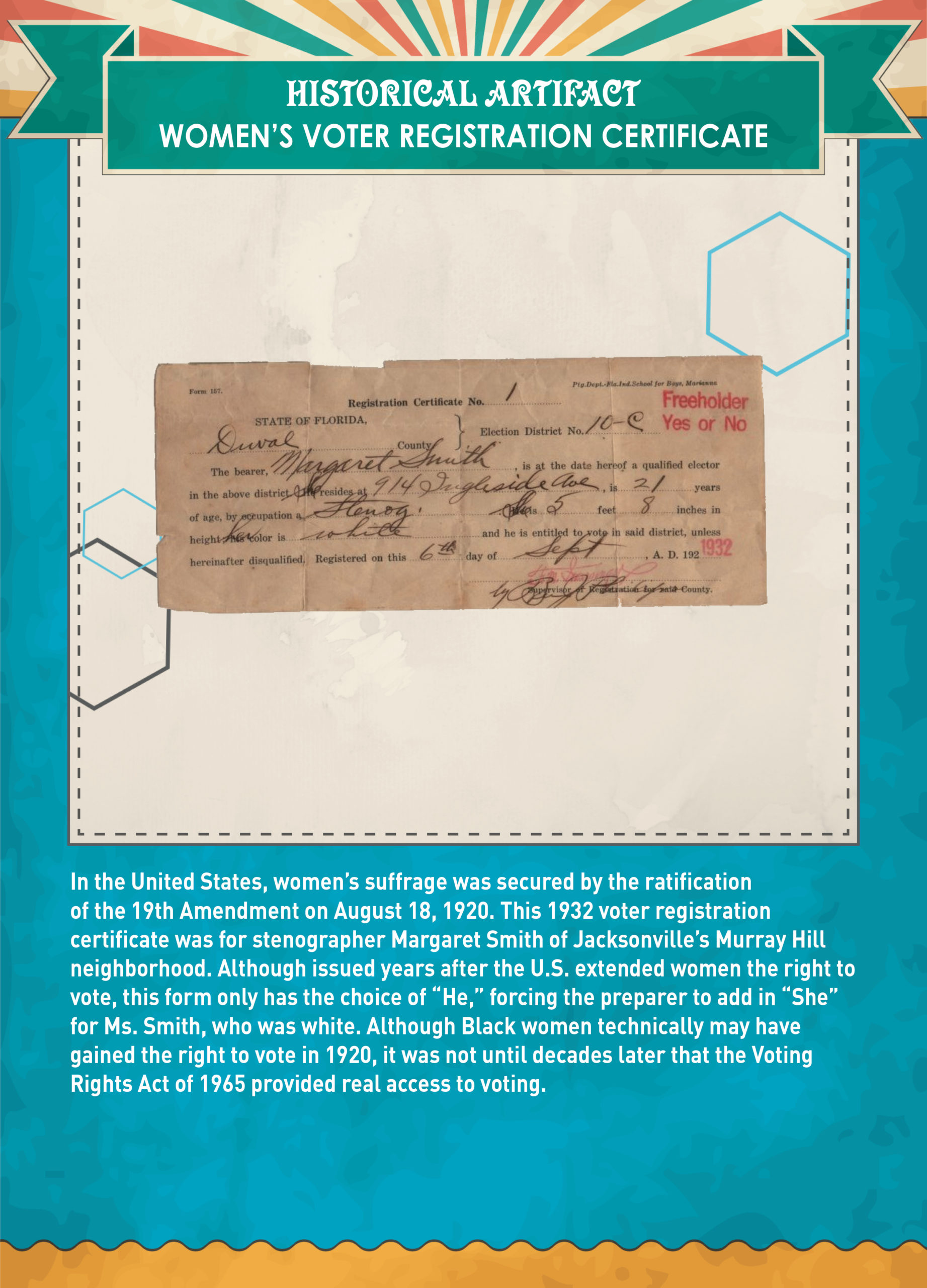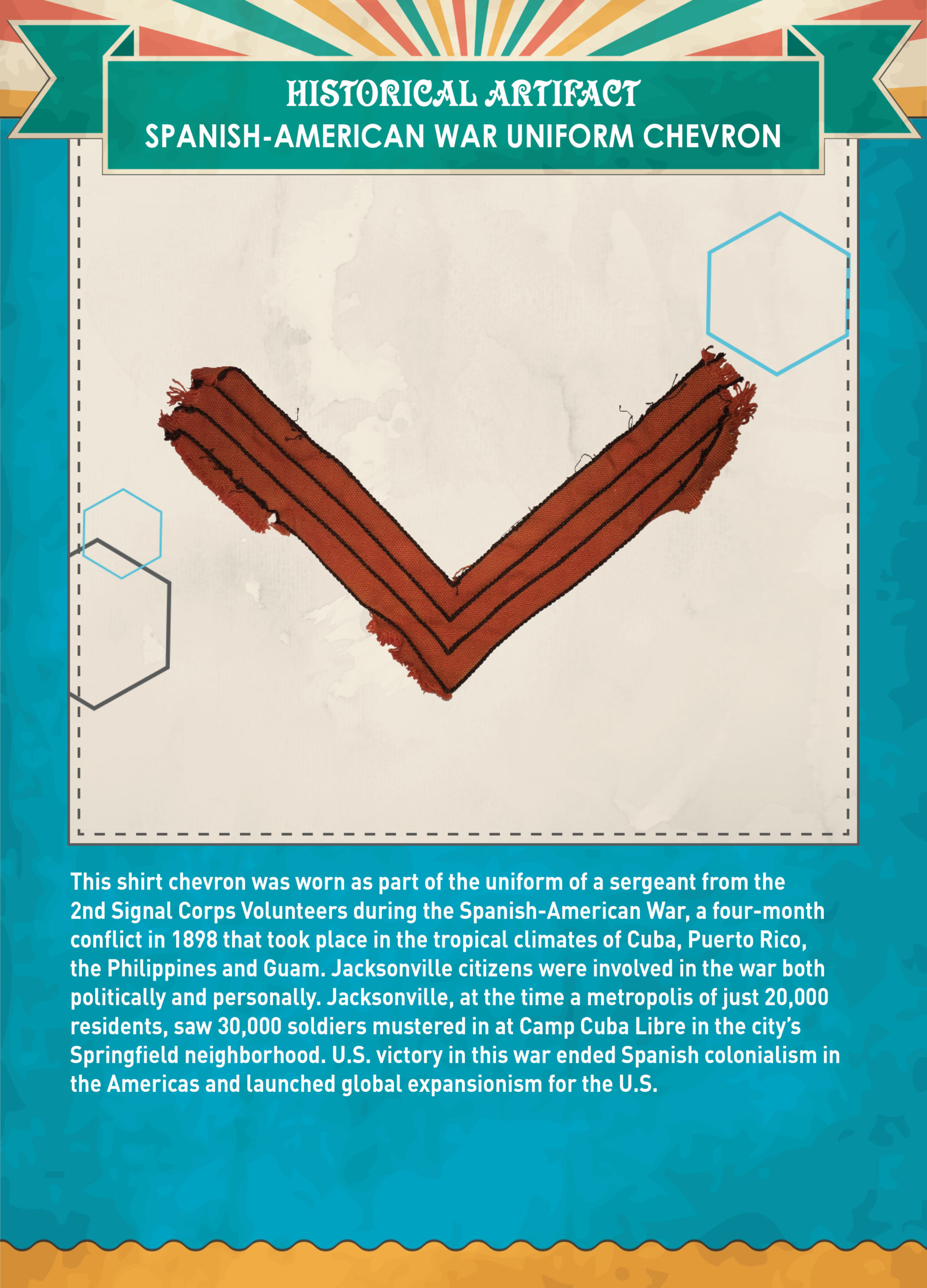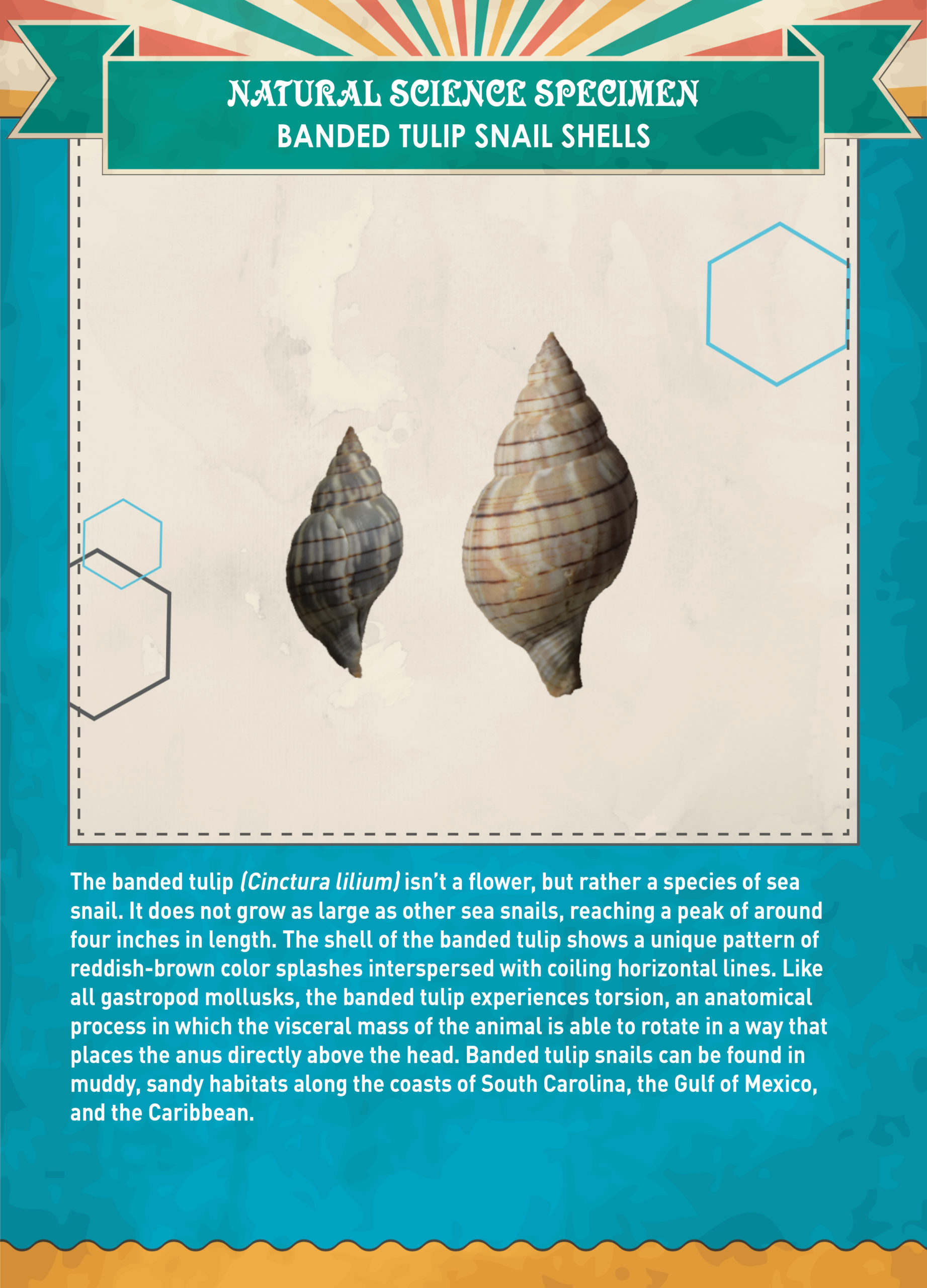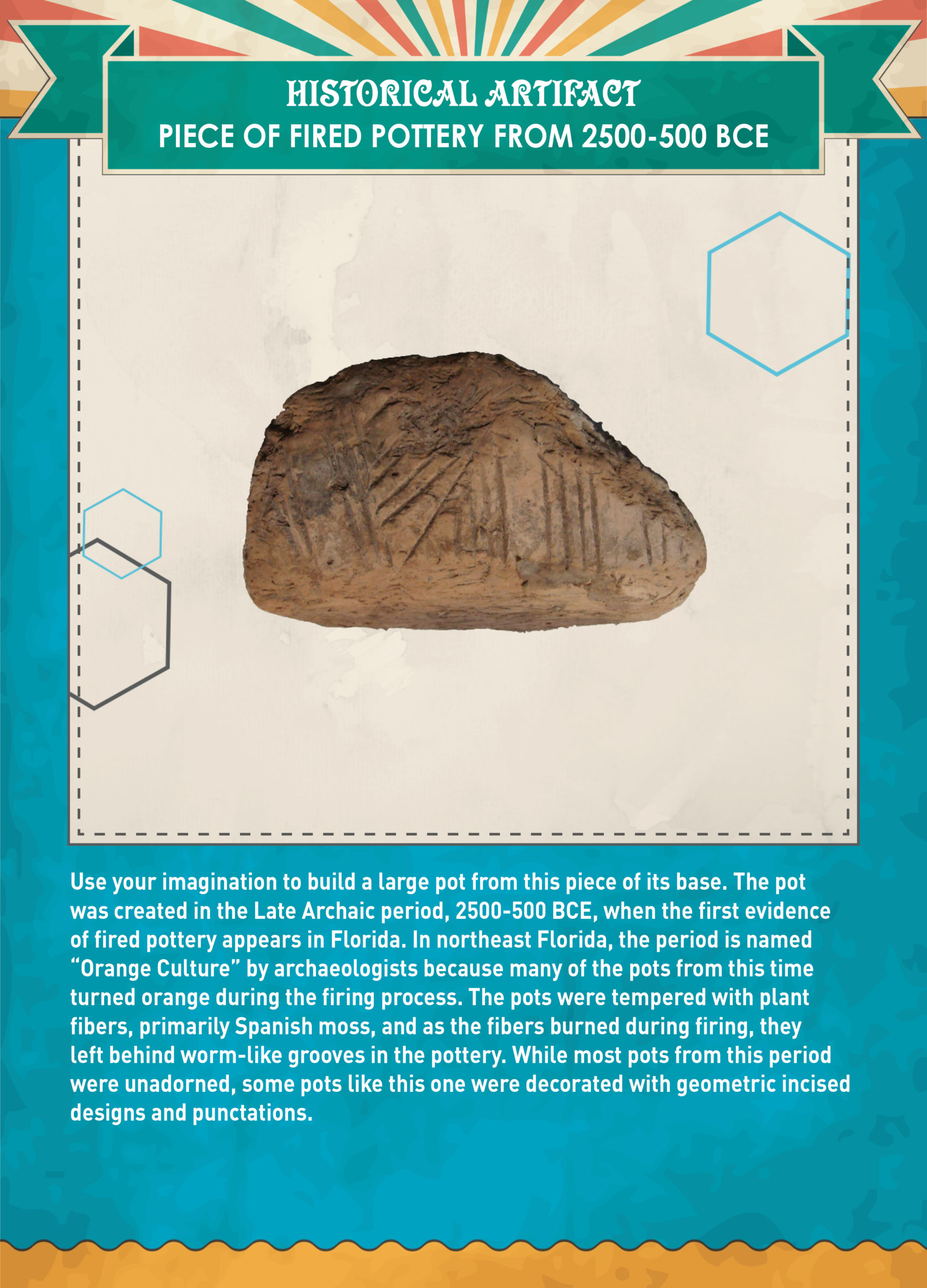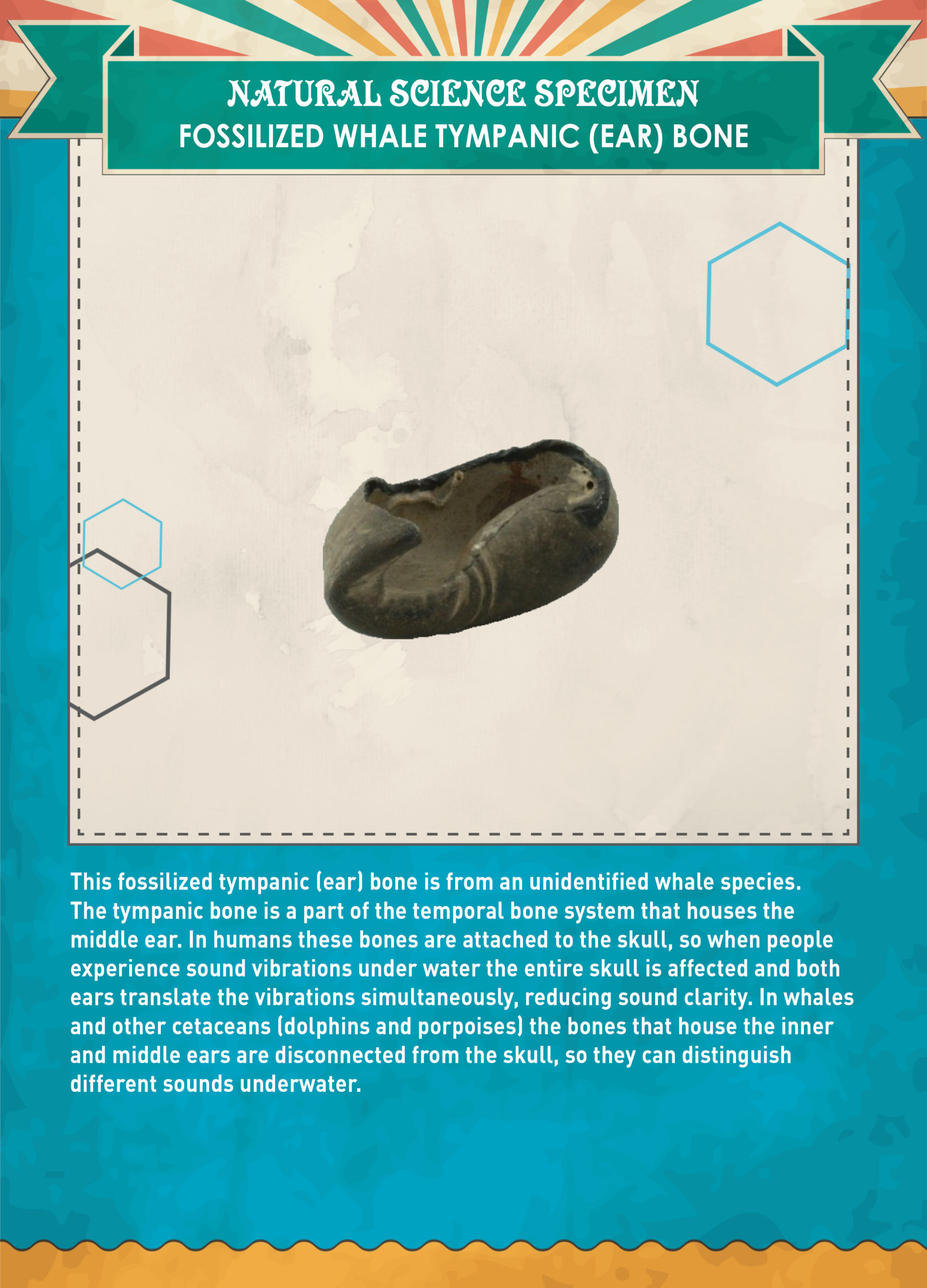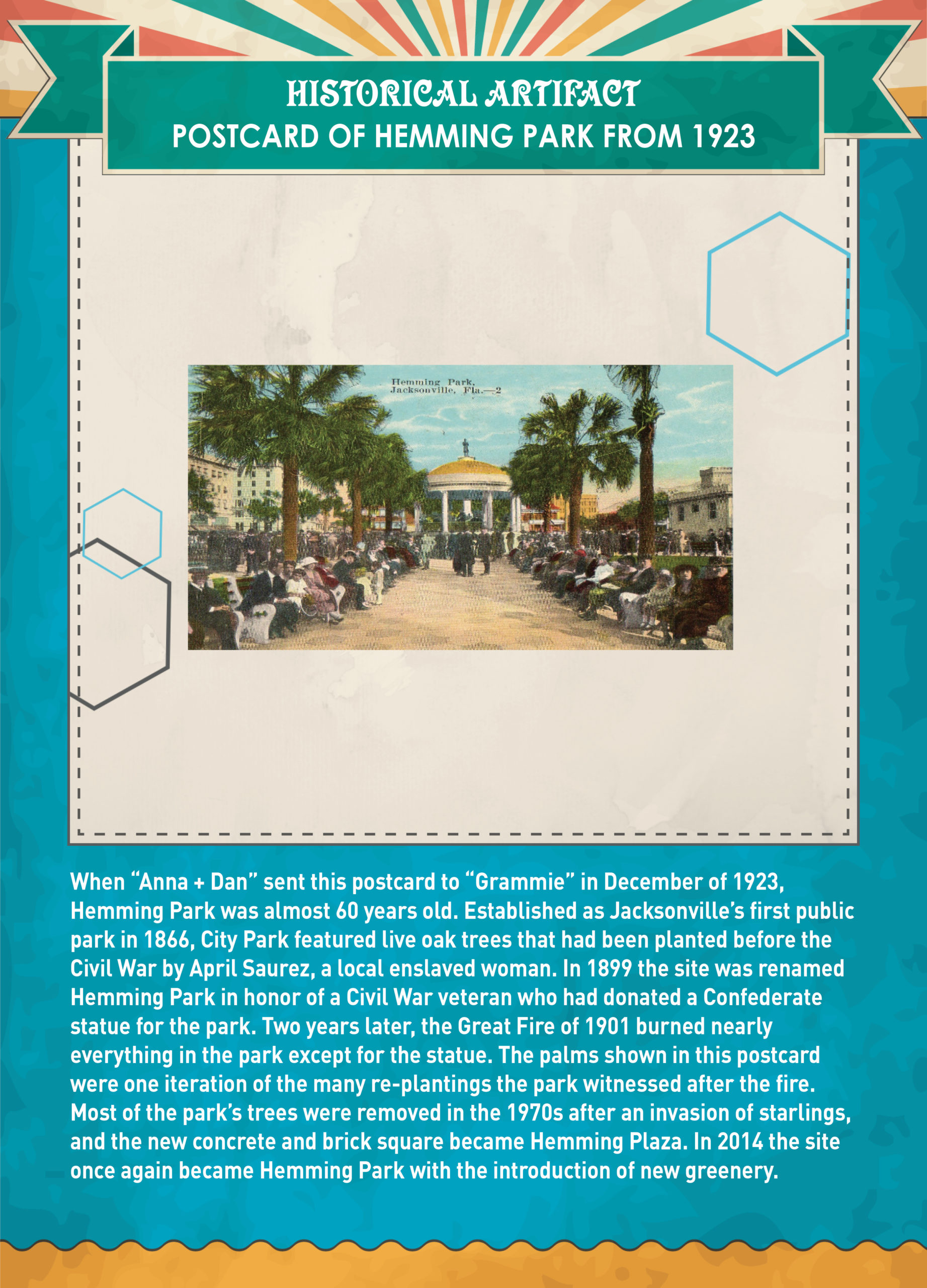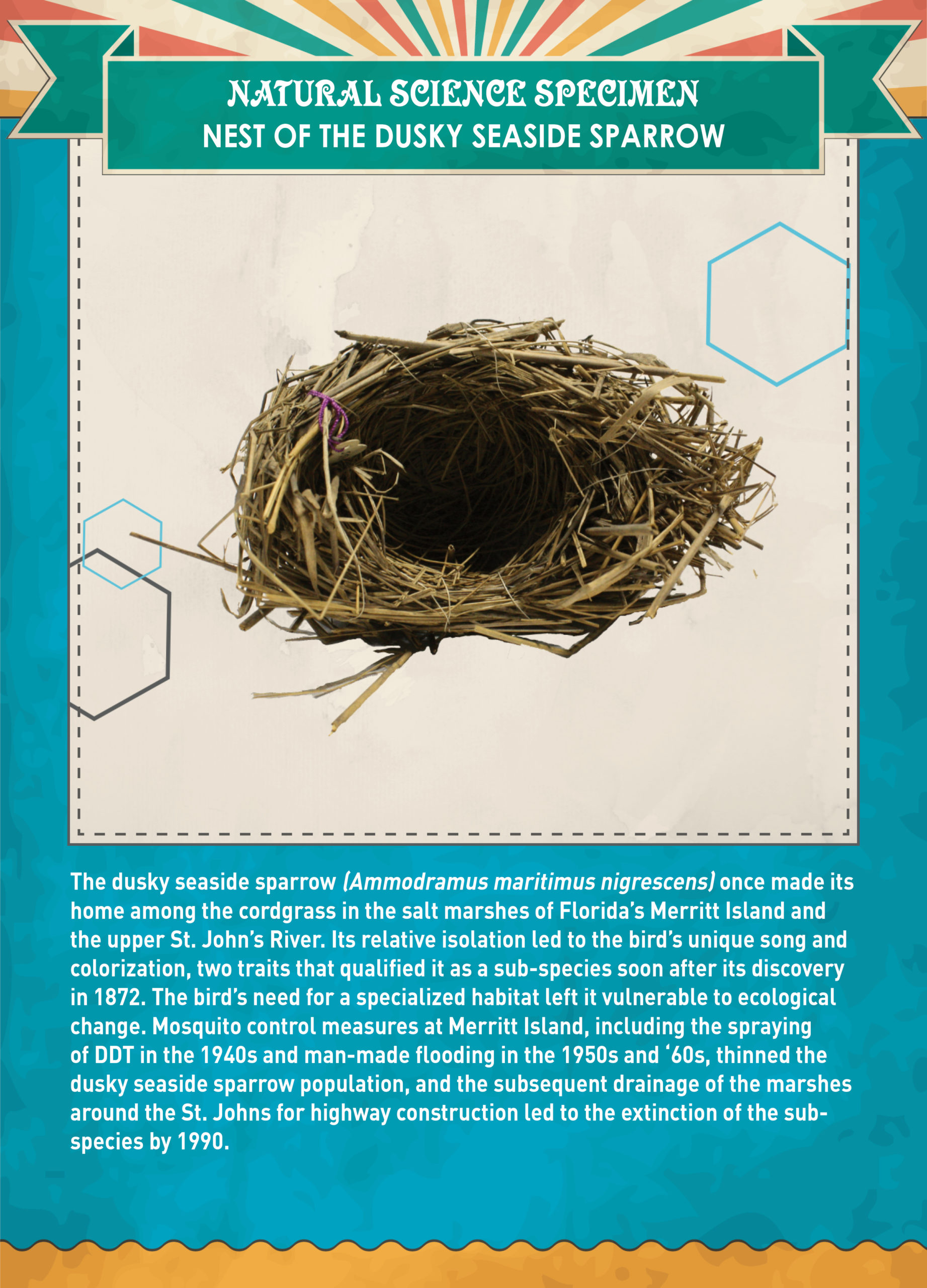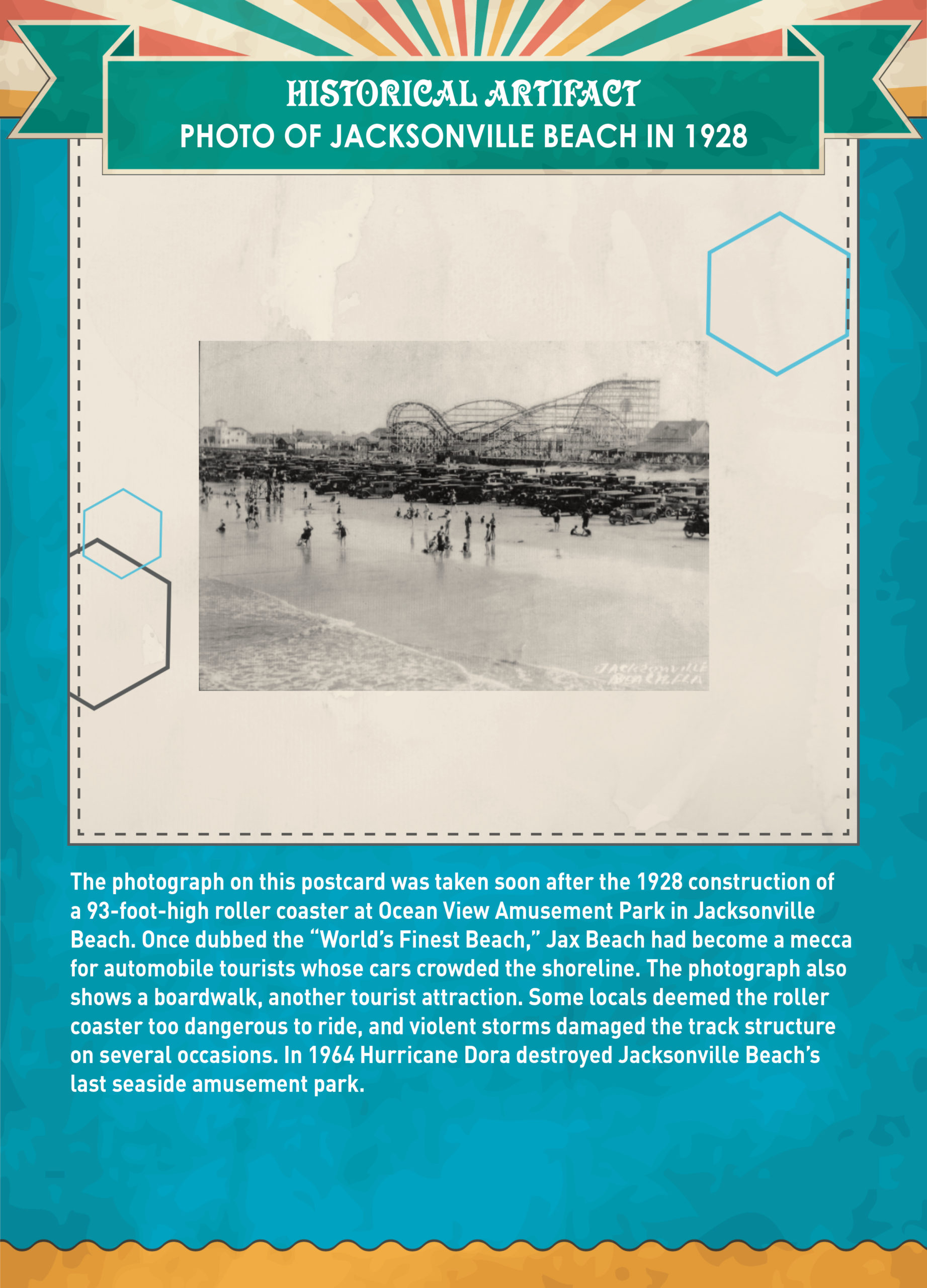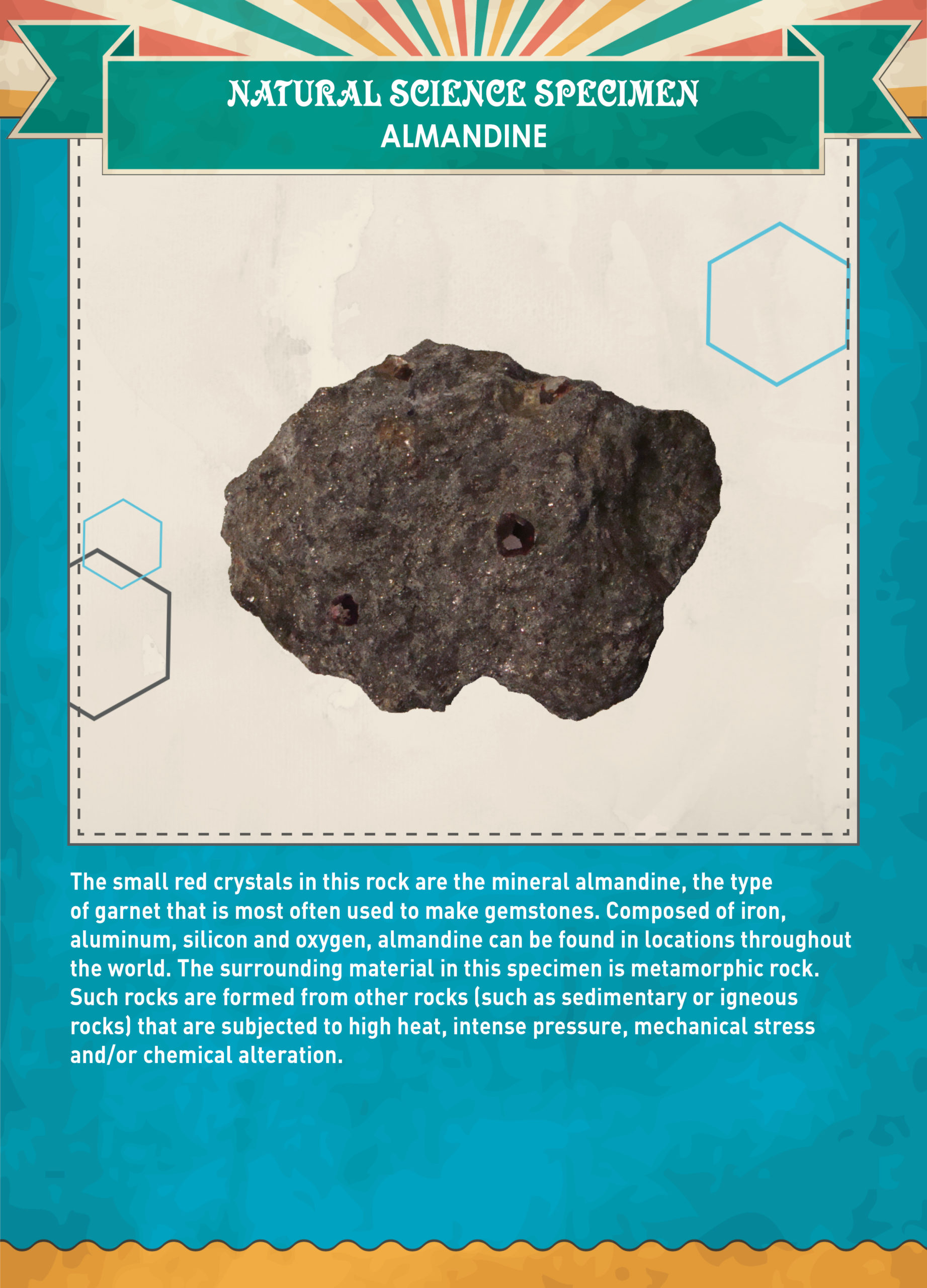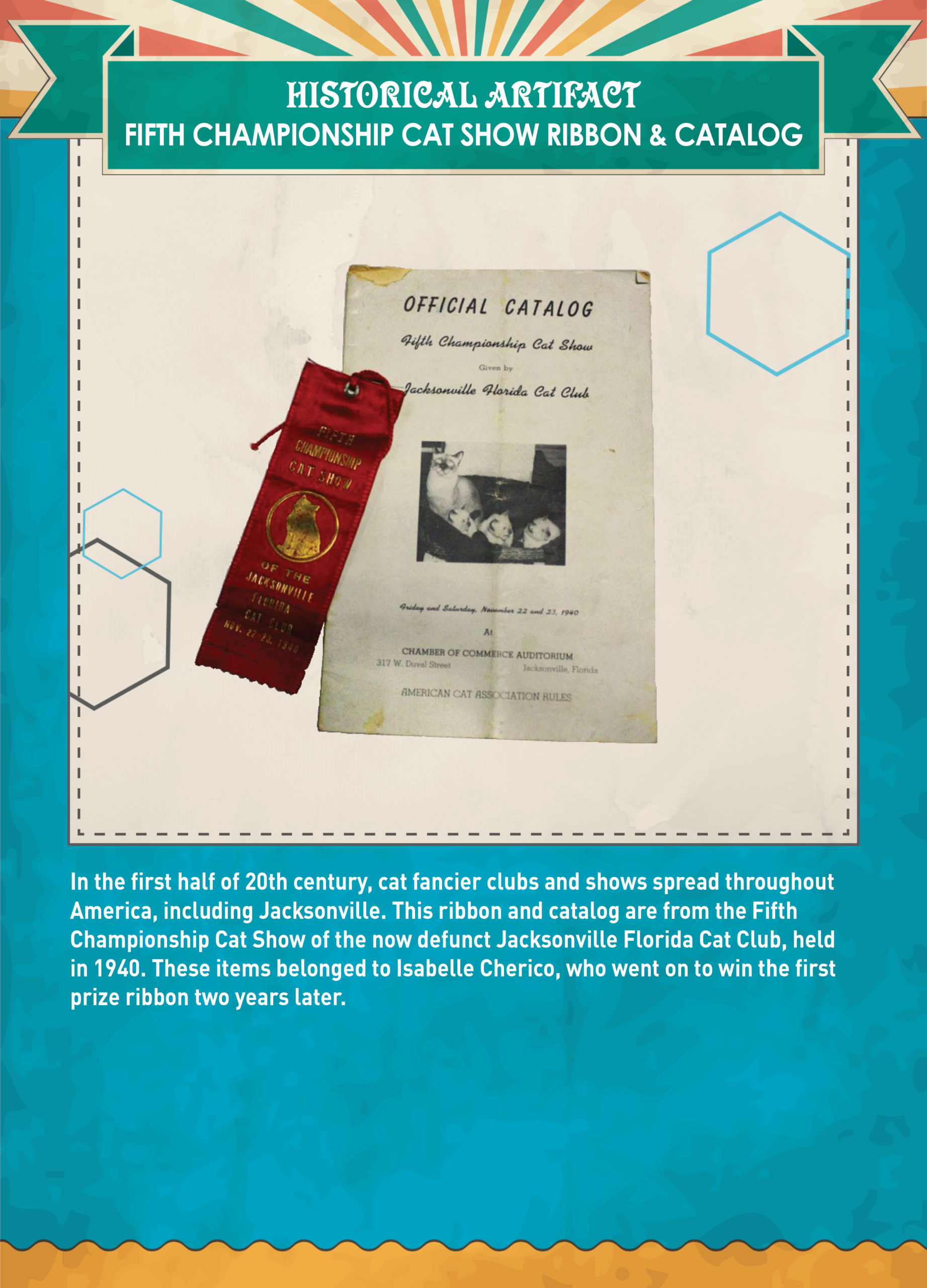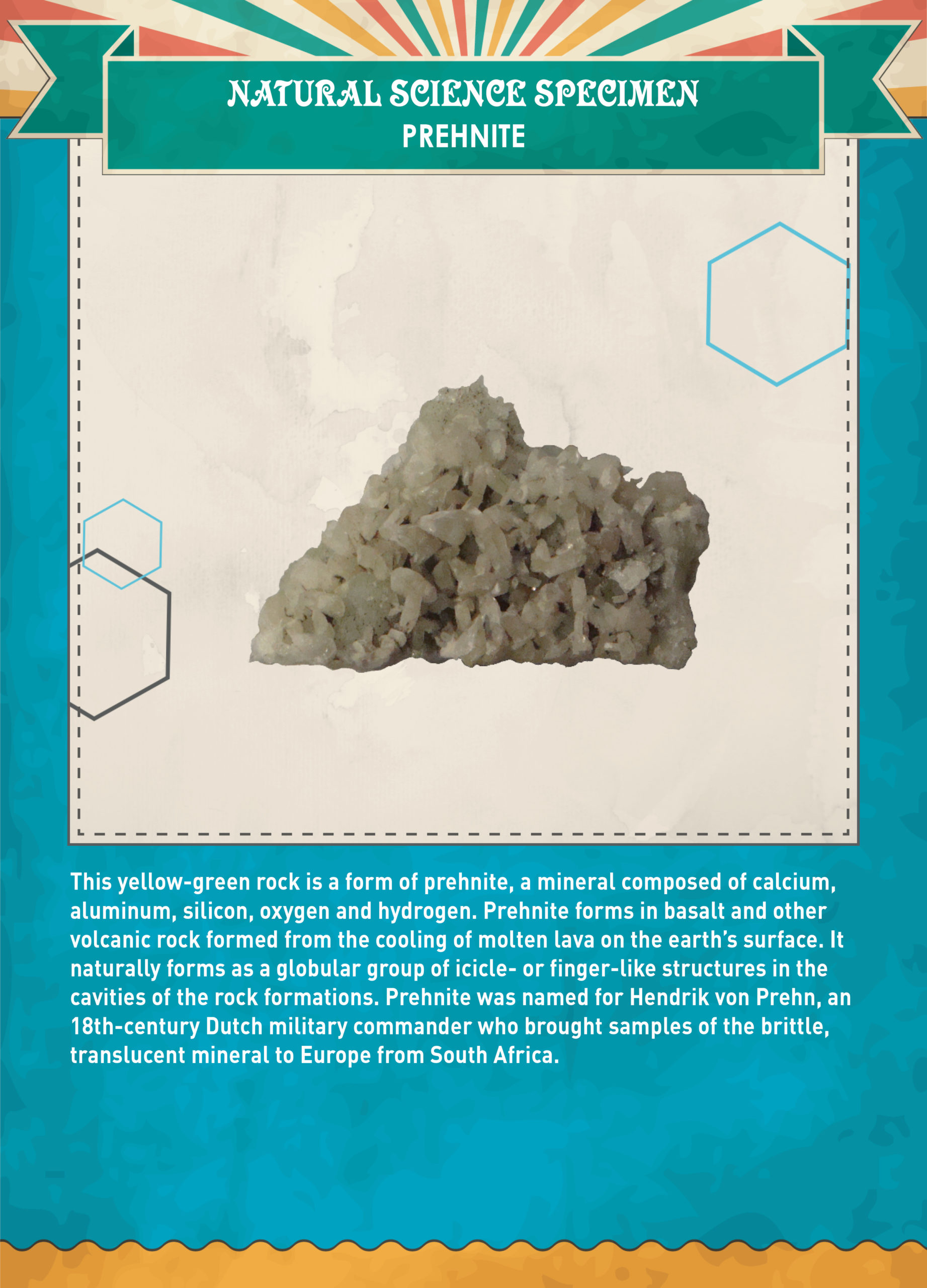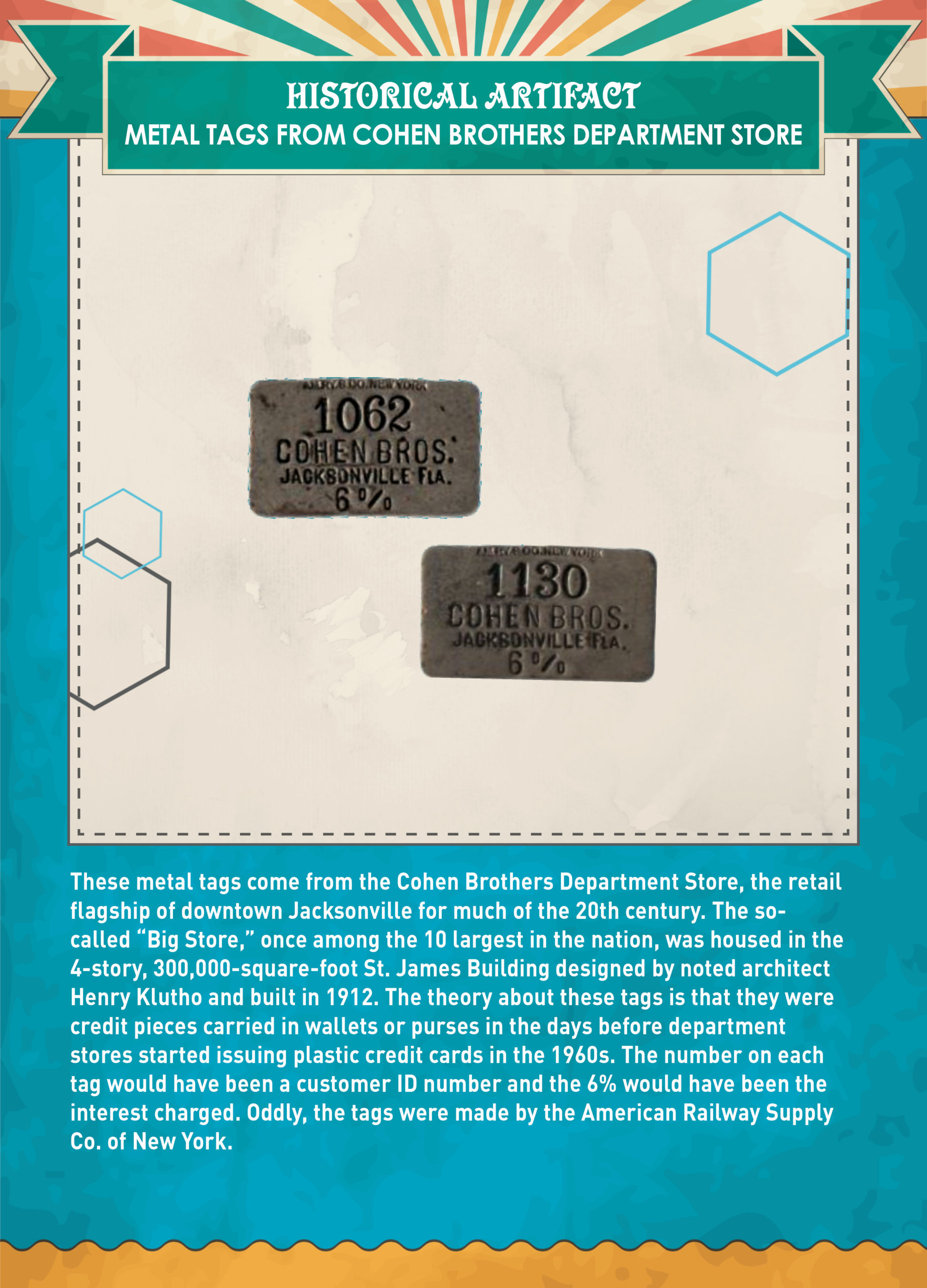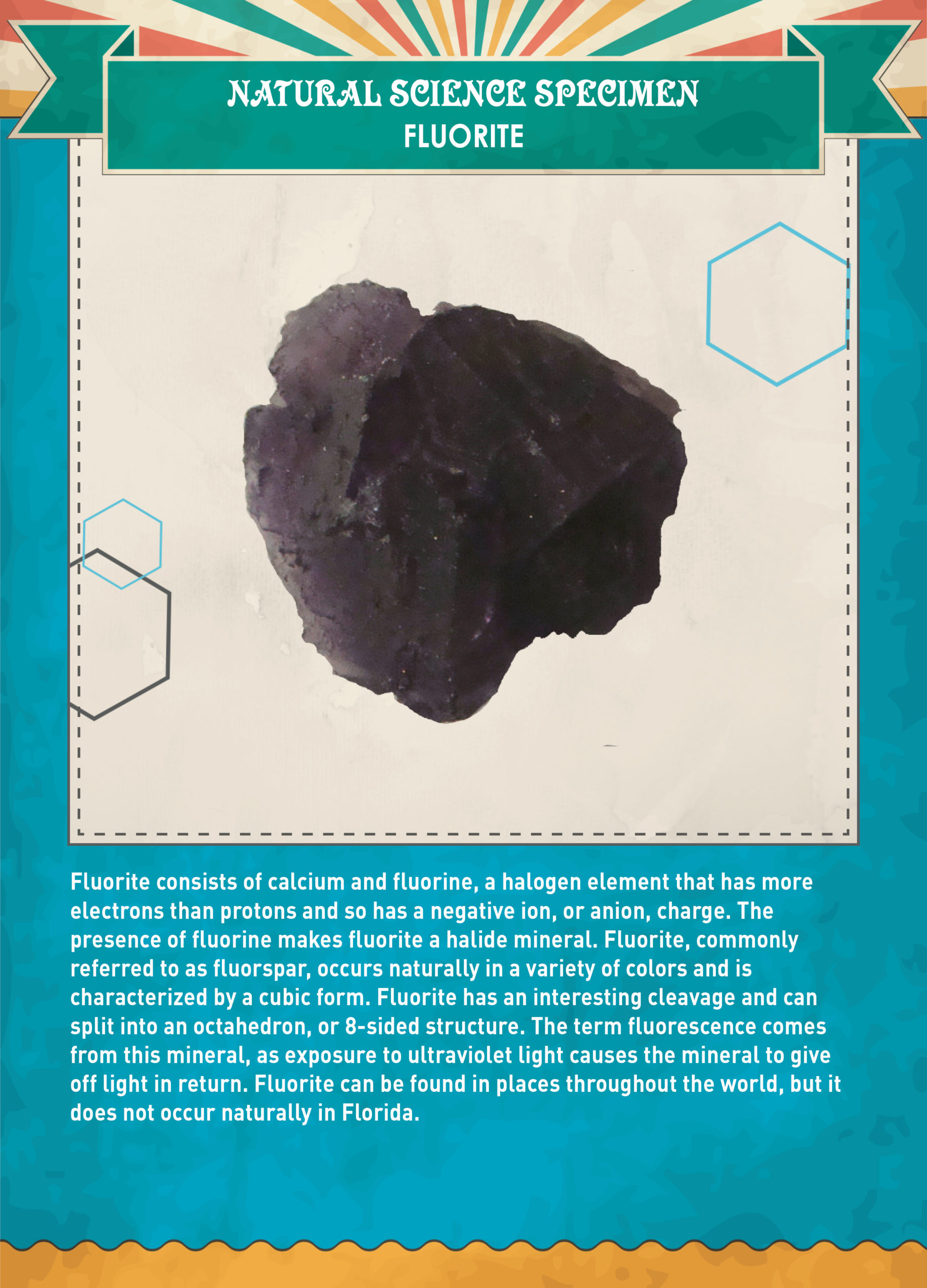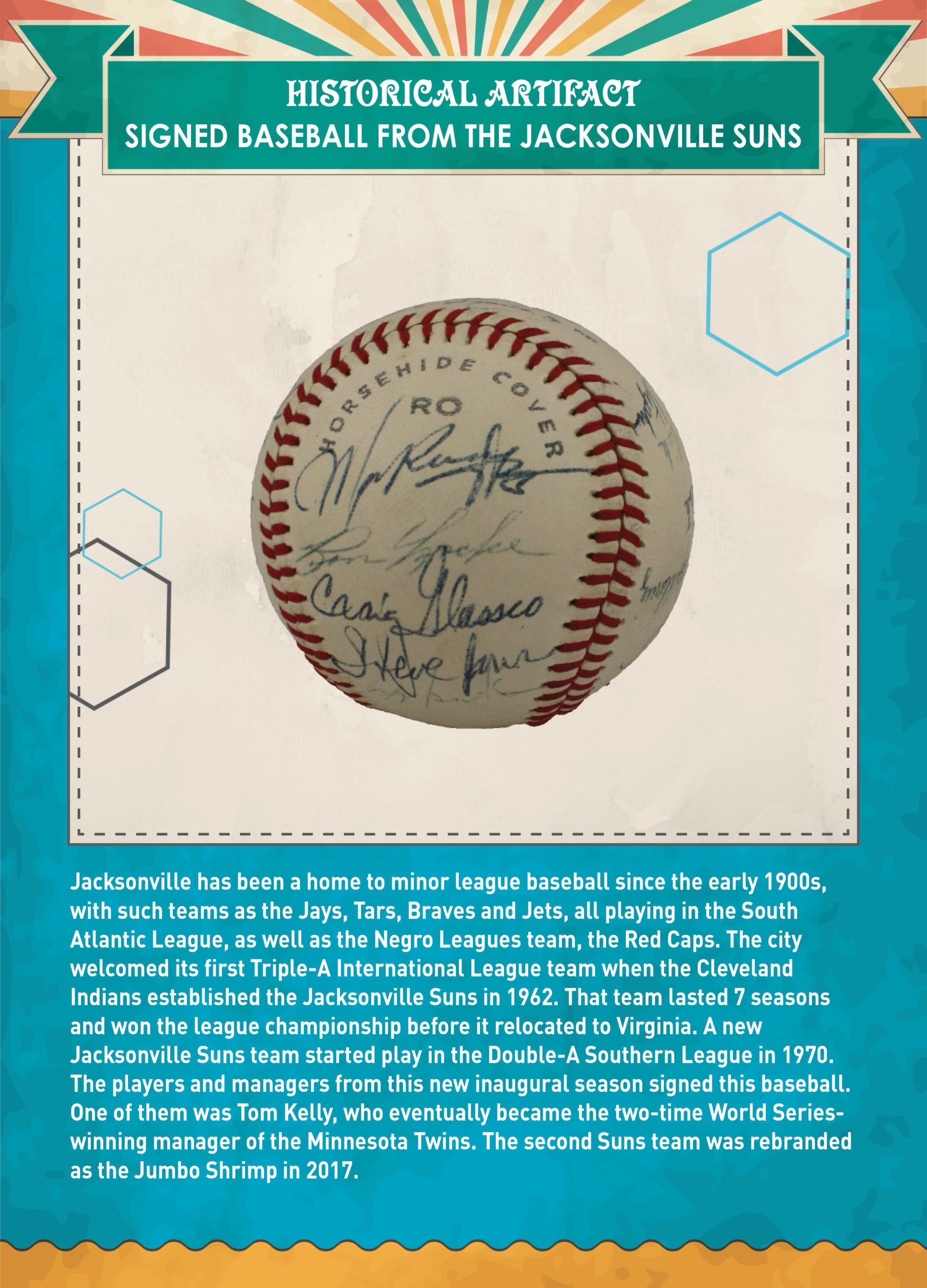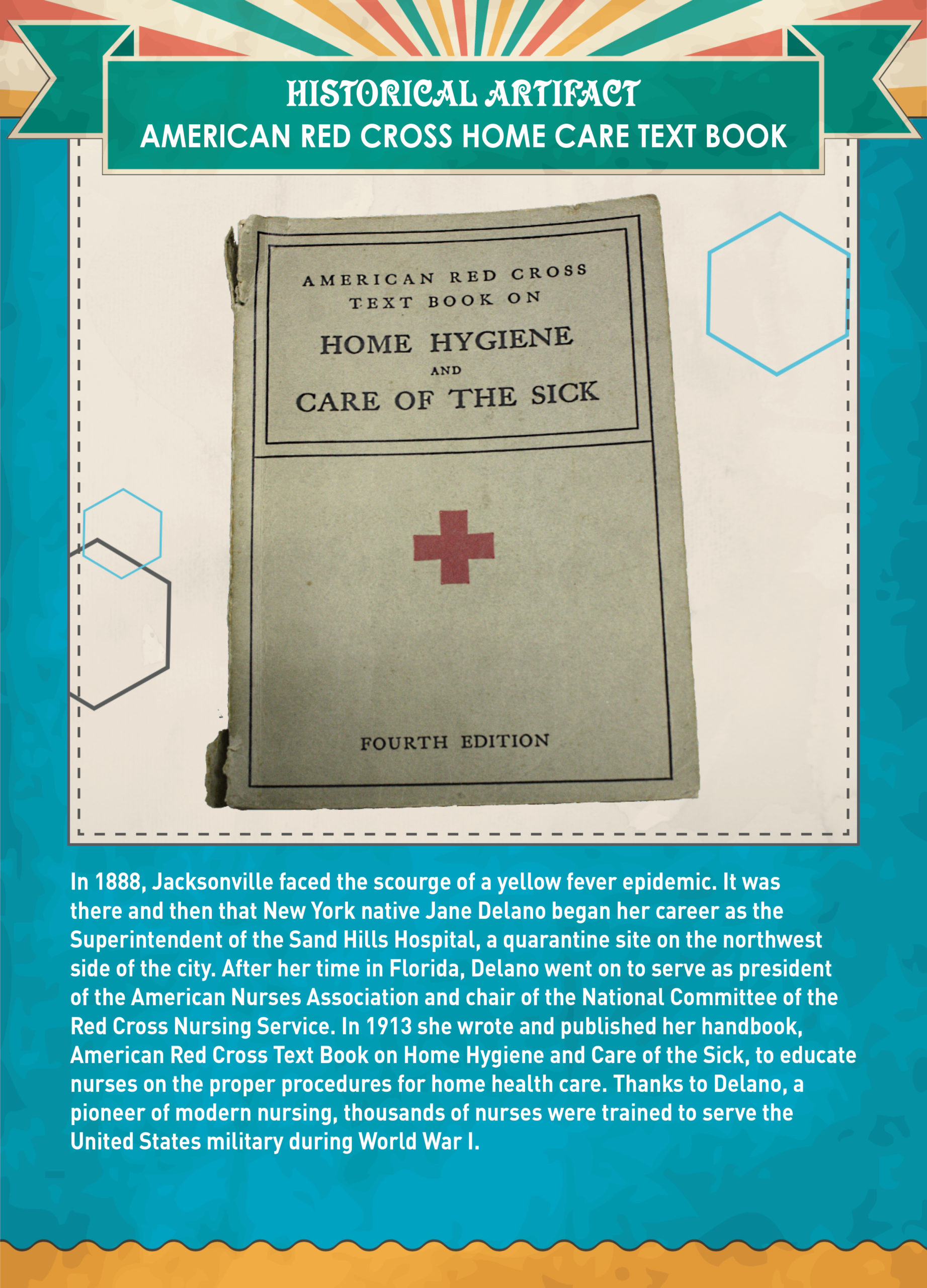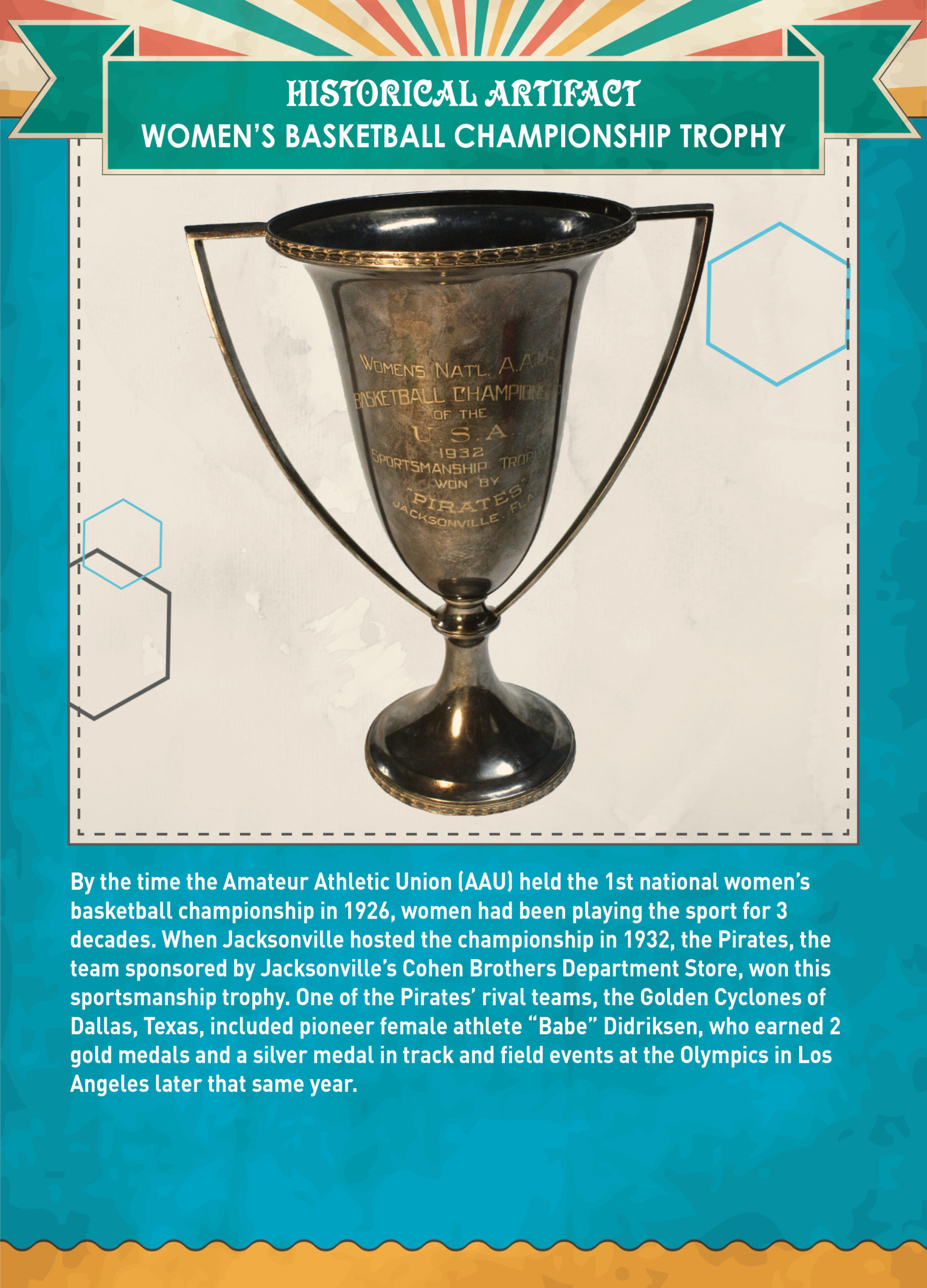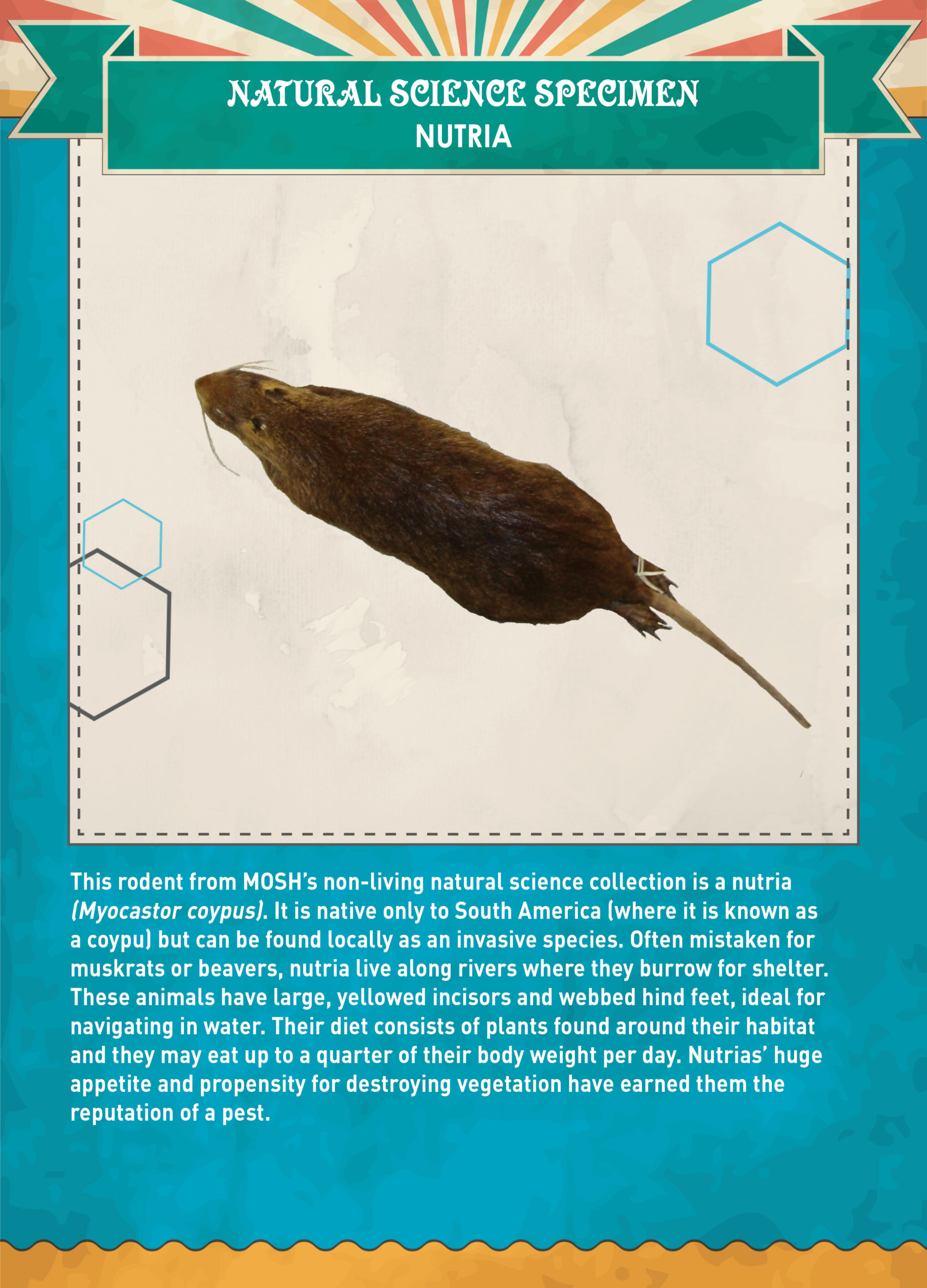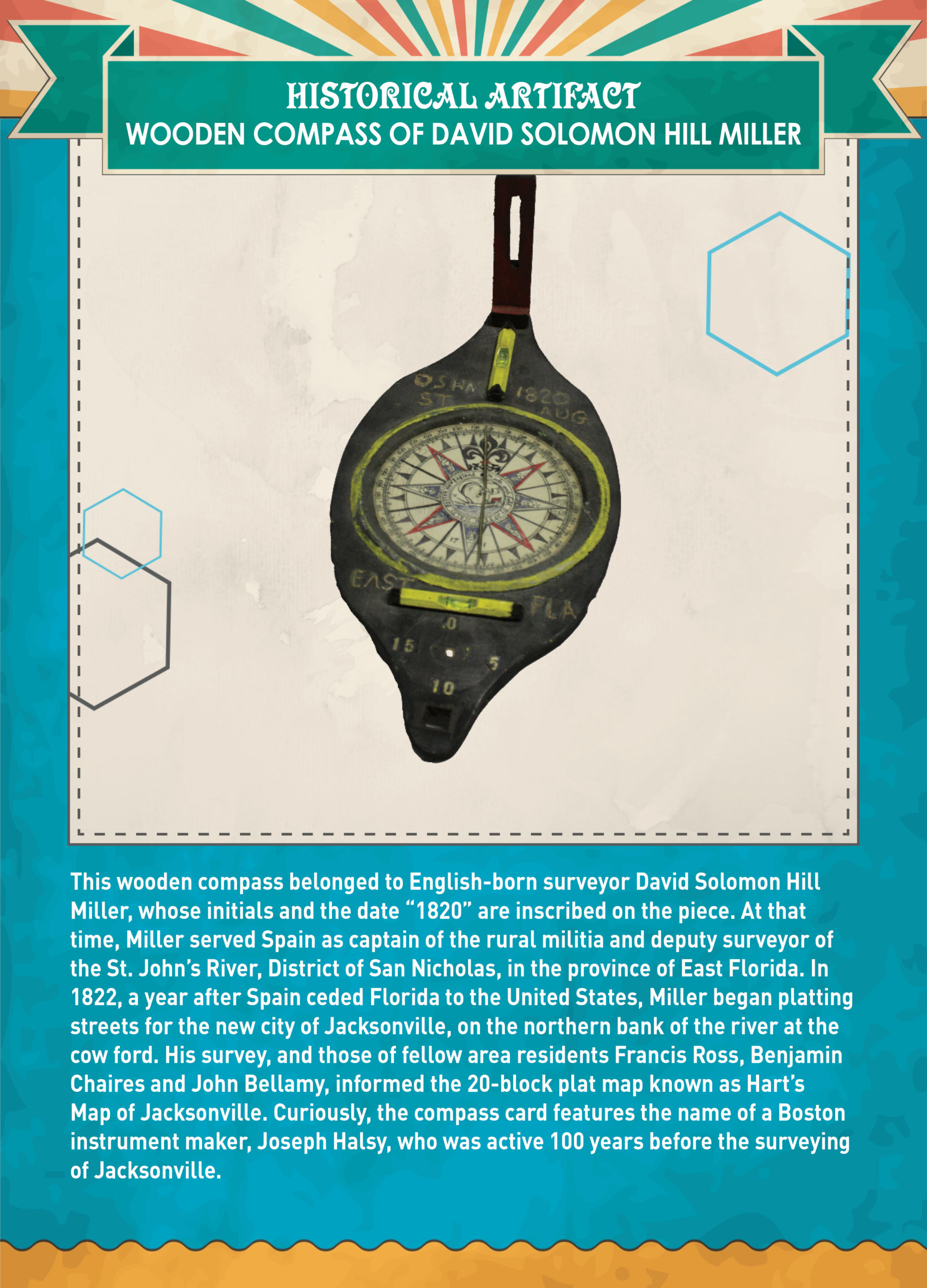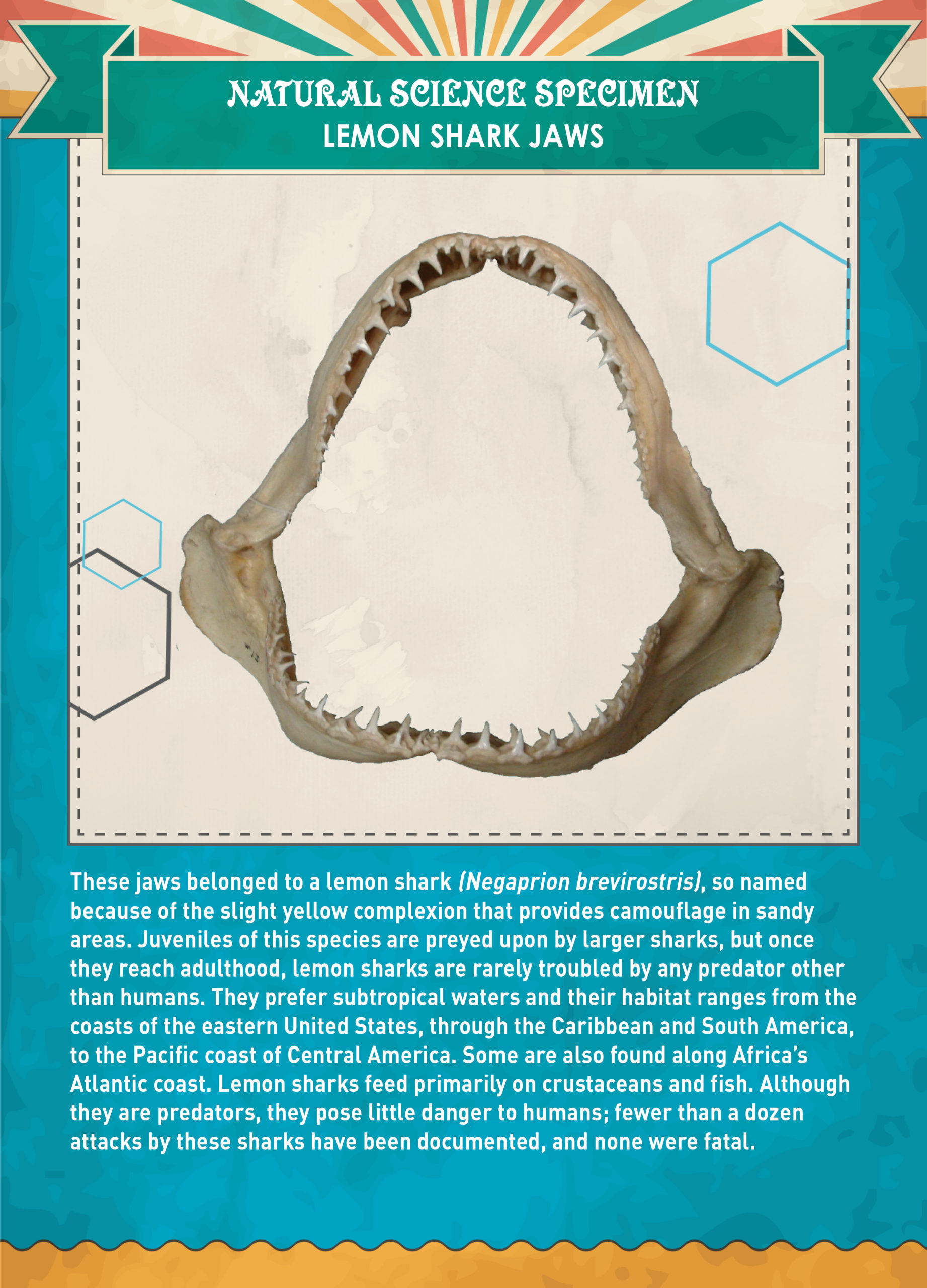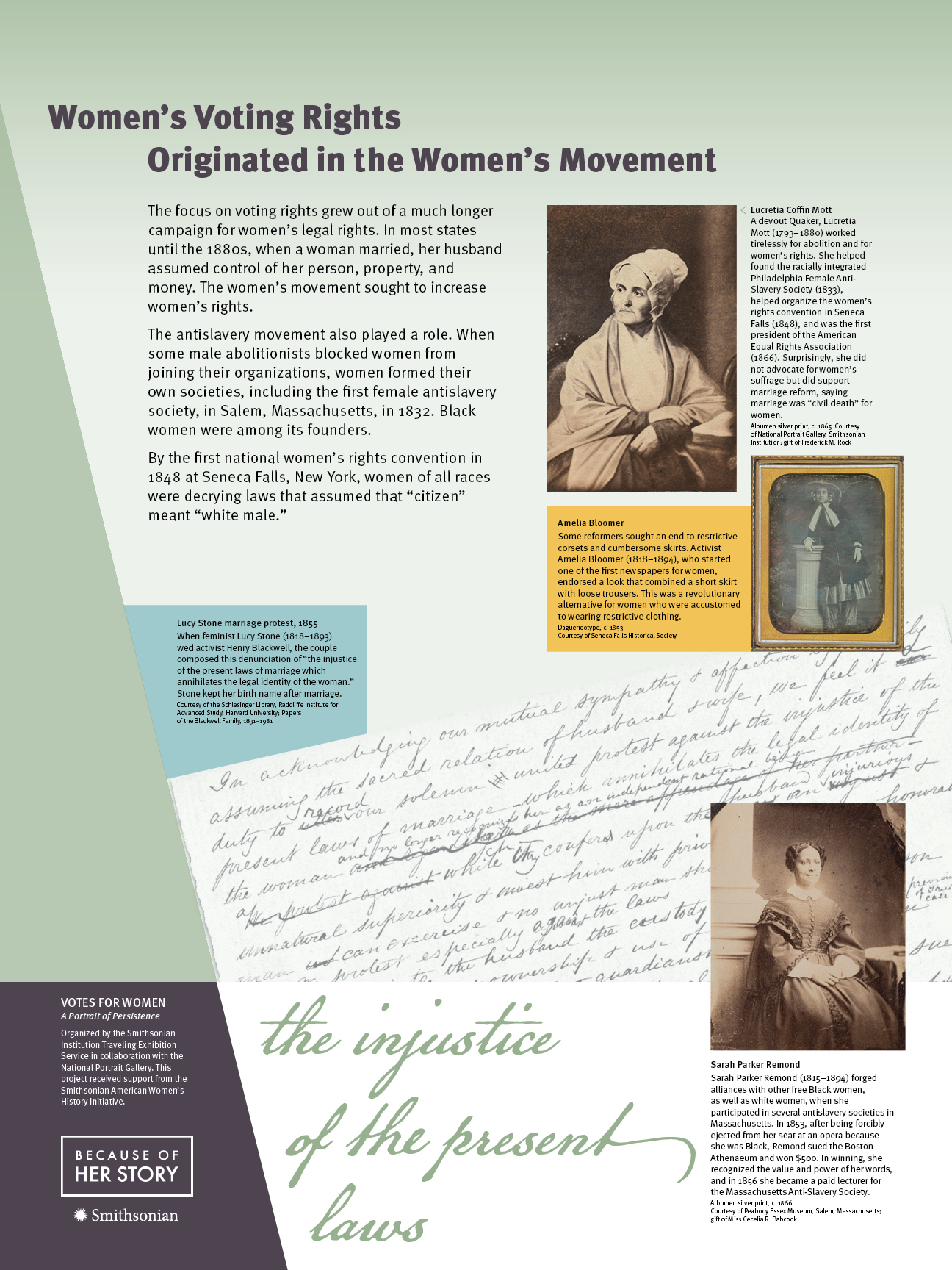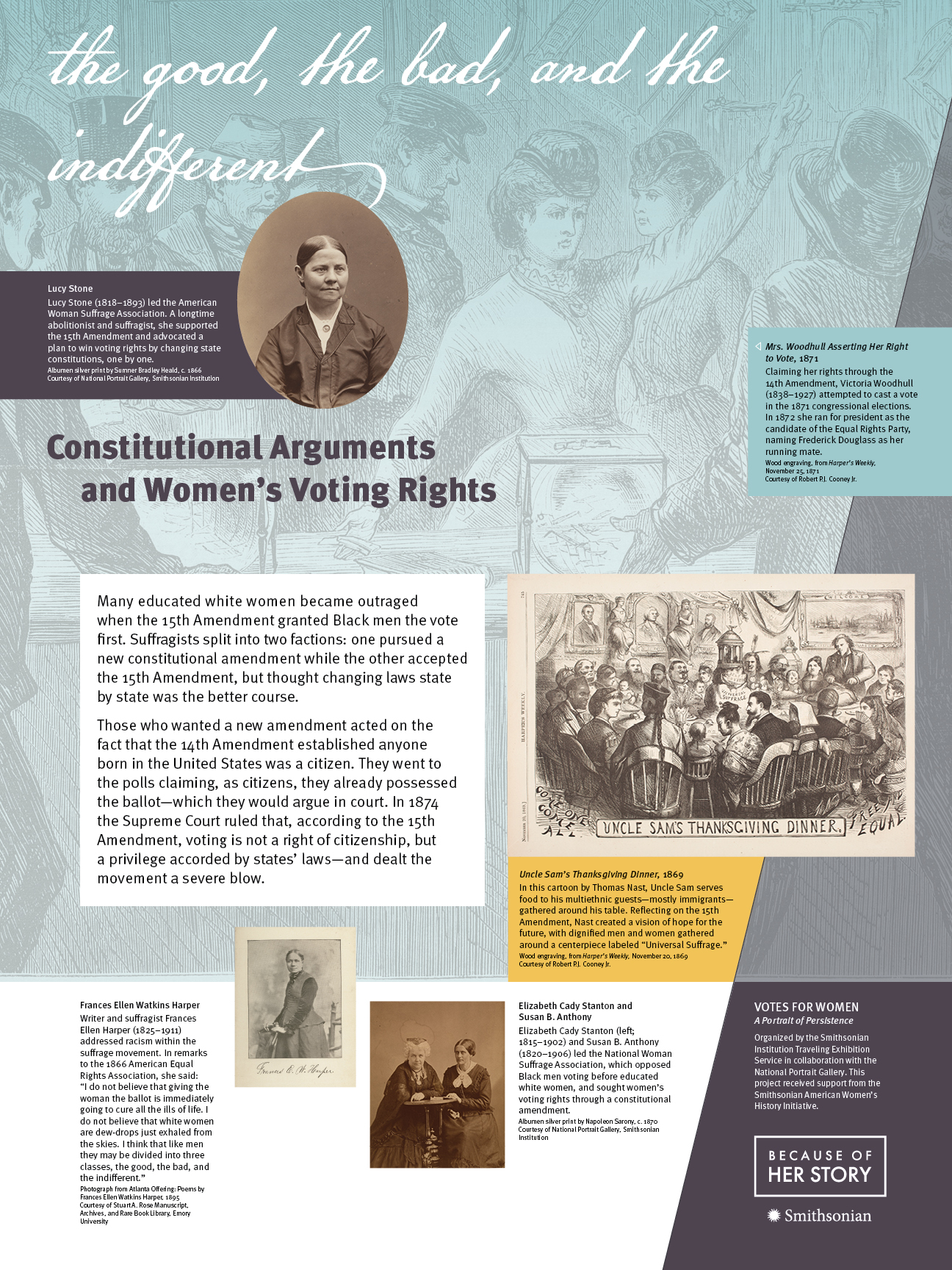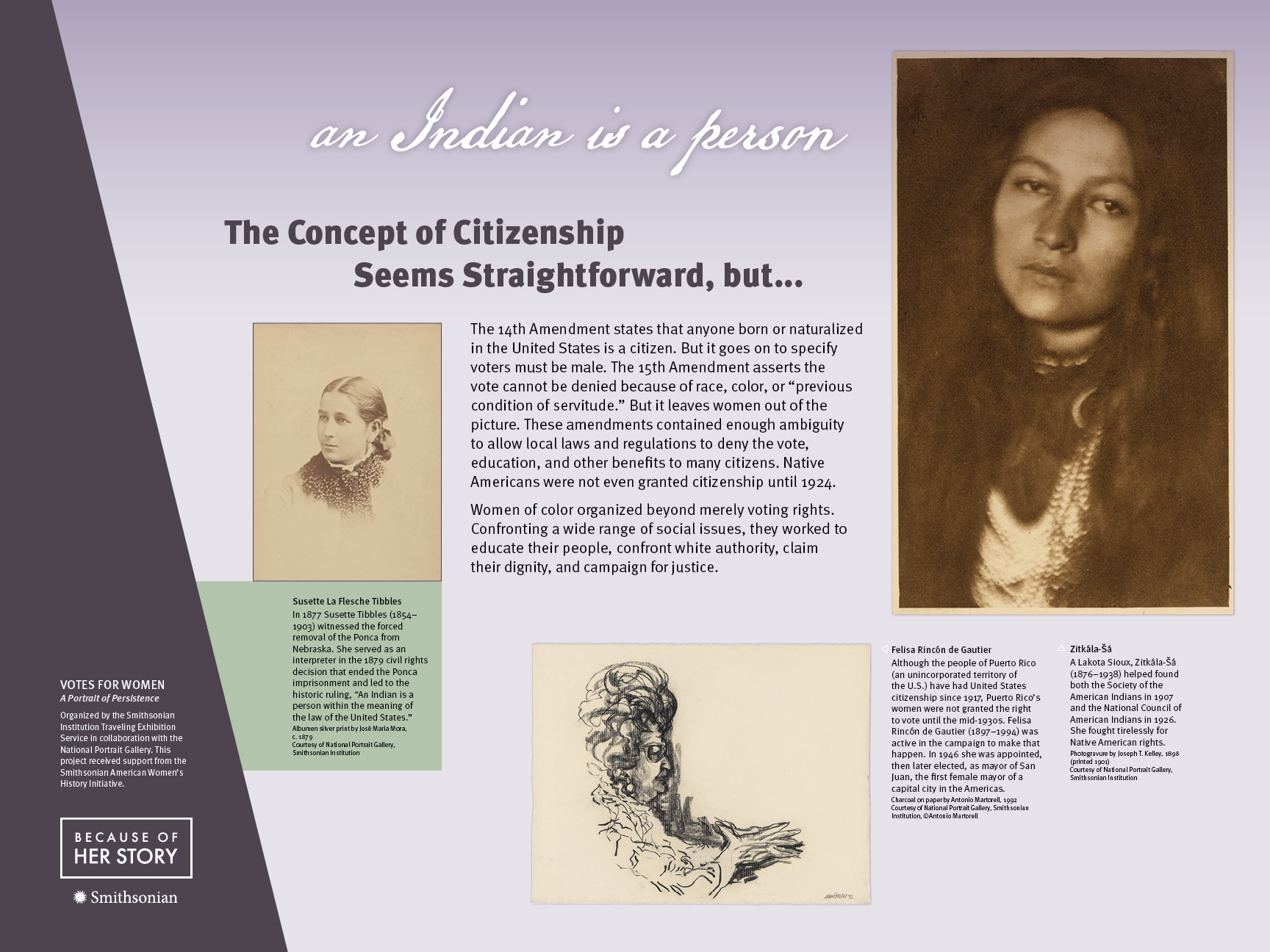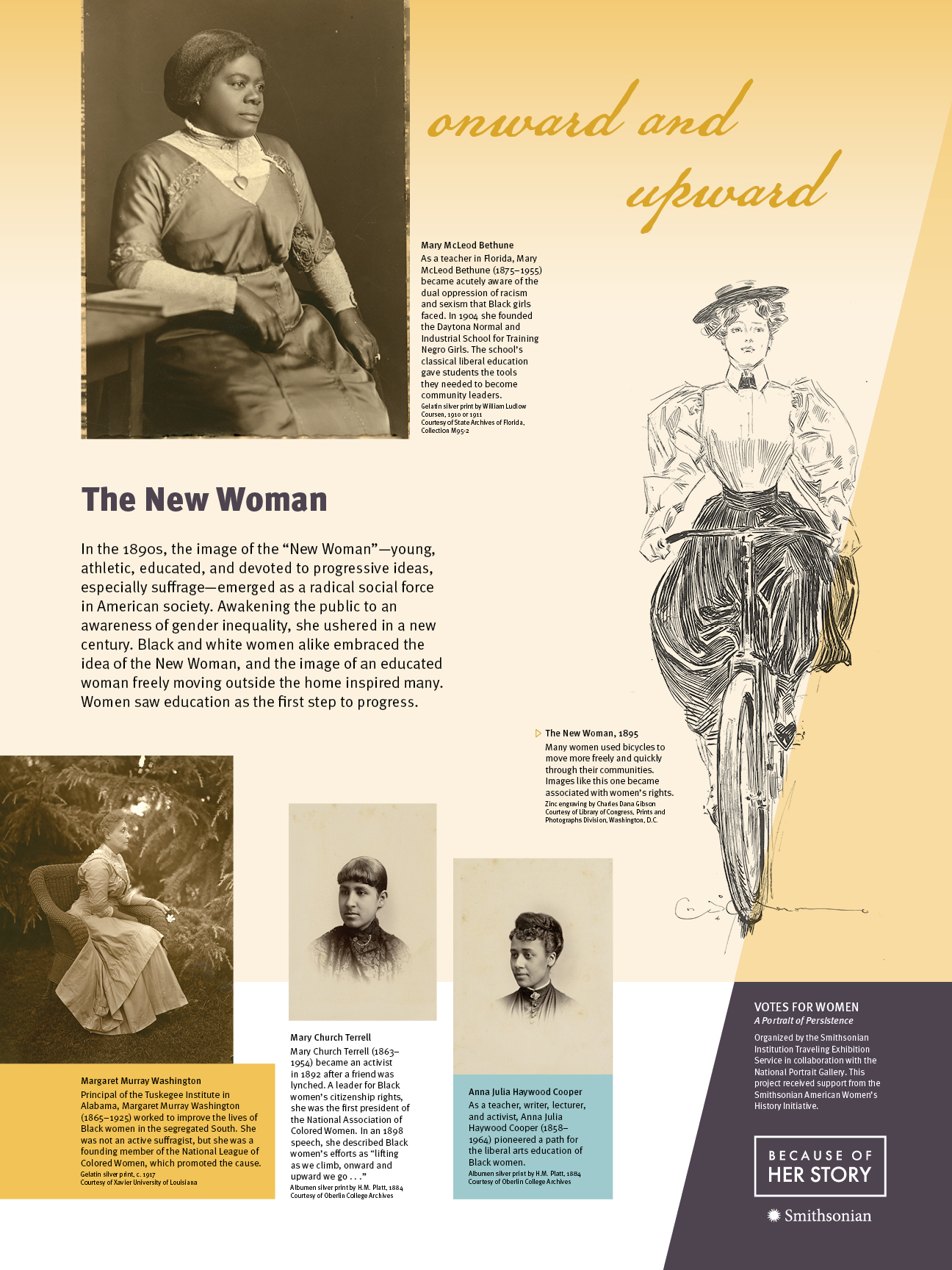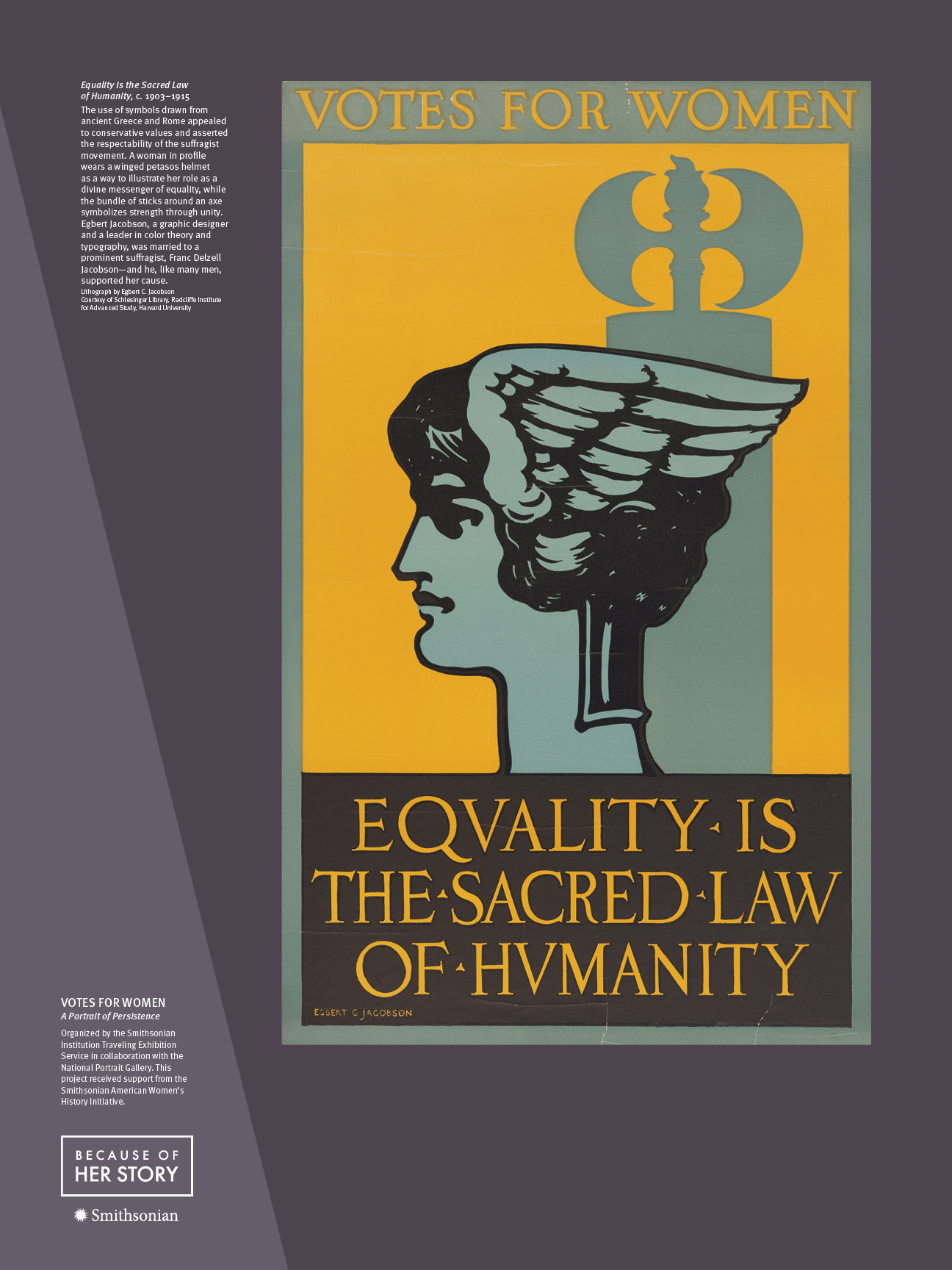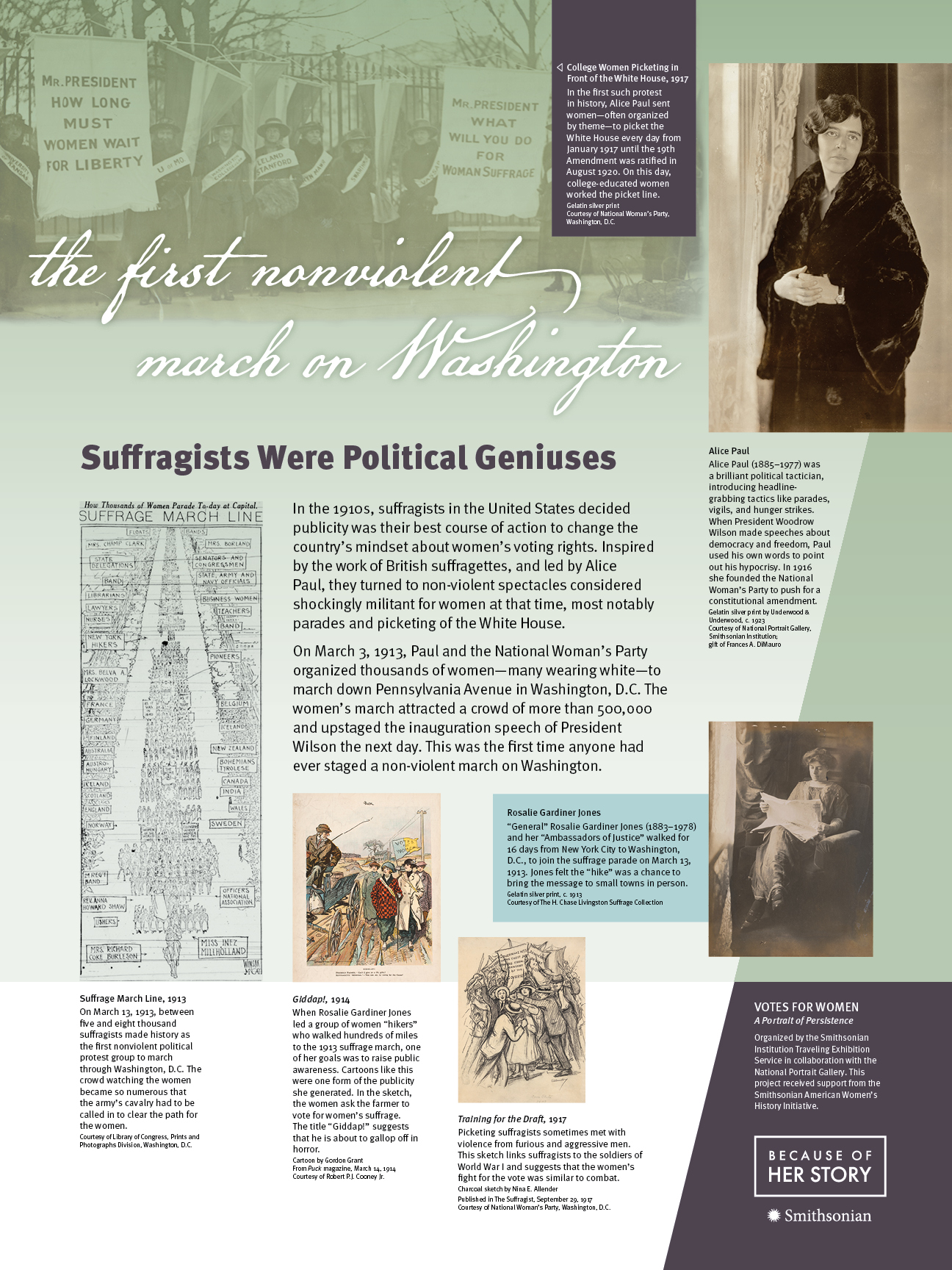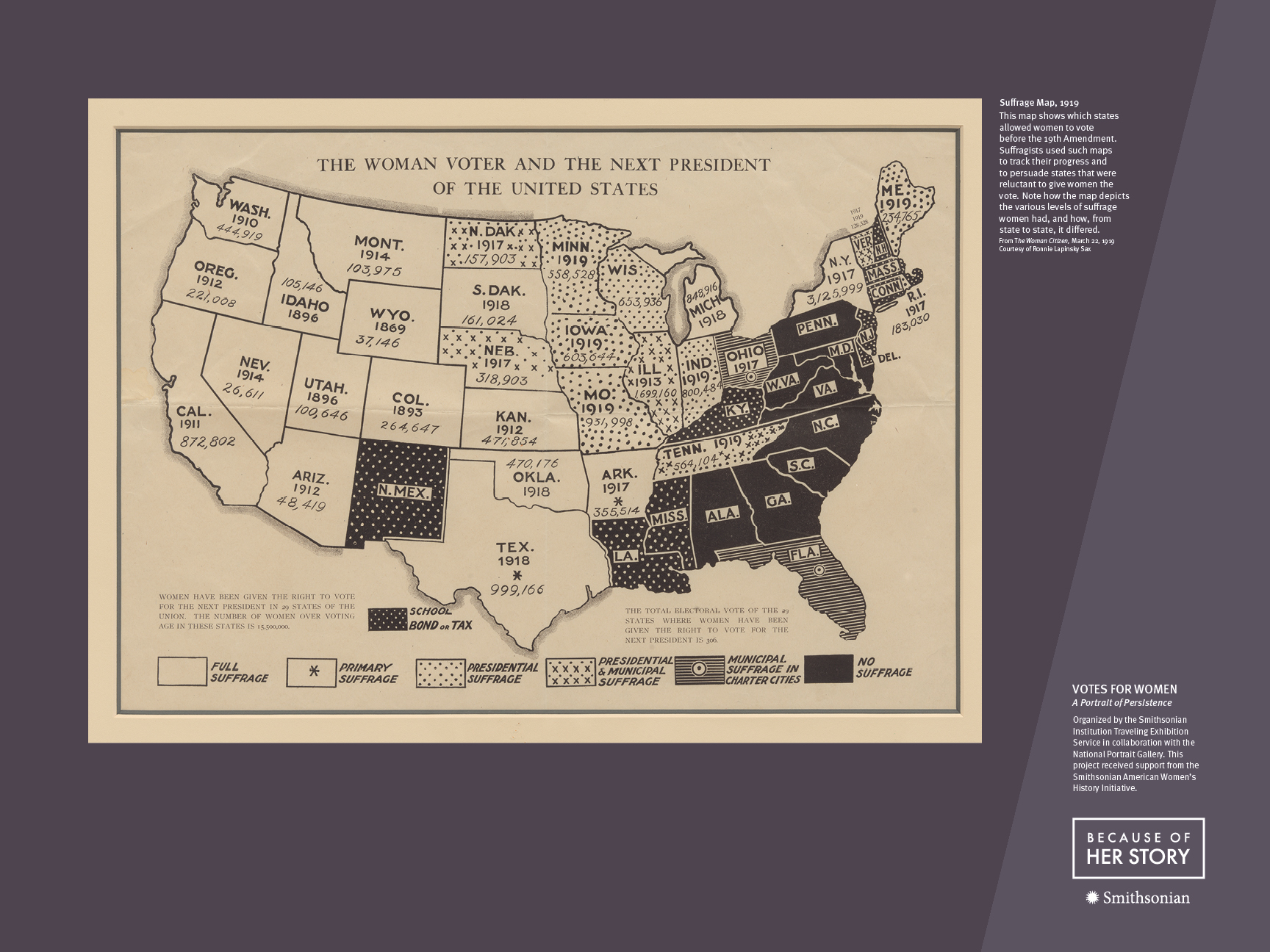Click on the tabs to view each exhibit.
Black Citizenship in the Age of Jim Crow
In recognition of 151st anniversary of the passage of the 15th Amendment, MOSH is proud to host Black Citizenship in the Age of Jim Crow. This exhibit explores the struggle for full citizenship and racial equality that unfolded in the 50 years after the Civil War. When slavery ended in 1865, a period of Reconstruction began, leading to such achievements as the Fourteenth and Fifteenth Amendments to the Constitution. By 1868, all persons born in the United States were citizens and equal under the law. But efforts to create an interracial democracy were contested from the start. A harsh backlash ensued, ushering in a half century of the “separate but equal” age of Jim Crow. This exhibition has been organized by the New-York Historical Society.
This poster exhibition, produced in connection with the 2018 NYHS exhibition of the same name, explore the contested efforts toward full citizenship and racial equality for African Americans that transpired in the fifty years after the Civil War. The period between the end of slavery in 1865 and the end of World War I in 1919 saw African Americans champion their rights as the “separate but equal” age of Jim Crow began. Examining both the activism for and opposition to black citizenship rights, the works of art, political cartoons, photographs, documents, primary accounts, and timelines underscore how ideas of freedom and citizenship were redefined by government and citizen action, and challenged by legal discrimination and violence.
View the New York Historical Society’s 360-degree virtual tour of Black Citizenship in the Age of Jim Crow, based on the original 2018 traveling exhibit, by visiting blackcitizenship.nyhistory.org. The website also includes a family discussion guide (recommended ages 8 and up) and link to educational curriculum.
For additional information on this exhibition, please visit https://www.nyhistory.org/exhibitions/black-citizenship-age-jim-crow or email the New-York Historical Society at historyexhibits@nyhistory.org.
Science Behind the News: Viruses
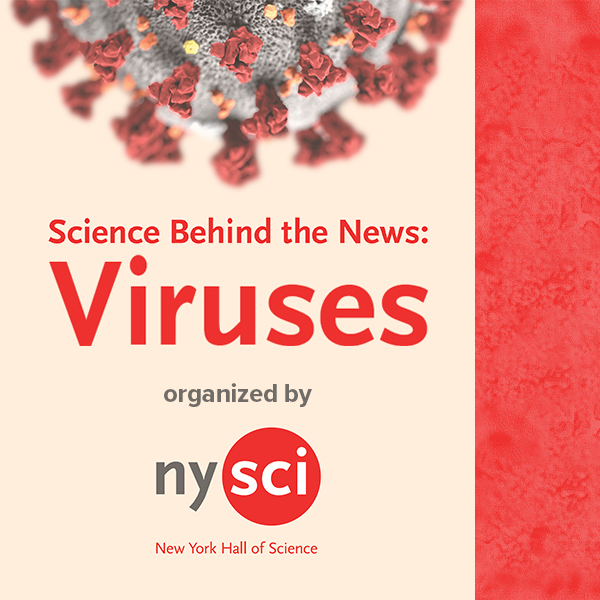
As a service to our community during the present coronavirus pandemic, MOSH is pleased to present an online exhibition organized by The New York Hall of Science (NYSCI) – Science Behind the News: Viruses. NYSCI has graciously arranged to share this bilingual exhibition about COVID-19 through organizational members of the Association of Science and Technology Centers (ASTC).
NYSCI also has developed an online, digital, interactive comic called Transmissions: Gone Viral. This comic is about the spread of the West Nile virus and focuses on how to use scientific evidence to understand and combat viruses. NYSCI also provides an activity guide and a downloadable, non-interactive print version of the comic. This project was supported by the National Institute of General Medical Sciences and the National Institutes of Health. The content is solely the responsibility of the authors and does not necessarily represent the official views of the National Institutes of Health.
For another online exhibit about viruses, visit Outbreak: Epidemics in a Connected World, presented by the National Museum of Natural History.
Thank you to our online exhibition presenter
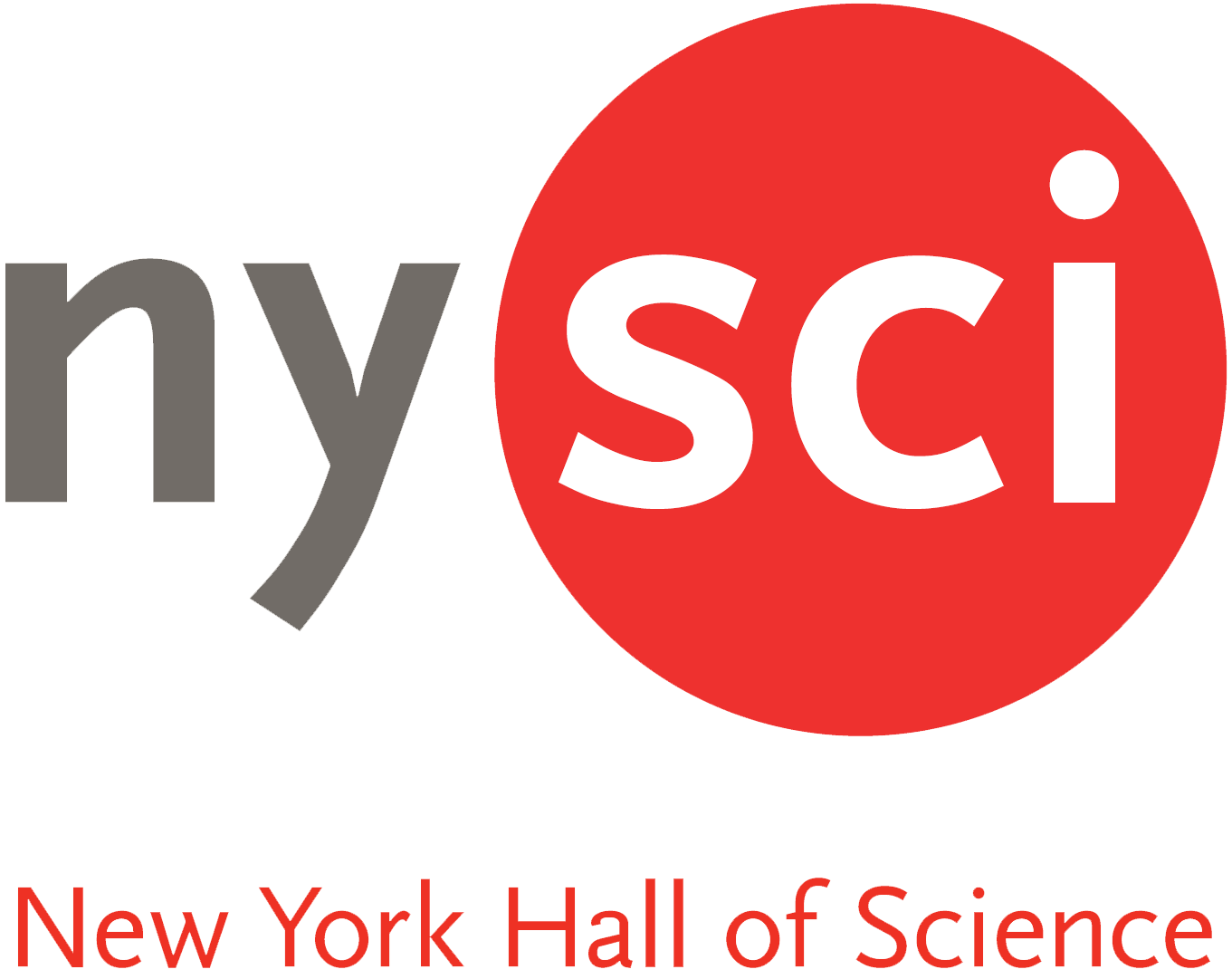
Choosing to Participate
The COVID-19 pandemic is the latest in a long line of emergencies that have challenged our nation and our world. One thing that history has taught us, unfortunately, is that fear, anger and prejudice drive some people to find scapegoats to blame and victims to stigmatize in times like this.
In 2017 and 2018, MOSH hosted a poster exhibit called Choosing to Participate, organized by the Smithsonian Institution Traveling Exhibition Service (SITES) and Facing History and Ourselves. The exhibit examines the impacts of racism and injustice and the choices we can make to ensure that our communities are supportive and inclusive. The exhibit carries a strong anti-bullying message and asks if we choose to be an upstander or a bystander when we witness people attacking others.
Thanks to SITES, MOSH is pleased to present Choosing to Participate as an online exhibit. An accompanying book for teachers is available for downloading at https://www.facinghistory.org/books-borrowing/choosing-participate-revised-edition.
You can click a poster image to open a larger zoomable version of that image in a new browser tab.
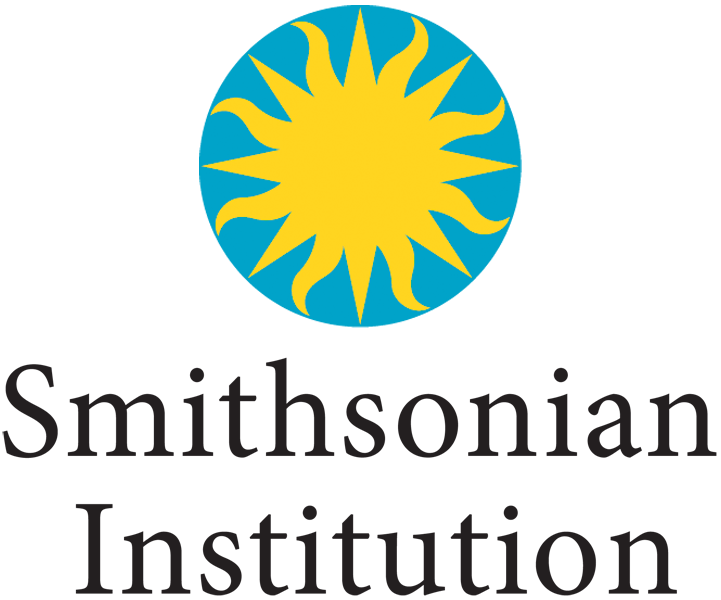
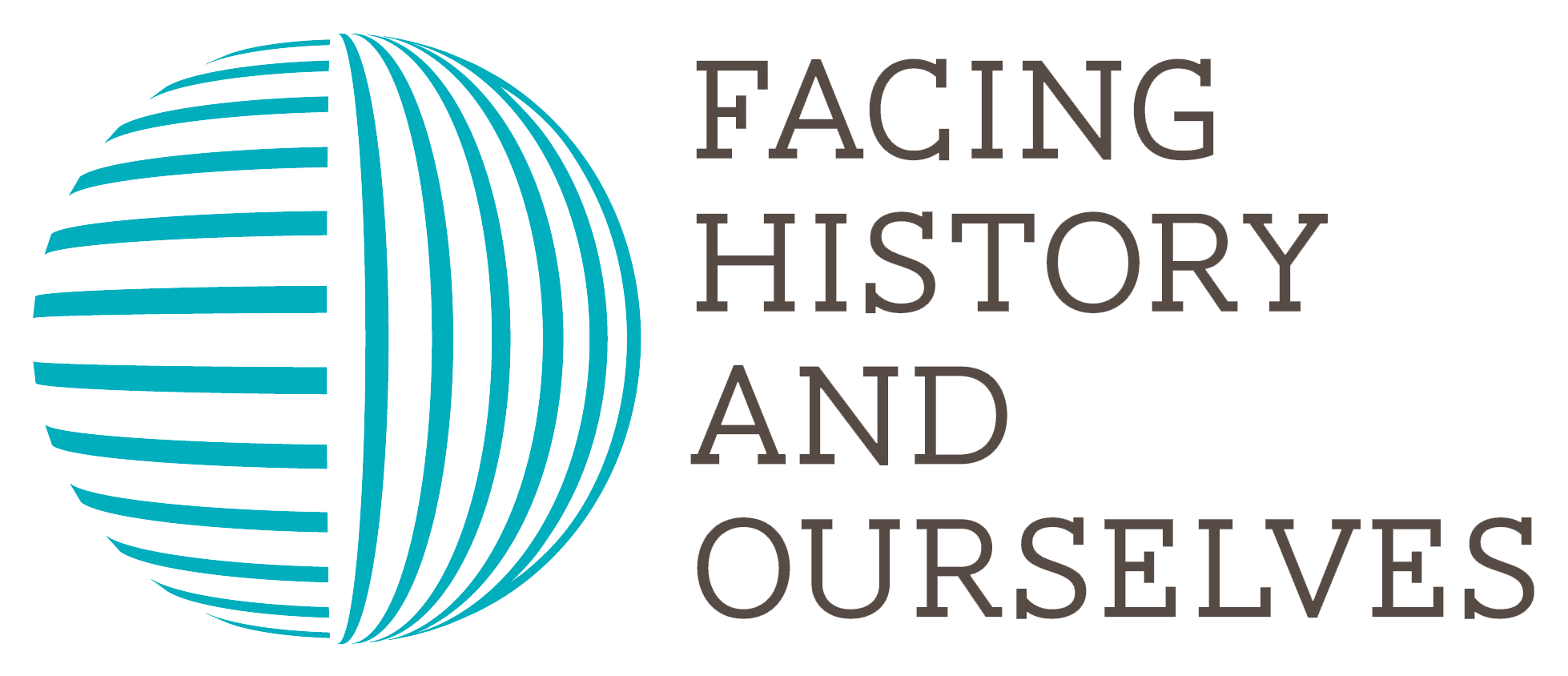
Neighborhoods
From September 2018 to May 2019, MOSH presented a signature exhibit titled, Neighborhoods. Although a portion of the exhibit is now traveling to other Duval County venues, MOSH has made this exhibit available to folks who are staying at home because of the COVID-19 pandemic.
Like its physical counterpart, the online Neighborhoods exhibit outlines the historical development of Jacksonville’s many and varied neighborhoods, from early river communities to automobile-based suburbs. The exhibit also underscores the importance of vibrant, healthy neighborhoods to the city’s identity and well-being.
MOSH is grateful to the many community partners that made this exhibit possible.
You can click a door panel to open a larger zoomable image of that door in a new browser tab.
Jax Genius
One of the things that defines Jacksonville as a place are the contributions its residents have made to the state, the nation and the world. Duval County and its environs have been home to a variety of well-known figures (and those who should be well-known) who have left a lasting legacy in the fields of art, architecture, music and dance, literature and technology.
This online exhibit showcases the work of twelve of these individuals, although there are many more. The following biographical summaries, presented as spy-type dossier files, highlight some of these people’s achievements and their connections to Jacksonville. These twelve makers continue to inspire as Jacksonville aspires to be a center for creativity and innovation.
If you were to create dossiers about notable Jax Geniuses, who would you include? Ray Charles? Diana Eng? Rebecca Heflin? James Weldon Johnson? Henry Klutho? Richard Norman?
The content for Jax Genius comes from a signature exhibit, Mission: Jax Genius, created by MOSH in 2018.
You can click a dossier panel to open a larger zoomable version of that image in a new browser tab.
Collections Curiosities
MOSH manages a collection of more than 36,000 artifacts and specimens in six distinct collections for the purposes of exhibition, research, reference and hands-on learning. Collections include: artifacts representing northeast Florida history, natural science specimens from around the world, living animals, the MOSH archives, and a reference library.
As is the case with most museums, only a small percentage of MOSH’s collections are on public view in exhibitions. Collections Curiosities provides an online tour of some of the fascinating historical treasures and natural science objects that reside behind closed doors. From local photographs to a shark jaw, these items shed some light on the diversity of topics and formats collected by MOSH, the museum where “curiosity is welcome.”
You can click an object panel to open a larger zoomable version of that image in a new browser tab.
Votes for Women: A Portrait of Persistence
In honor of the 100th anniversary of the ratification of the Nineteenth Amendment to the United States Constitution on August 18, 2020, MOSH is pleased to present the online exhibition, Votes for Women: A Portrait of Persistence. This exhibition is organized by the Smithsonian Institution Traveling Exhibition Service in collaboration with the National Portrait Gallery. This project received support from the Smithsonian American Women’s History Initiative, Because of Her Story.
Based on the National Portrait Gallery exhibition of the same name, Votes for Women explores the complexity of the women’s suffrage movement and the relevance of this history to Americans’ lives today. The exhibition addresses women’s political activism, explores the racism that challenged universal suffrage, and documents the ratification of the Nineteenth Amendment which prohibits the government from denying U.S. citizens the right to vote on the basis of gender. It also touches upon the suffrage movement’s relevance to current conversations on voting and voting rights across America.
You can click an object panel to open a larger zoomable version of that image in a new browser tab.


